FEATURED OUTLAW: BETSY GAINES QUAMMEN
RYAN ZINKE ON THE OUTDOOR EXPERIENCE
WOLVES: HEAR THEM HOWL
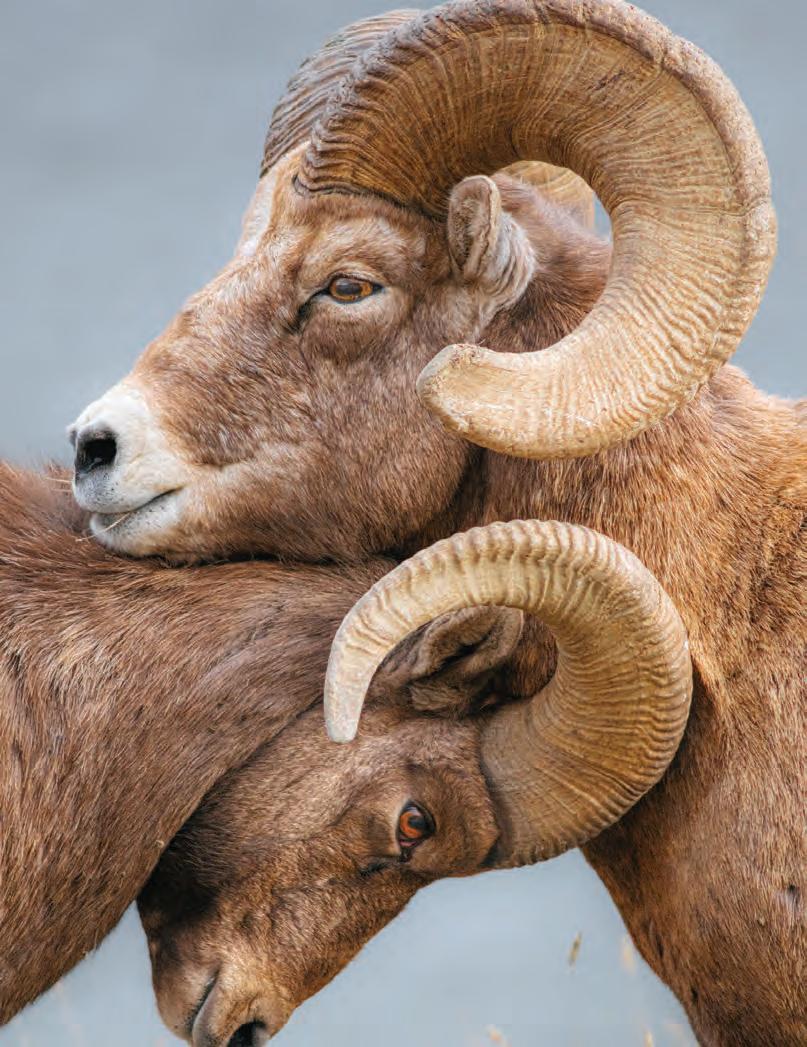
CELEBRATING BLACKFEET STORIES
FREE SUMMER 2024
our west
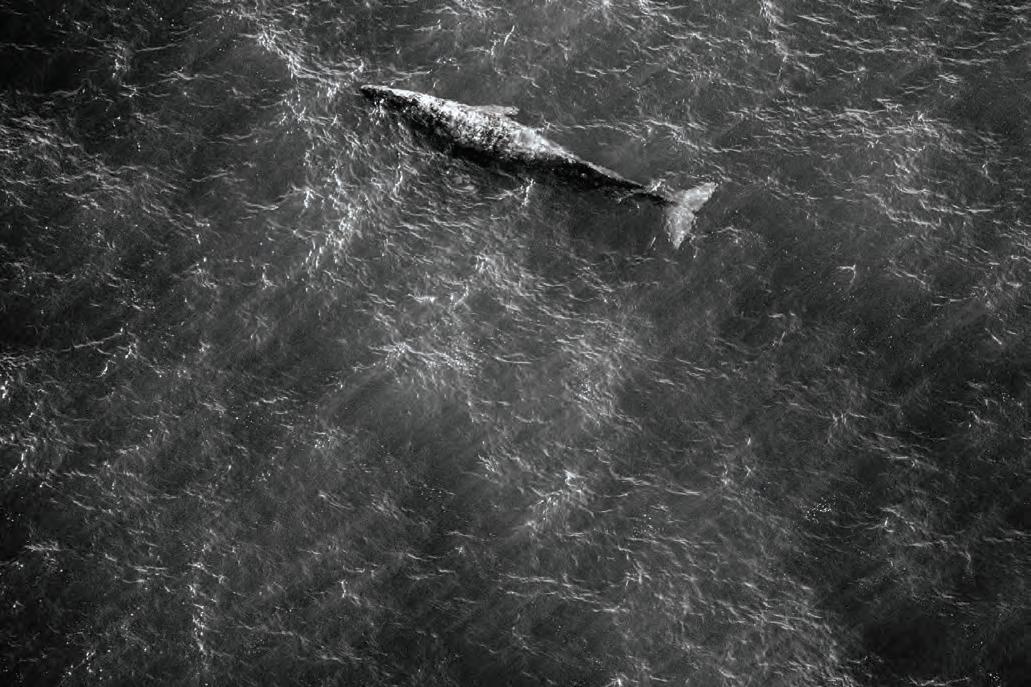
2




3 KENE SPERRY - FINE ART WWW.KENESPERRY.COM
SCAN TO MEET THE ARTIST



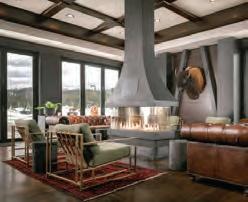
4 406.995.2233 . 145 TOWN CENTER AVE . BIG SKY, MT 59716 . BLOCK3BIGSKY.COM Chophouse . Montana Fare . Whiskey & Bourbon . Hand Crafted Cocktails Big Sky, MT thewilsonhotel.com

5 OUR FLEET, AT YOUR SERVICE www.stajets.com | (844) FLY-STA1
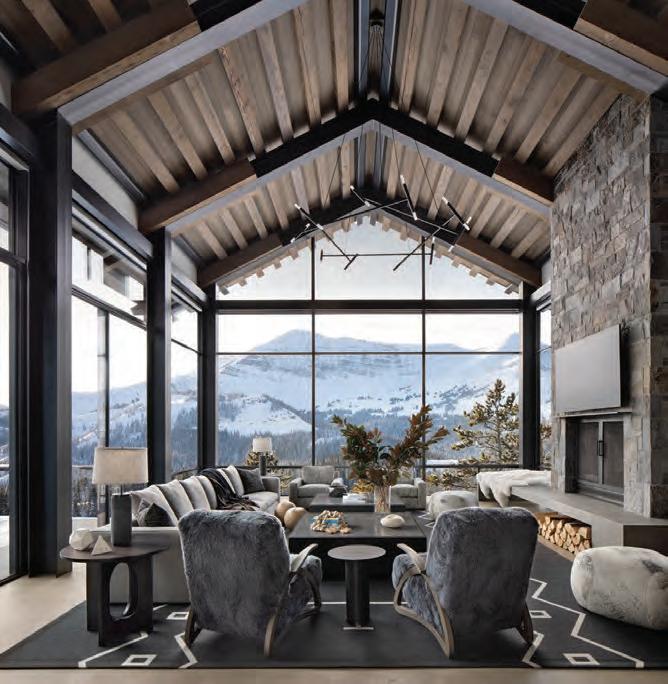
6 EST. 1997 Big Sky, MT bigskybuild.com 406.995.3670 REPRESENTING AND BUILDING FOR OUR CLIENTS SINCE 1997


SCHEDULE YOUR SVALINN RANCH VISIT TODAY.
BRED TO LOVE. TRAINED TO PROTECT.
Photo: Ted Wells

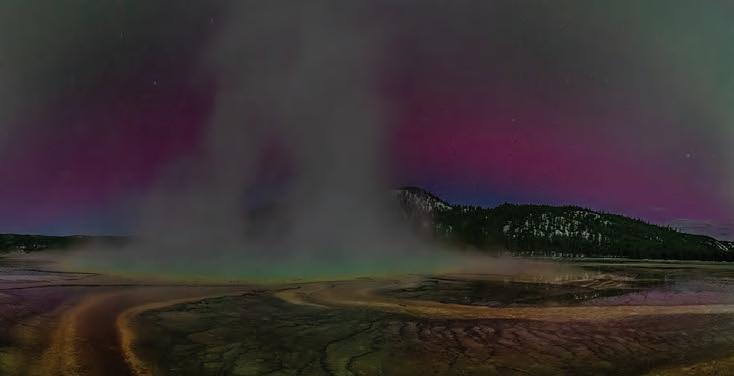
46
The River That Reveals Us
The Grand Canyon is in many ways a different experience today for the 29,000 annual river runners than it was when John Wesley Powell braved the unknown corridor in 1869, but one thing that never ages is the reverence this magnificent landscape inspires. Through the lens of her own trip in the Big Ditch juxtaposed by Powell’s, Mountain Outlaw Managing Editor Bella Butler contemplates how immersion in wild spaces can bring us in closer relationship to them, and how the Grand Canyon’s Colorado became The River That Reveals Us.
116
Echoes from the Nitowas
Indigenous peoples have long been the stewards of stories in what is today called the American West. In the Nitowas, the homelands of the Blackfeet, Lailani Upham is carrying on tradition with her business Iron Shield Creative, where her people’s stories are not only protected from oppression’s attempted cultural erosion, but also celebrated and passed on. Writer Chandra Brown shines light on Upham’s effort to honor the Echoes of the Nitowas.
98
The Gila
One hundred years ago, the United States Congress answered the pleas of a young Forest Service ranger named Aldo Leopold when it designated 755,000 acres in New Mexico as the nation’s first Wilderness. Home to rolling topography, diverse plant and animal species and New Mexico’s only free-flowing river, the Gila Wilderness is a place of inspiration, and for writer and Nuevomexicana LeeAnna T. Torres, it embodies her querencia, her native homeland. In her poignant personal essay, Torres considers what it means to celebrate a place, and how to truly honor The Gila.
9
SUMMER
The northern lights at Grand Prismatic Spring in Yellowstone National Park. On May 10, 2024, much of North America was treated to a particularly bright solar storm, sending splashes of color across the night sky in a dazzling aurora borealis. Photo by Paul Holdorf
FEATURES
2024

10
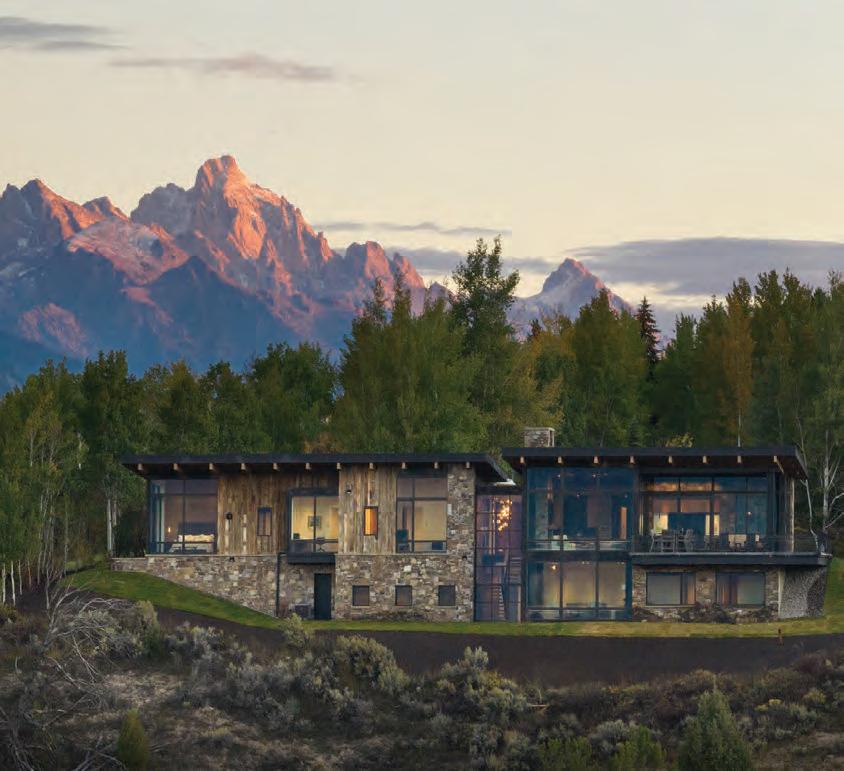

11 YOU DREAM. WE BUILD. BIG SKY | JACKSON TETONHERITAGEBUILDERS.COM “THB HAS ALL THE QUALITIES YOU WANT IN A BUILDER; QUALITY, VALUE, INNOVATION, INTEGRITY, ORGANIZATION, AND PERSONALITY” -REID SMITH ARCHITECTS
DEPARTMENTS
FOREWORD
20 Betsy Gaines Quammen likens the West to a constellation
TRAILHEAD
24 Explore our editor’s picks for all things Mountain West
LOOKING FORWARD, LOOKING BACK
30 Catch up with poignant Mountain Outlaw stories from past issues
OUTBOUND GALLERY
34 Harvest: Viewing our relationship to land through the lens of harvesting food
ADVENTURE
46 The River that Reveals Us Navigating relationship to landscape in the Grand Canyon
52 Artificial Adventures A modern mountain odyssey generated by ChatGPT
60 Mapping the Wild Within The holy grail of backcountry travel in Greater Yellowstone gets an encore
65 King of the Roadtrip An insider’s guide to making the most of your Montana road trip
72 Amplifying Outdoor Narratives BeAlive Studios joins Bozeman’s thriving film scene LAND
76 Hear them Howl Can understanding how wolves communicate lead us to respectful coexistence?
91 Sustaining the Spirit of Conservation Exploring the region’s history with conservation
98 The Gila Celebrating the centennial of the nation’s first Wilderness through personal narrative
104 The ‘Red, White and Blue Team’ Rep. Ryan Zinke on the outdoor experience
CULTURE
116 Echoes from the Nitowas A Blackfeet storyteller excavates truth through narrative
124 Livin’ in the Arts Through his lyricism, Mike Beck chronicles the life of an artist in the West
132 Funk’s Workshop A Big Fork blacksmith’s cultural imperative to preserve his craft
CREATIVE
138 Poem: Manifest Density Observing the evolution of the West
142 Art: Out West Giving a voice to queer perspectives in the mythic West
146 The Profane Reverence of Chris La Tray An exploration of identity with Montana’s Poet Laureate
150 Fiction: Blazing Hearts on Rampage Mountain A Western 1940s tale of love in a fire lookout
FEATURED OUTLAW
156 Betsy Gaines Quammen: Finding hope in our collective True West
LAST LIGHT
176 Lighting of the Teepees
84 Building in a Dichotomy The risks—and solutions—to living in the Wildland Urban Interface 142 52
ON THE COVER
A lesser Bighorn ram bows to his elder. Initially this interaction seemed primed for a violent butting of heads, with both rams sweeping horns back and forth. The smaller of the two made a half-hearted charge, but just before impact lowered his head and placed it gently on the neck of his opponent. Captured along the banks of the Yellowstone River near Corwin Springs, Montana, these rams were only part of a large herd of Bighorns in the valley. A symbol for opposing ideas in the American West, this issue encourages readers to take a step back and seek understanding before butting heads. Photo by Ian Lange
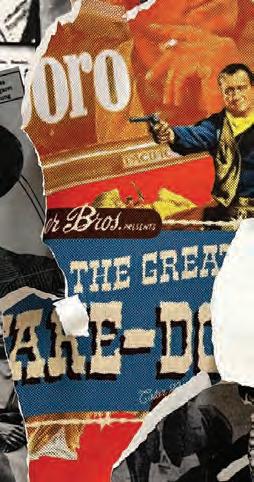

12


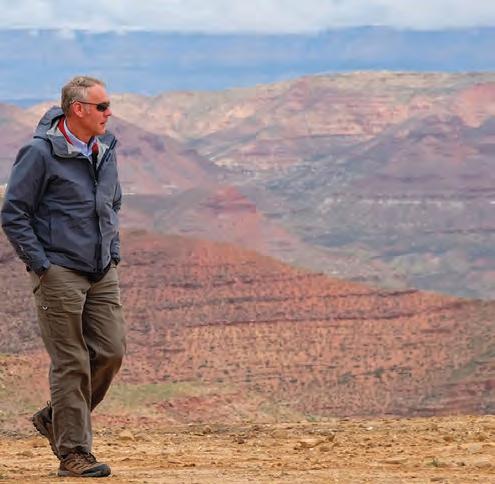
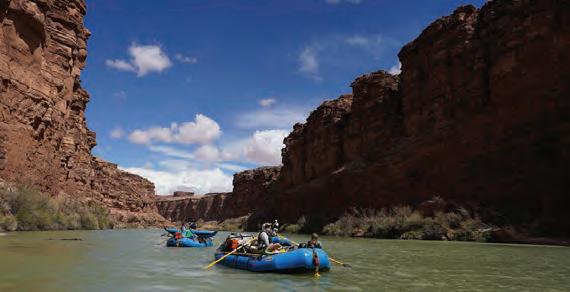
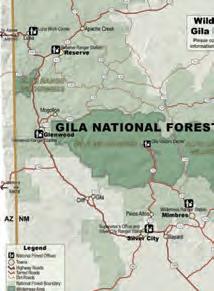


104 46 124 116 34 132 98


Your Home, Our Passion
Setting a New Standard in Property & Rental Management

We understand that your home is more than just a property—it’s a part of your legacy. At Big Sky Luxury Vacations & Management, our property and rental management program is designed to maximize rental revenue opportunities while ensuring properties maintain their pristine charm. Our team of professionals handles all aspects of property and rental management from routine repairs and emergency services to keeping your home marketed and booked. With over twenty five years of combined experience, our seasoned staff ensures consistency and reliability in every aspect of our operation. We pride ourselves in offering more personalized experiences for both guests and homeowners, so your property will be a priority, and won’t be lost in the shuffle. Experience transparent billing without hidden fees, and entrust your home to a team dedicated to preserving its luxury and charm. For unparalleled
15
Property
bigskyluxuryvacations.com
property and rental management services in Big Sky, call Jake, Director of
Management, at 855.475.4244.
Owned and published in Big Sky, Montana
PUBLISHER
Eric Ladd
VP MEDIA
Mira Brody
MANAGING EDITOR
Bella Butler
ART DIRECTOR
Robyn Egloff
EDITORIAL ASSISTANT
Fischer Genau
CONTENT MARKETING
Taylor Owens
COPYEDITOR
Carter Walker
ART PRODUCTION
ME Brown
Megan Sierra
CONTRIBUTING WRITERS
SALES & ADVERTISING
Ersin Ozer
Patrick Mahoney
ACCOUNTING
Sara Sipe
Taylor Erikson
CHIEF
MARKETING OFFICER
Megan Paulson
CHIEF
OPERATING OFFICER
Josh Timon
VP DESIGN & PRODUCTION
Hiller Higman
DISTRIBUTION
Ennion Williams
Andrew Arena, Julia Barton, Chandra Brown, Lauren Burgess, Maggie Neal Doherty, Liv Hart, Michael Ober, Brad Orsted, Betsy Gaines Quamman, Emily Senkosky, Ednor Therriault, Toby Thompson, Leeanna T. Torres
CONTRIBUTING PHOTOGRAPHERS/ARTISTS
Julia Barton, London Bernier, Lynn Donaldson, Jacob W. Frank, Della Frederickson, Jeffery Funk, Dave Gardner, Liv Hart, Halle Hauer, Quinn Taubman Harper, Colin Hislop, Paul Holdorf, Louise Johns, Ian Lange, Bradley Lanphear, Freddy Monares, Cassidy Motahari, Alex Nelson, Kyle Niego, Jim Peaco, Ben Pierce, Emmy Reed, Micah Robin, Chris Sawicki, Kehana Rose, Emily Senkosky, Ethan Schumacher, David Scott, Troy Smith, Jade Snell, Paige Southwood, Blair Speed, Charles Stemen, Madeline Thunder, Kyle Tilleman, LeeAnna T. Torres, Jim Urquhart, Bob Wick
Subscribe now at mtoutlaw.com/subscriptions.
Mountain Outlaw is distributed to subscribers in all 50 states, including contracted placement in resorts and hotels across the West. Core distribution in the Northern Rockies includes Big Sky, Bozeman and Missoula, Montana, as well as Jackson, Wyoming, and the four corners of Yellowstone National Park.
To advertise, contact Ersin Ozer at ersin@outlaw.partners or Patrick Mahoney at patrick@outlaw.partners.
OUTLAW PARTNERS & Mountain Outlaw
P.O. Box 160250, Big Sky, MT 59716 (406) 995-2055 • media@outlaw.partners
© 2024 Mountain Outlaw Unauthorized reproduction prohibited

Check out these other outlaw publications: Subscribe to and read Mountain Outlaw online.

from the publisher
Dear Mountain Outlaw readers,
I would like to personally welcome you to the 28th edition of Mountain Outlaw. Our team of talented editors, writers, graphic designers and staff have created another beautiful publication for your enjoyment in homes and offices around the world. Creating a quality, free magazine in 2024 is no easy task, but we remain committed and thankful for support through our loyal advertisers and subscribers.
As we enter our 15th year of printing this publication, the team has dedicated this edition to sharing stories and tales of Our West. True to the magazine’s founding spirit, you’ll find interesting content and interviews examining lifestyle, culture and relevant issues.
From Montana Rep. Ryan Zinke talking about his passion for the outdoors and conservation policy, to Blackfeet narrative storytelling, wild outdoor adventures and Betsy Gaines Quammen’s concept of True West —there’s something for every ‘westerner’ at heart.
My personal passion for the West, its landscapes, history, people, and tales fascinate me and I’m grateful to have called this home for 50 years. I recently stumbled on Arthur Chapman’s poem that encapsulates my feelings for this region; I will let his words take it from here.
Eric Ladd Publisher
Out
Out where the handclasp’s a little stronger, Out where the smile dwells a little longer, That’s where the West begins; Out where the sun is a little brighter, Where the snows that fall are a trifle whiter, Where the bonds of home are a wee bit tighter, That’s where the West begins.
Out where the skies are a trifle bluer, Out where the friendship’s a little truer, That’s where the West begins; Out where a fresher breeze is blowing, Where there’s laughter in every streamlet flowing, Where there’s more of reaping and less of sowing, That’s where the West begins.
Out where the world is in the making, Where fewer hearts in despair are aching, That’s where the West begins. Where there’s more of singing and less of sighing, Where there’s more of giving and less of buying, And a man makes a friend without half trying— That’s where the West begins.
16
Visit outlaw.partners to meet the entire Outlaw team.
Where the West Begins by Arthur Chapman
featured contributors

LeeAnna T. Torres
The Gila | p. 98
Leeanna T. Torres is a native daughter of the American Southwest and a Nuevomexicana writer with deep Indo-Hispanic roots in New Mexico. She has worked as an environmental professional throughout the West since 2001, which included recovery efforts for the Gila trout. Her creativenonfiction essays have appeared in various print and online publications, and she is most interested in writing that explores where the physical and the Divine intersect.
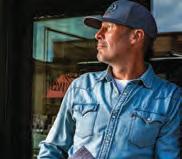
Brad Orsted Manifest Density | p. 138
Brad Orsted is a Montana-based, award-winning wildlife photographer, conservation filmmaker, author, speaker, poet and wilderness therapy advocate. His work can be seen on the BBC, PBS, Nature, Smithsonian Channel and Nat Geo Wild, as well as in The Wall Street Journal and The Washington Post. Orsted’s memoir, Through the Wilderness: My Journey of Redemption and Healing in the American Wild, chronicles the loss of his daughter, Marley, and his odyssey to find recovery and healing in the sanctuary of the Greater Yellowstone Ecosystem.
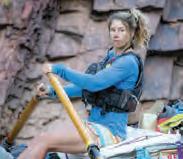
Chandra Brown
Echoes from the Nitowas | p. 116
Chandra Brown is a writer, river guide and educator originally from Alaska. She has worked within the realm of river conservation since her 2010 Fulbright grant to Ecuador. She is the founder and director of Freeflow Institute, an arts organization that seeks to connect humans to their environments. Brown worked as senior editor at Camas magazine, and her writing has been featured in Adventure Journal, The Dirtbag Diaries, Patagonia, Bomb Snow and Kayak Session magazine, among other publications. Brown, her sweetheart and their two canine roommates are home-based in Missoula, Montana.

Liv Hart
Out West | p. 142
Liv Hart is a multi-disciplinary artist, designer and storyteller currently based in Brooklyn, New York. She focuses her practice in the realm of activism—pertaining particularly to queer rights and histories—and experiments in both tactile and digital formats to uncover and relay stories. When she's not in the studio, she enjoys skiing, traveling, and playing guitar.

Maggie Neal Doherty
The Profane Reverence of Chris La Tray | p. 146
Maggie Neal Doherty is a freelance journalist, opinion columnist and book critic. Her work has appeared in The Guardian, The Washington Post, LA Times, SKI, High Country News and more. Since 2018 she's penned "Facing Main" for the Flathead Beacon. She lives in Kalispell, Montana with her family, and when she isn't skiing or rafting you'll find her with her nose in a book.
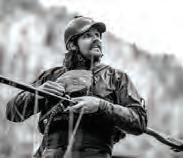
Dave Gardner
Harvest & Echoes from the Nitowas | pp. 34 & 116
Dave Gardner is an adventure and lifestyle photographer based out of Montana. Whether it’s a swamp in Arkansas, a river in Idaho or somewhere deep in the mountains, Gardner loves to use his camera to tell stories of wild people in wild places. If he’s not on the road working to fund his next adventure, he's probably out hunting, on a river somewhere, or eating tacos with his fiancé and their dog, Lou.
17
ONLY 6 RESIDENCES REMAIN!
2-3 BEDROOM FLOOR PLANS
RANGING FROM 1,600-2,300 SQFT
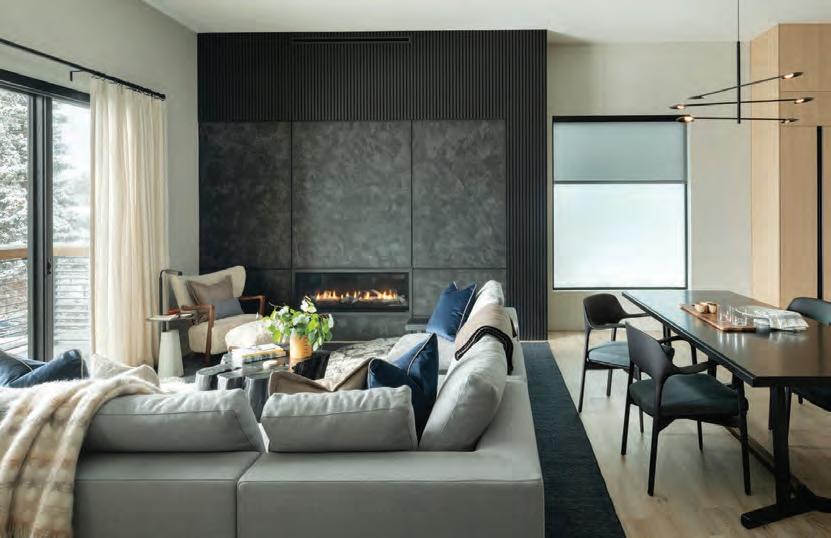
BESPOKE LIVING IN DOWNTOWN BOZEMAN
Discover the breathtaking masterpiece that is Wildlands, where the building has crossed the finish line and is truly spectacular. With only 6 residences remaining, now is the perfect time to schedule a tour and experience the unmatched living experience in Downtown Bozeman, Montana that Wildlands has to offer.



18
WWW.WILDLANDSBOZEMAN.COM | 406.995.2404 Scan the QR code to visit the website for floor plans, virtual tours, and more.






19 1565 Lone Mountain Trail, Big Sky, Montana www.acehardware.com | www.acebigskytools.com | (406) 995-4500 The helpful place in Big Sky with the T ls you need and the T s you want.
FOREWORD:
THE TRUTH OF THE WEST IS A CONSTELLATION
By Betsy Gaines Quammen

Editor’s Note: This issue was largely catalyzed by the concepts in Betsy Gaines Quammen’s 2023 book True West: Myth and Mending on the Far Side of America. Read more about Gaines Quammen, this issue’s Featured Outlaw, on p. 156.
Those of us who live here, and those who come to visit, all have versions of the West. In a place fixed by inescapable myths—unbridled liberty, pristine wilderness, rugged individualism, cowboy heroics, blank slates, “conquered spaces,” endless resources, and enduring frontier—we all see this place a little differently. The real West is a shimmering collage.
Over the last few years, I have gone from my home in Bozeman to find whether there is a “true” West. It has taken me to the grasslands of Wyoming, lands lonely for bison; to Colorado’s San Luis Valley, still home to families that have lived there since they obtained Spanish land grants; to eastern Montana plains, punctuated by badlands that made early European settlement brutal and often impossible; to posh restaurants, bathed in mountain alpenglow, that cater to monied second-home owners in Ketchum, Big Sky and
Telluride. I’ve also talked with members of various tribes about land, sovereignty and ongoing acts of resistance as these cultures celebrate long-held traditions; and I’ve spoken with conservationists waging battles against developers and mining companies.
As a region of landscape once traversed by galloping horses, then oxen pulling Calistoga wagons, then coal-fueled trains, and now Sprinter vans, the West continues to change. COVID-19 refugees seeking medical freedoms or the rumored palliative effects of desert and mountain air flooded old mining, ranching and sawmill towns. The ongoing onslaught of wealthy come-latelies seeking wilderness enclaves made it ever more difficult for working class people, and even professionals, to buy homes and afford to live in towns like Bozeman. Christian nationalists, lured by notions of religious homeland, separatism and hyper-freedom, stepped in to walk elbow-to-elbow with recreationists, drawn to the Northern Rockies to shred, slay and rip lands inhabited by elk, wolves and grizzlies.
People are building versions of truth on altars tumbling to pieces, without understanding the full picture, the
A Western night sky illuminates the landscape surrounding Devil’s Tower in Wyoming, known as Bear Lodge to many Northern Plains tribes, for which this geologic feature is sacred. Like this sparkling array of stars, author Betsy Gaines Quammen writes that the “truth of the West is a constellation.” Photo by aheflin/Adobe Stock

true West—the limits of land, vulnerable people, unique cultures and a history of colonization with its ongoing legacy of extraction. We are asking too much of this place. It is imperative to see the West as a fragile collection of livelihoods, expectations, economies, misunderstandings, ecologies, histories and cultures, all playing out (and competing) amid high-cragged mountains, glacier-scraped valleys, hogback ridges, rutted arroyos, sage-whiskered rangelands, wetlands, and booming towns beside those gone bust. These places show the marks of mistakes, heartbreaks and wounds, even as they retain (to varying degrees) their splendors. We need to understand each piece of the West before we comprehend the whole. The truth of the West is a constellation.
Betsy Gaines Quammen is a historian and writer. She received a PhD from Montana State University where she studied western history and early Mormon ideology. She is the author of American Zion: Cliven Bundy, God, and Public Lands in the West and True West: Myth and Mending on the Far Side of America. Betsy lives in Montana with her husband, writer David Quammen, two giant dogs, a sturdy cat and a lanky rescue python.

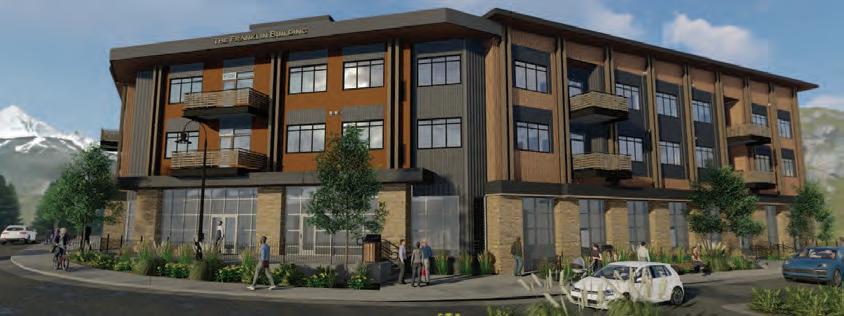



22 Big Sky Medical Center Big Sky Resort BASE Community Center Roxy’s Market Big Sky Events Arena Big Sky Golf Course
23 Unconditional Advice. +1 406.556.8200 | bitterrootcapital.com | 118 E Main Street, Bozeman, MT 59715
TRAILHEAD
By Fischer Genau
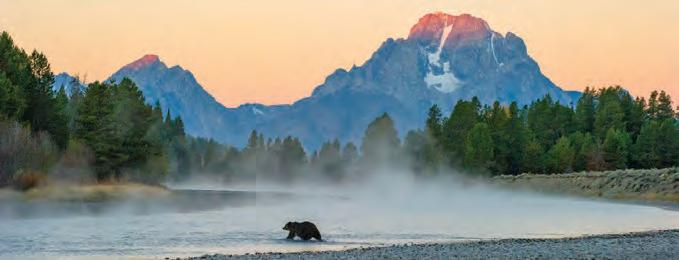

399: Queen of the Tetons
Conservation efforts have brought grizzly bear populations back from the brink in the West, but their increased presence has led to more human-bear encounters and raised the question of how to coexist with these symbols of the wild. This PBS film follows Grizzly 399, the most famous and photographed bear in Grand Teton National Park, as she raises her four cubs. But with increased pressure from climate change and human encroachment, her plight has come to exemplify the clash between humans and the wild. With the potentially imminent removal of grizzly bears from the Endangered Species List—which would make hunting them legal—this documentary tells a story of hope and heartbreak for the Queen of the Tetons. 399film.com

Indigenize the Plate
What sustains a culture? For Natalie Benally, a Diné woman from the Navajo Nation in New Mexico, it’s food. In Indigenize the Plate, a film from Tse’Nato’ and Visionmaker Media, Benally wrestles with how climate change and other modern factors have impacted her own cultural community’s ability to grow their own food, and in response she journeys to a Quechuan community in Peru to learn how its people have addressed the effects of climate change, resource extraction and water displacement in their own food system to sustain their Indigenous culture. Indigenize the Plate reminds us that even across continents, intrinsic human values like food can connect us, and we have much to learn from the things we hold in common. tsenato.com/itp
Browse all Trailhead features online

24

Virginia City: Exploring the Historic Demise of Henry Plummer
In 1863, now-Montana ghost town Virginia City was booming. Gold was discovered around nearby Alder Creek and within weeks, thousands of prospectors were flooding in to chase their fortune, bringing with them money, crime and the eventual demise of one Henry Plummer. Plummer was the sheriff of nearby Bannack, but before becoming a lawman he’d frequently found himself on its other side. He was convicted of second-degree murder in Nevada City, California, where he’d lived as a miner and rancher, and spent two years in San Quentin before he was pardoned for good character and civic performance. But soon after, he killed another man attempting a citizen’s arrest, and left California so as not to risk more jail time.
Shortly after Plummer’s arrival in Montana, and his subsequent election as sheriff, the rate of robberies and murders in Alder Gulch increased significantly. People in Virginia City, whose gold was being robbed from trains as they ferried it back from the frontier, grew suspicious of Plummer and his alleged gang “the Innocents,” and formed a posse of vigilantes to bring the thieves to justice.
After capturing one of them and eliciting a confession where Plummer was named ringleader, the vigilantes arrested the sheriff and hung him from his own gallows, ending the lawman’s tale on the end of a rope.
People can visit Virginia City today almost as it was in the days of Henry Plummer and be called back to the Wild West of outlaws and vigilante justice.
virginiacitymt.com

Yellowstone Highway Turns 100

This summer, the Wind River Scenic Byway is throwing its hundredth birthday party. This 34-mile stretch of the Yellowstone Highway wends its way through Wyoming’s Wind River Canyon, following the Bighorn River as it passes by Boysen Reservoir and under jagged stone pillars thrust up from the riverbed. Carved out of the rock in 1924 by 450 men with dynamite and steam shovels (several of whom lost their lives in the effort), this historic passage gives the modern-day explorer a glimpse into the West’s rugged past.
windriver.org/experience/driving-tours/ old-yellowstone-highway/
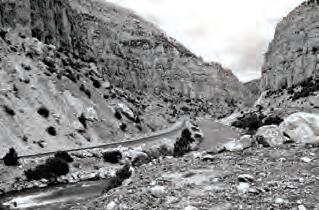

25
MT ID UT CO ND SD WYOMING ● SHOSHONI ● CASPER ● THERMOPOLIS YELLOWSTONE NATIONAL PARK ● GRAYBULL ● CODY WIND RIVER SCENIC BYWAY CHEYENNE ✪ THE YELLOWSTONE HIGHWAY 1924 2024 MONTANA ● VIRGINIA CITY
TRAILHEAD
Sponsored Content

Le Creuset's Alpine Outdoor Collection
The crackle of an open fire; the scent of wood smoke; the freedom of wide-open spaces. Though you won’t find any of these on an ingredient list in a recipe, they infuse food with a special kind of flavor that makes cooking outdoors essential to any good summer routine. Le Creuset's new Alpine Outdoor Collection celebrates this blend of nature and cuisine, offering three products designed to enhance outdoor cooking adventures: the Alpine Outdoor Skillet, the Alpine Outdoor Square Grill Basket and the Alpine Outdoor Pizza Pan for mouth-watering, versatile outdoor meals. All pieces in the Alpine Outdoor Collection are crafted from rugged enameled cast iron specifically designed for cooking over an open flame, and raised loop handles make them easy to carry or maneuver on grates. Plus they all come ready-to-use, are easy to clean and require no seasoning. When you’re ready for an outdoor adventure this summer, your cookware will be too with Le Creuset. lecreuset.com/alpine-collection

Magic Mind
Many of us can’t imagine our mornings without a cup of coffee. But what if we could enjoy its benefits—energy and alertness—without adverse effects like higher stress and trouble sleeping? Magic Mind’s mental performance shot is designed to be a new morning ritual, one that enhances focus and thinking, boosts mood and motivation, and creates a calm, sustained energy without the drawbacks of other caffeinated drinks. Using ingredients like lion’s mane mushrooms, matcha, turmeric, and immunity-boosting vitamins like C, D and Echinacea, Magic Mind has distilled mental endurance and precision and bottled it for human consumption. magicmind.com
Thinking Like a Mountain by Aldo Leopold
Aldo Leopold, conservation icon, philosopher, writer and woodsman, is best known for A Sand County Almanac, his loving, granular account of the ecology of his Wisconsin homeland. But he spent many of his early years as a ranger roaming the American West, where he traveled hundreds of miles on horseback, bow hunted wolves and eventually proposed designation of the first wilderness in the U.S., as further explored this issue in “The Gila” (p. 98).
In his 1949 essay “Thinking Like a Mountain,” Leopold describes the death of a wolf he shot with his companions, and the “fierce, green fire dying in her eyes.” Seeing that light go out, Leopold glimpsed something “known only to her and the mountain,” and it helped him see nature as an interdependent web where violence, beauty and death are inherent in life. This realization helped shape his subsequent work in conservation, and “Thinking Like a Mountain” reminds us that what is wild is essential, or, as Leopold quotes from Henry David Thoreau, “In wildness is the salvation of the world.” aldoleopold.org
26
Save Wild Trout
Wild trout populations in some of Montana’s famed rivers have sunk to historic lows in the last year, endangering fisheries as well as the millions of dollars brought in by anglers. Save Wild Trout, a coalition of anglers and river advocates concerned about their watershed, are investigating causes for wild trout population collapses in the Big Hole, Ruby and Beaverhead rivers, and they’re working to raise public awareness and develop sciencebased solutions. For them, wild trout populations are the canary in the coal mine of ecological threats facing Montana, and they encourage everyone to act before it’s too late to restore its cold-water fisheries. savewildtrout.org

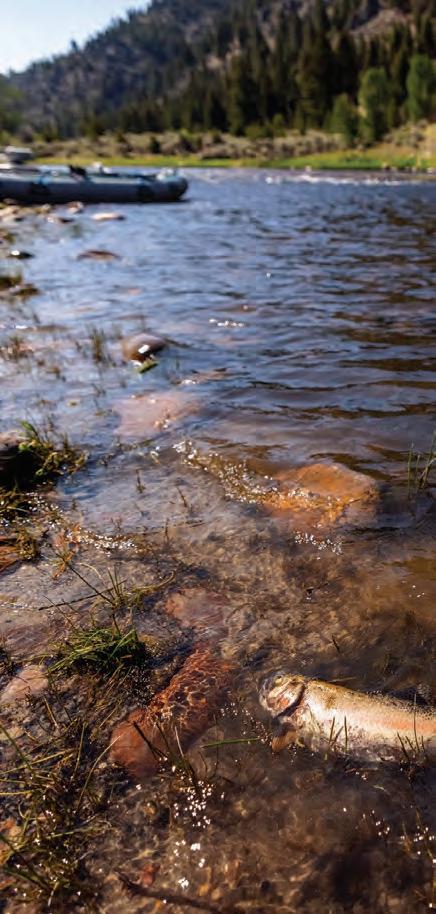
Death in the West
Death in the West is a true-crime podcast, but it has more to it than grisly murder and daring heists. Its first season tells the story of Frank Little, a union organizer who was dragged from his bed in the dead of night and murdered in Butte, Montana, in 1917, a death that went unsolved for 100 years. In its second season, this history podcast continues its work exploring “the American West’s strange crimes and unsolved intrigues.” deathinthewestpod.com
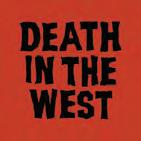
The Modern West
The range of topics explored by Wyoming Public Media’s The Modern West reflects the richness of Western culture and its history: a tribe’s fight to bring healthcare onto the reservation; presentday cowboys responding to climate change; the most expensive fire in Colorado history. Each season invites listeners to engage with the story of the modern West as they live it. www.themodernwest.org

Browse all Trailhead features online

27




“For us, it’s not just about nailing it. It’s about channeling the true vision of a
– Cory Reistad |

406.586.5593 | welcome@savinc.net SAV DIGITAL ENVIRONMENTS Innovative Luxury Technology Systems
project, rising above challenges, and never cutting corners.
SAV Digital Environments
Photos by Audrey Hall

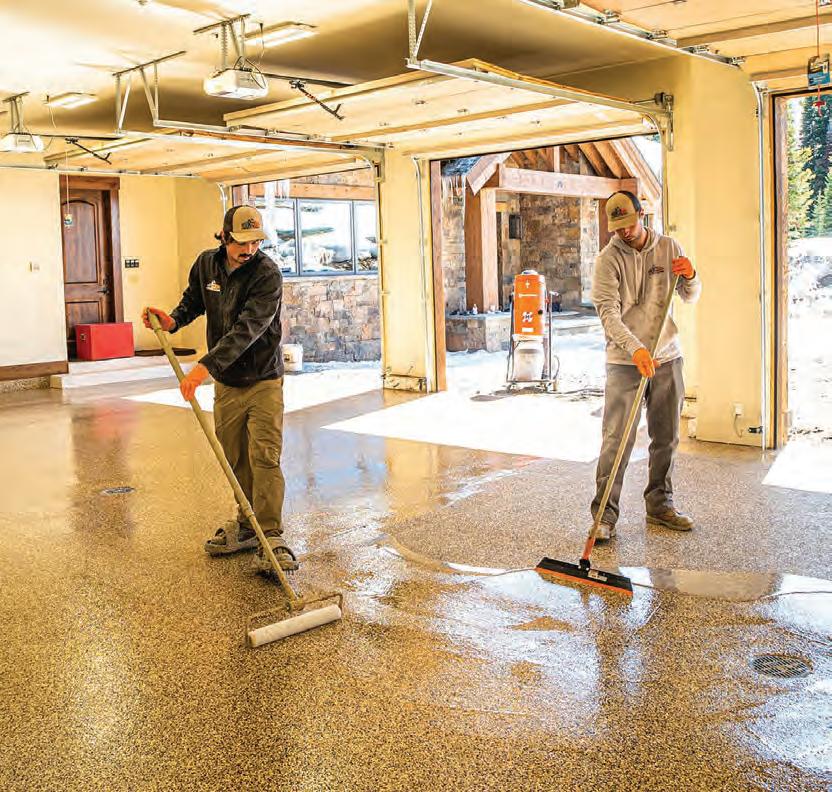
“WE’LL KNOCK OUT YOUR FLOORS IN 1 DAY” koconcretecoatings.com SCAN HERE FOR MORE INFO
By Fischer Genau
If there's one thing we know after more than a decade of covering the American West, it's that stories don't end. When an article goes to print, the lives and issues it presents live on. With that in mind, our editors revisited three past Mountain Outlaw articles to catch up with important subjects in the Mountain West.



2067: The Clock Struck Thirteen, Winter 2017
THE BACKGROUND:

Mountain Outlaw contributor Todd Wilkinson’s 2017 alarm-bell piece, 2067: The Clock Struck Thirteen, transported readers to a plausible dystopian future in the Greater Yellowstone Ecosystem in the year 2067, where climate change has converted snowy winters of lore to rainy, 60-degree Februarys.

THE UPDATE: Seven years after Wilkinson penned this article, and only 43 years away from 2067, a dismal snow year is the talk of the Greater Yellowstone Area. The Greater Yellowstone Climate Assessment, published in June 2021, projects a more-than 5-degree warming by the year 2100, as well as a 9 percent increase in precipitation yet 40 percent loss of snowpack. These numbers begin to render Wilkinson’s story as prophecy. Yet, other updates are cause for hope. Some of the region’s organizations with large footprints have made efforts, as demonstrated through Big Sky Resort’s pledge to achieve zero carbon emissions by 2030, and smaller green businesses are adding to the work through sustainable waste management and transportation. Climate change advocacy is also making waves in the judicial branch of government, with the 2023 triumph of 16 youth plaintiffs in their lawsuit against the state of Montana for its violation of their constitutional right to a clean and healthful environment.

30
An Economic Crossroads, Winter 2018
THE BACKGROUND:

In Mountain Outlaw’s Winter 2018 issue, contributor Claire Cella examined rapid population growth in mountain towns across the West, exploring both the opportunities as well as challenges such growth poses, including lack of affordable housing. At the time, Bozeman, Montana, was growing at a rate of 2-3 percent annually.
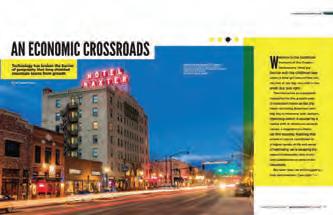
THE UPDATE: Population growth has tracked steady since Cella’s report; Bozeman’s population jumped more than 8.5 percent between 2020 and 2024. Big Sky Country MLS reported the median single-family home sale price in Bozeman’s Gallatin County at $749,900 in March 2024, a more-than 56 percent increase from March 2020. The trend is comparable for the state of Montana as a whole. In 2022, Montana Gov. Greg Gianforte responded to this issue by appointing a bipartisan housing task force, which helped pass a spate of bills that make it easier to construct new housing. Bozeman, as well as its parallels like Kalispell, Montana, and Jackson, Wyoming, still struggle to keep up with demand, evidenced through increasing urban camping and houseless communities. Side-by-side headlines reporting record-high real estate prices and affordable housing crises continue to tell Cella’s story today.
Gunfight, Summer 2022
THE BACKGROUND:

In our Summer 2022 issue, Mountain Outlaw profiled former firearms executive and author Ryan Busse. In a discussion centered on his 2021 memoir Gunfight, Busse criticized the role the gun industry plays in the nation’s increasing divisiveness, lent numbers to growth of gun sales in the U.S. and emphasized the relationship between freedom and responsibility.


THE UPDATE: Busse announced his bid for Montana governor in February 2024, challenging incumbent Gov. Greg Gianforte. A freshman in politics, Busse’s platform is founded on responding to the climate crisis, protecting and expanding voting rights, freedom of choice and responsible gun policy. Gun sales in the U.S. continue to hit record highs, with 2020-2023 comprising the four highest years on record since the FBI began tracking these numbers in 1998.

31
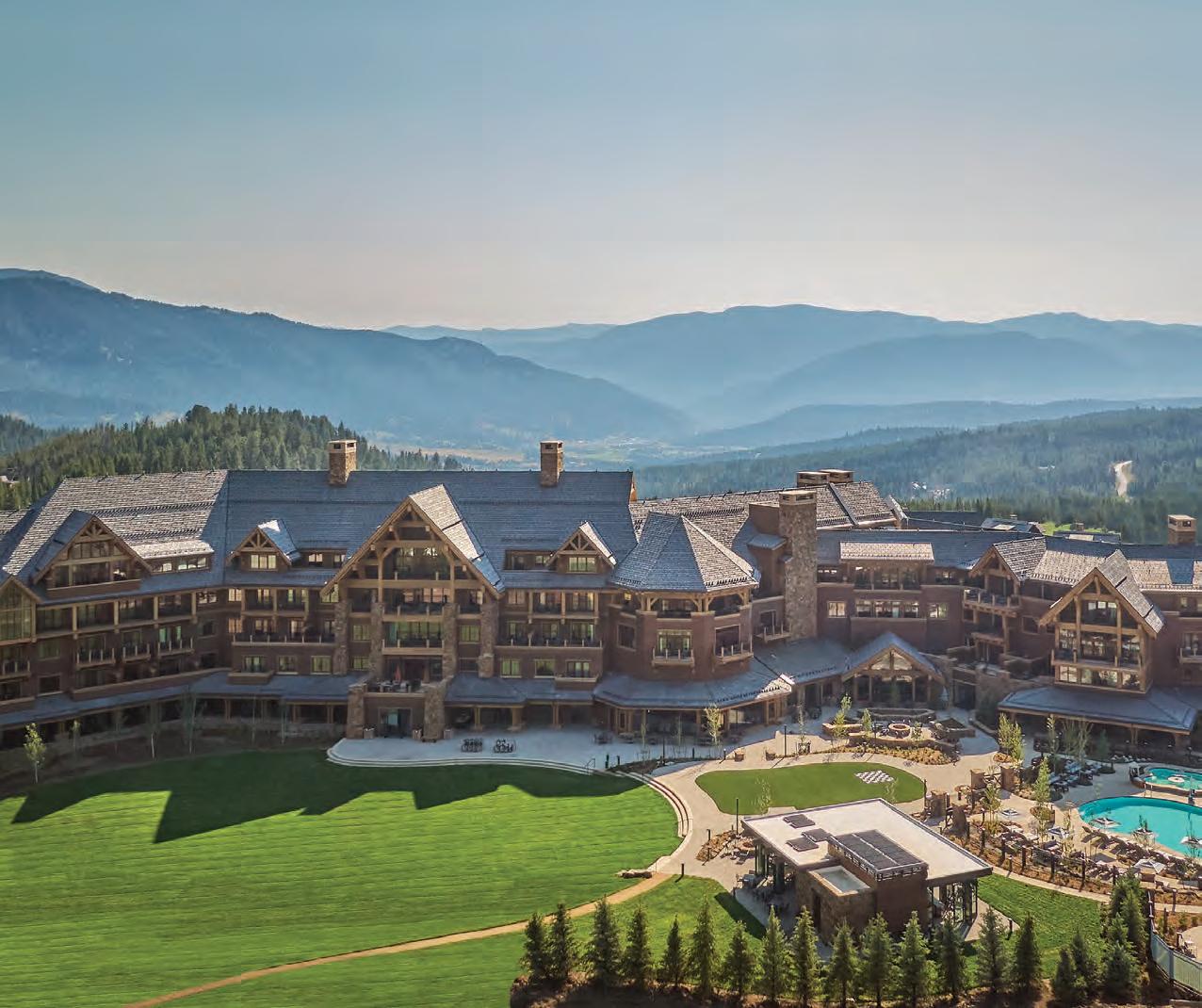
995 Settlement Trail, Big Sky MT | 406.993.4140 montage.com/bigsky | @montagebigsky Elevated Mountainside Retreat | Five Distinctive Dining Experiences Breathtaking Views | Full-Service Spa | Unforgettable Moments ESCAPE THE ORDINARY with Montage.




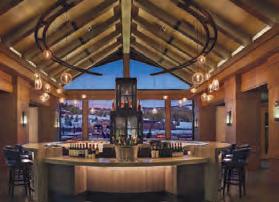
33
Cortina
Backcast
Alpenglow FEATURED DINING OUTLETS
Beartooth Pub & Rec.

gathers the last cut of the season at J T Ranches in Montana’s Flint
Valley. After a large swath of historic working lands were subdivided and sold in the region, Hilmo and Joleen Meshnik knitted over 680 acres back together, and thanks to a 2018 conservation easement, the land will be protected in perpetuity.
Tim Hilmo
Creek
Photo by Dave Gardner
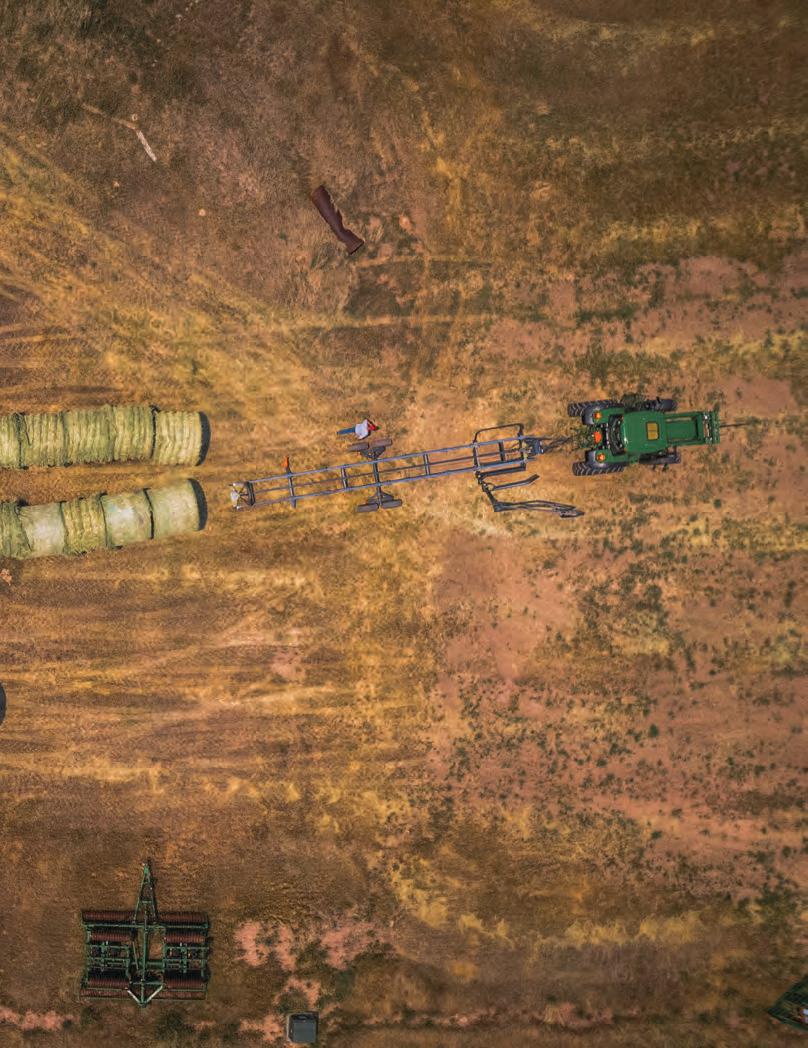
OUTBOUND GALLERY
The concept of Harvest has been the bedrock of every version of the West. At its best, growing, foraging and hunting food in this region has been a means through which to come into relationship with the land; it can be a practice of reciprocity and an opportunity to “sustain the ones who sustain you,” as Potawatomi botanist and author Robin Wall Kimmerer writes. Even as a value we hold in common, harvest takes many shapes in the West. Through the lenses of a cohort regional photographers, this issues Outbound Gallery seeks to reveal some of these forms, and introduces the animals, landscapes and people who mold them.
“Know the ways of the ones who take care of you, so that you may take care of them. Introduce yourself. Be accountable as the one who comes asking for life. Ask permission before taking. Abide by the answer. Never take the first. Never take the last. Take only what you need. Take only that which is given. Never take more than half. Leave some for others. Harvest in a way that minimizes harm. Use it respectfully. Never waste what you have taken. Share. Give thanks for what you have been given. Give a gift, in reciprocity for what you have taken. Sustain the ones who sustain you and the earth will last forever.”
–Robin Wall Kimmerer, Braiding Sweetgrass
Gallery Curated by Fischer Genau

Neeleman of Ballerina Farm in Kamas, Utah, milks the family cow as two of her children keep a vigilant watch for the family’s notorious goose, who is known to take her job of protecting the chickens a bit too seriously. Neeleman and her husband, Daniel, raise Berkshire pigs and Angus cattle on their farm while also raising a brood of their own—they have eight children, the youngest born this January, and 8.9 million people on Instagram keep up with their lives on the farm. Photo by Paige Southwood
36
Hannah
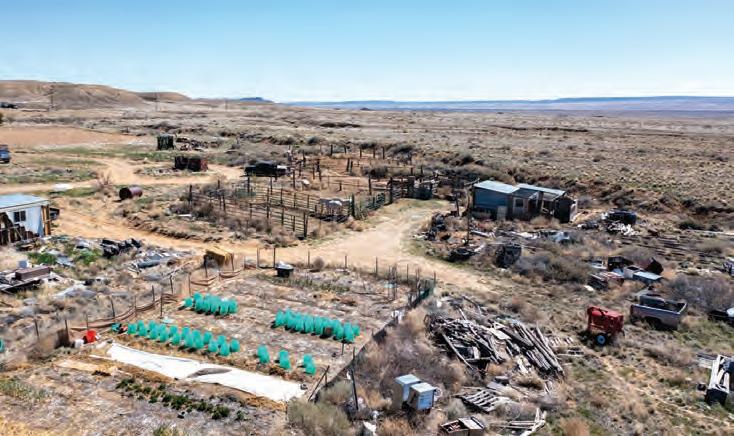


Above: Susan Sekaquaptewa’s home garden is seen within the surrounding desert landscape in Second Mesa on the Hopi Reservation. Sekaquaptewa explains that growing food is a traditional Hopi way of engaging in relationship with the land. It can be both a spiritual practice as well as one of self-sustenance. The Hopi have long held methods for growing food in a harsh, arid environment, like dry farming, but Sekaquaptewa says as climate change enflames these challenges, the Hopi people are further separated from growing and raising food, a direct connection to their culture. Photo by Micah Robin Left: Sekaquaptewa arranges water walls around tomato and pepper starts in her home garden in Second Mesa on the Hopi Reservation in April 2024. The water walls protect the plants while the threat of spring frost persists. Sekaquaptewa is a member of the Hopi Tribe and a University of Arizona extension agent serving her tribal communities by connecting them with resources from Arizona’s land grant university. The Federally Recognized Tribes Extension Program was established in 1990, 75 years after the parallel program for non-tribal communities was established. Sekaquaptewa provides learning opportunities ranging from horse digestion and rangeland grass health, to soil preparation and financial literacy for tribal producers. Photo by Micah Robin
37
Watch a short film about Sekaquaptewa

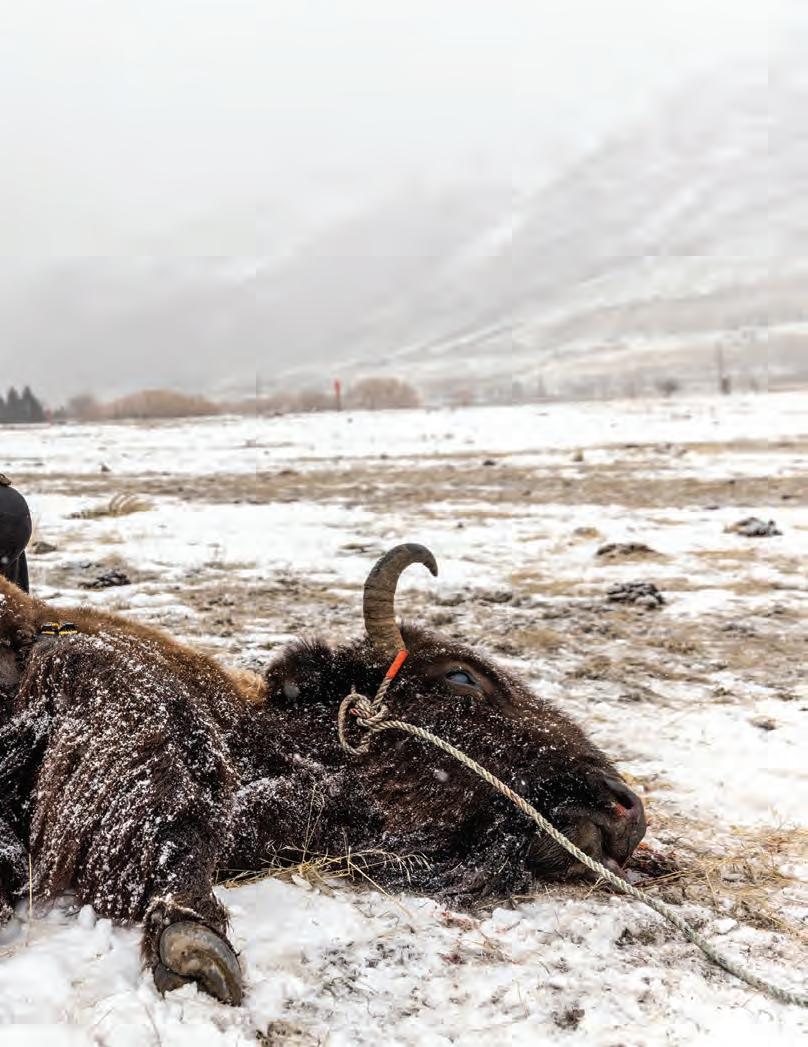
Kash Gleason, a 19-year-old Yakama tribal member, pauses to look at the bison he hunted at Beattie Gulch on the northern border of Yellowstone National Park during the tribal bison hunt on February 20, 2023. The bison is the first that Gleason has hunted in Yellowstone. Eight Native American tribes have federally recognized treaty rights to hunt bison outside of Yellowstone, which is one of the ways park bison populations are managed. In 2023, a harsh winter caused a record number of bison to migrate out of the park, resulting in the largest number ever harvested by tribes. Gleason traveled 16 hours with his family from his home in Yakama Nation, Washington, for the hunt, and for the promise of bringing an important ancestral food back to his community. For generations bison have been a source of food for indigenous peoples, and tribes from the Columbia River Basin plateau would travel to the Yellowstone area to hunt, trade and bring home meat to their families.
Photo by Louise Johns

A forager harvests a wild morel mushroom with a knife, which helps keep them clean and limits damage to the underground mycelial network that births them. Morels pop across the Mountain West in early spring and summer when ground temperatures reach roughly 50 degrees and disappear once they hit 60. The mushrooms can be found in river bottoms, woodlands and burn areas where abundant flushes of mushrooms are common in the first two years after a forest fire.
Photo by Ben Pierce
A woman holds up a bloody elk heart from a fresh kill. When hunting in the vast Bridger-Teton National Forest, a successful kill is just the beginning of the experience. Next comes the task of field dressing and packing out the elk quarters on horseback, which is no small endeavor—a typical bull elk yields over 200 pounds of meat. The chance to harvest an elk each fall is a unique privilege, and one that shouldn't be taken for granted. Photo by Della Frederickson
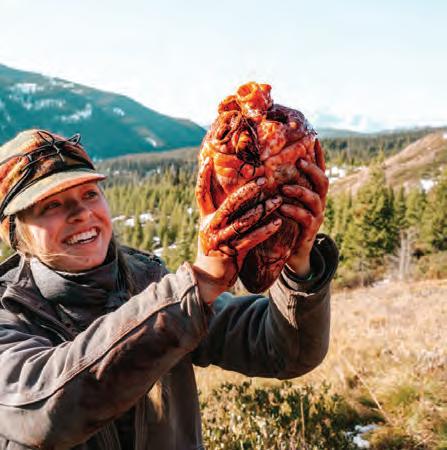
40
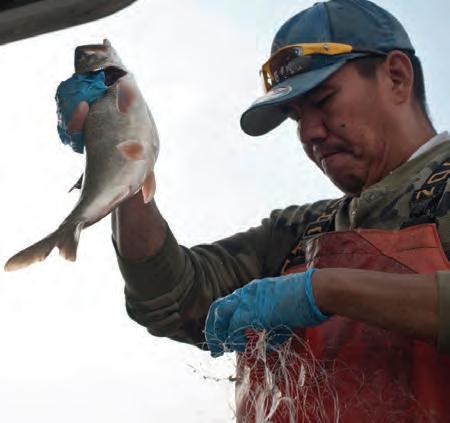
A four-man crew from the Confederated Salish and Kootenai Tribes of the Flathead Indian Reservation draw in gillnets that they use to catch non-native lake trout in Flathead Lake. The Tribes established this fishery to protect native bull trout and westslope cutthroat trout, which are threatened by predation from the non-native lake trout, and they sell the gillnetted lake trout at vendors across Montana through their company Native Fish Keepers to offset the costs of boats, fishing gear, and personnel. Photos by Lynn Donaldson

41





42 Fly Fishing in Montana can be a rugged, sometimes-tiring adventure—that’s why Madison Double R will be a welcome respite at the end of each day. Located on the world-renowned Madison River south of Ennis, Madison Double R offers first-quality accommodations, outstanding cuisine, expert guides, and a fly fishing lodge experience second to none. Contact us today to book your stay at the West’s premier year-round destination lodges. MADISONRR.COM • 406-682-5555 • office@madisonrr.com
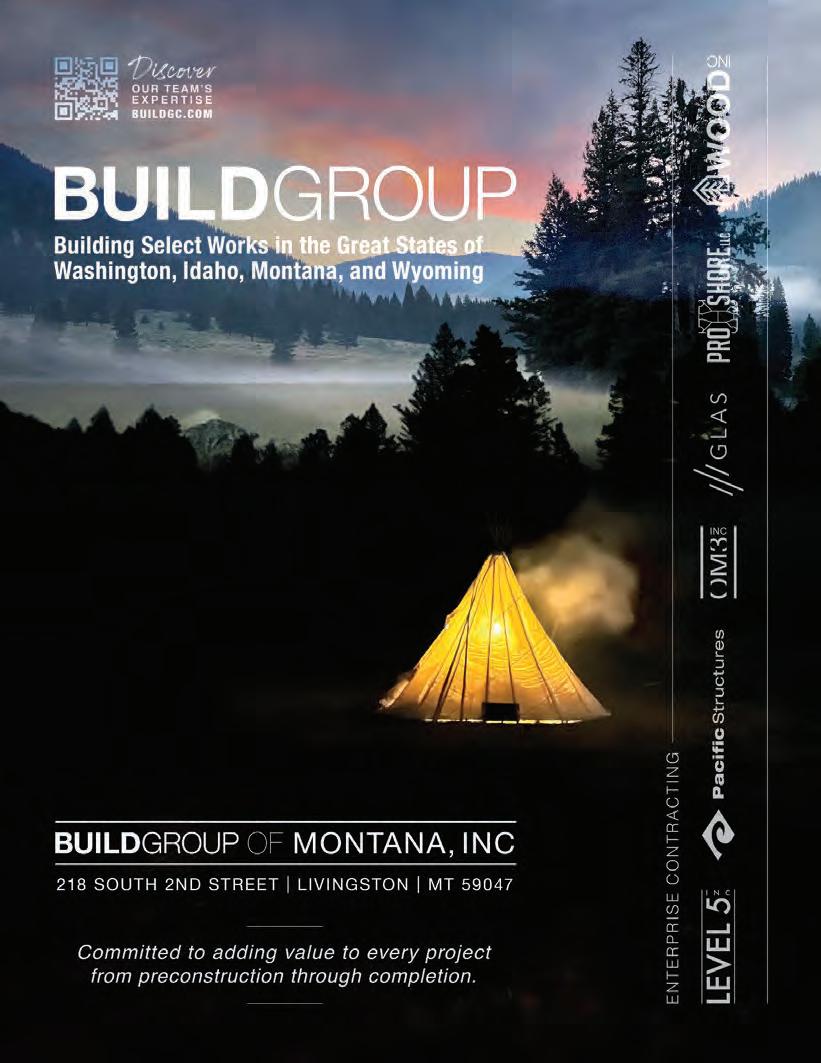


ADVENTURE THE RIVER THAT REVEALS US // 46 ARTIFICIAL ADVENTURES // 56 MAPPING THE WILD WITHIN // 64 KING OF THE ROADTRIP // 69 AMPLIFYING OUTDOOR NARRATIVES // 76
Bathed in sunset hues, two runners descend Sacagawea Peak against the breathtaking backdrop of the Bridger Mountains. Named for the Lemhi Shoshone woman who accompanied the Lewis and Clark expedition, Sacagawea is the highest point in the Bridger Range at 9,654 feet.
Photo by Kyle Niego
THE RIVER THAT REVEALS US
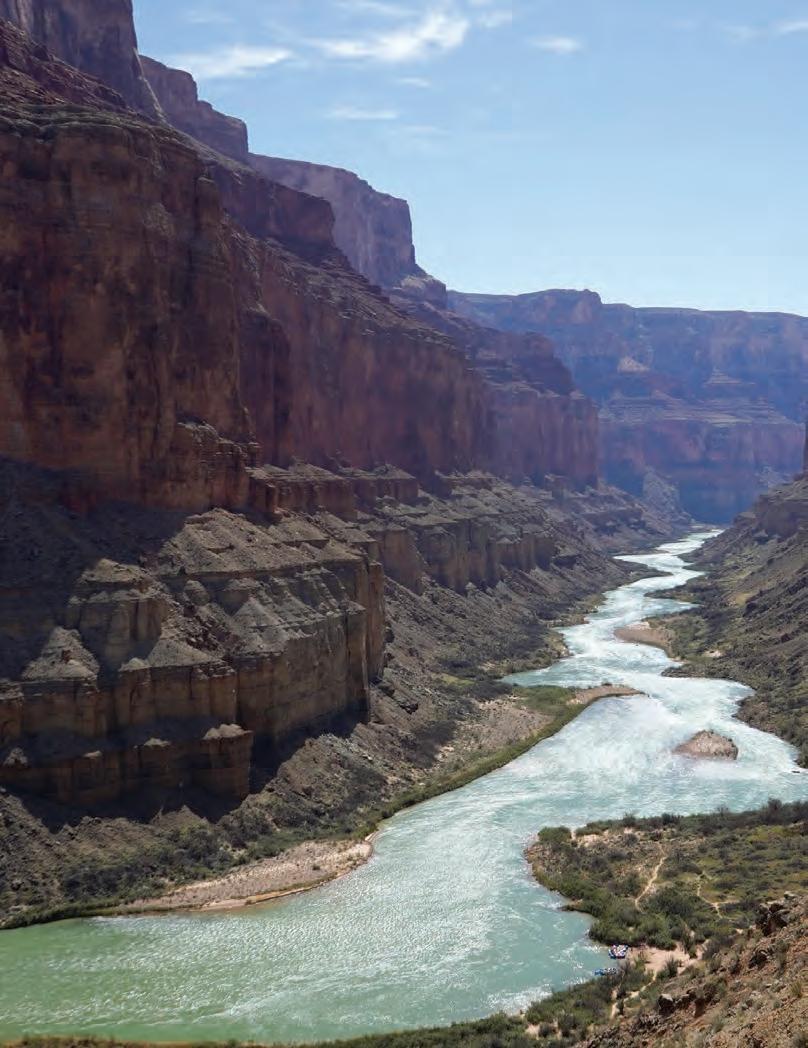
Navigating relationship to landscape in the Grand Canyon
By Bella Butler
The Colorado River winds through the Grand Canyon. This view is seen from an overlook beneath the Nankoweap Granaries, Puebloan grain storage structures that date back to 1200 AD.
Photo by Colin Hislop

I’ve heard that when a commercial trip launches in the Grand Canyon, guides recite the hallmark statement from John Wesley Powell’s 1869 expedition: “We have an unknown distance yet to run, an unknown river to explore. What falls there are, we know not; what rocks beset the channel, we know not; what walls ride over the river, we know not.”
Powell penned these words in his journal at the confluence of the Green and Colorado rivers, where the silty sage-colored water for which one river was named gave way to the chalky red namesake of the other. Subsequent events would prove Powell right. Though many Indigenous tribes have long called the canyonlands home—many even regarding them as their holy sites of creation—Powell’s trip was the first recorded by Western settlers. In the heat of the desert in August, he and his crew of nine men faced near starvation and other questions of survival, and just three days before completing his journey Powell lost three men to discord, all of whom left the river to hike out and were never seen again.
At that confluence of complementary colors, Powell couldn’t have predicted the perils before him, and although hopeful for some level of acclaim, he also didn’t know the legacy that would follow him home. He didn’t know his expedition would become the catalyst for the Four Great Surveys of the West, nor the creation of the U.S. Geological Survey and the U.S. Department of Ethnology. He didn’t know his discoveries would have him pleading for the progress-hungry delegates of Washington D.C. to heed the aridity of the West, and he didn’t know they’d ignore him. And he certainly didn’t know that nearly 150 years after his own harrowing journey, five 18-foot oar frames carrying my female-skewing group of 20- and 30-somethings wearing Hawaiian shirts and glitter would complete the 226-mile stretch of the Colorado River through the Grand Canyon, crushing the same waves that crushed him, all while singing “Dixieland Delight” (the Alabama version) on repeat.

47
Christian Newby rows an 18-foot oar frame raft through the Grand Canyon in March 2024. Photo by Colin Hislop
As we pushed off at Lees Ferry on March 24, 2024, I didn’t say Powell’s words aloud. To me, they seemed to have soured in the post-Powell world where maps, social media and river flow charts overshadow any sense of mystery. What falls there are, we knew, and in fact had a list of recommendations for the best to take photos of. What rocks beset the channel, we knew, courtesy of a $30 river map with detailed beta on each rapid. What walls ride over the river, we knew, thanks to a color-coded stratigraphic column and a newly graduated master of hydrogeology in our midst. What was left for us and the other 29,000 river runners who travel the canyon annually to “know not?”
But of course anyone who’s spent enough time on rivers knows that water has the power to not only erode the outer landscape but also our inner one, and the true mystery is in what it reveals within ourselves.
I didn’t consider the color of the water until our second day on it. At Mile 112 Camp, I studied the green ripples and tasted the full-bodied grittiness of the word Colorado in my mouth. This Spanish name, better suited for the once-free flowing red river it was originally named for, tasted different spilling from my lips and into this version of the river, the emerald ribbon that maybe should be called something else entirely.
Out of respect for the Colorado of today though, the one that flipped one of our boats and pumped adrenaline through many a swimmer, I should make clear that this river is not tamed. But it is bridled. When the Glen Canyon Dam, built in 1966, choked this once uproarious red river, the Colorado became a wild horse with a bit between its teeth and reins around its neck, yielding to the tug that tells it when to sprint forward and when to rear back. And while even a saddled horse has a mind of its own, this bronco is forever changed from its free-roaming days.
The water flowing by Mile 112 Camp moved steadily but not
swiftly; there was no sense of urgency. Using my imagination, I tried to fill the riverbed with another image, one of opaque rust-colored water bucking over sandstone ledges and boulders, eager to reach its destination, unflinching in its demonstration of omnipotent power over the landscape. The Colorado once gushed into the Sea of Cortez, 1,450 miles from its Rocky Mountain headwaters, but the 15 times dammed and manytimes diverted river now rarely reaches this destination. In 1920, a stream gauge near Yuma, Arizona clocked the river flow at 129,000 cubic feet per second. After the filling of the Hoover and Glen Canyon dams, the river’s spike was a mere quarter of that.
Powell’s 1869 expedition was intended for science, a means by which to study geology, geography and water as a resource, though the conditions of the canyon quickly refocused the goal to survival. But even with his barometers, maps and other instruments in pieces, Powell gleaned perhaps the most critical hypothesis from his immersion in desert country—there’s not enough water. At least, not enough to match the expansive vision of a then-ballooning United States. In 1862, just seven years before Powell’s trip, President Abraham Lincoln signed into law the Homestead Act, granting 160 acres of public land—read: stolen Native land—to settlers looking to claim their piece of the West. When Powell emerged, he pleaded with Congress: This 160-acres thing, it’s not going to work, he told them. Historian John Ross chronicles Powell’s experience in his book The Promise of the Grand Canyon.
“In the canyon that experience was an epiphany of sorts in a visceral way,” Ross said in a 2019 Arizona Public Radio interview. “It began to evolve into an idea about [how] humans should intersect and interact with the land, and with its resources, with water … He was not an environmentalist in John Muir framework, but in a very important way he was laying out the groundwork to think about how we intersect with our land sustainably.”
Ross suggests Powell was one of the first people (I would further qualify as one of the first white settlers) to start thinking about how the conditions of the land, climate and
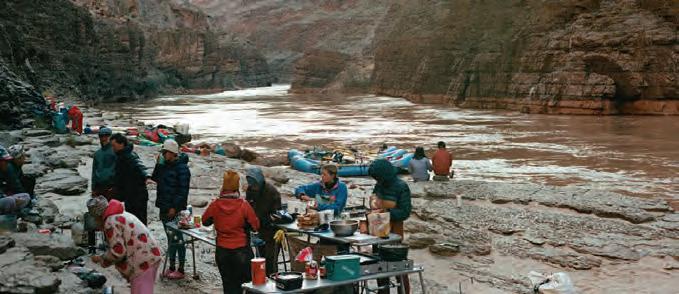
48
Butler’s group prepares dinner at Upper Ledges, a small rock ledge camp at river mile 159. Photo by Bella Butler
geology should shape the way we use it, not the other way around. But Powell was mournfully ahead of his time, and his previously written-off warnings now haunt us as prophecy.
In late 2022, the bony skeletons of rapidly dropping lakes Powell and Mead rattled in national headlines. Stories about the plight called the Colorado “crisis-plagued,” and described the river as if it were a cancer patient on the brink of becoming terminal. The river system is shared by Mexico, 30 Native tribes, as well as Colorado, New Mexico, Utah, Wyoming, Arizona, California and Nevada. More than a century and a half after Powell made his case to mind the arid West, nearly 40 million Americans rely on the Colorado as a water source, as do 5.5 million acres of farmland. The dams at Powell and Mead provide power for millions. In a typical year, 1.9 trillion gallons of water are consumed in the Colorado River Basin.
According to data shared by The New York Times in May 2023, that massive figure is portioned by these categories:
- Corn Grain
- Barley
- Other Crops
- Livestock Watering
A decades-old agreement between the seven states in the Colorado River system appropriates water to each state in quantities now being analyzed as more than what exists within the system. In an unprecedented action, the U.S. Department of the Interior asked the states to update their agreement in January of 2023 or face cuts by the federal government. Amid heated debate, Arizona, Colorado and Nevada agreed in May 2023 to take less water, but as historic drought and other manifestations of climate change loom large, the water system’s fate still hangs in the balance.
“If Congress had listened to what Powell said,” Ross said in his NPR interview, “if we had kept water more in watersheds and developed appropriately, I think we would be a saner, saner world.”
It’s amazing how this perilous reality of scarcity eludes you on the river. A mile beneath the rim, everything is scaled in such a way that makes it hard to imagine the concept of limitation. Any boater also knows that the river often demands complete presence—it’s in fact the thing that draws many of us to it. In reading Powell’s journals, this seems true for him as well. While he emerged with grand conclusions, his entries are anchored in active language; verbs tell the story of each day, and adjectives bring each sight and experience into

49
12%
4%
4%
79%
55%
Feed 11%
3%
2%
- Residential
- Commercial & Industrial
- Thermoelectric Power
- Agriculture
- Livestock
- Cotton
- Wheat
1%
7%
<1%
Butler and her partner, Micah Robin, approach the falls at Deer Creek, a popular stop for many boaters and identified as a Traditional Cultural Property by the Hopi, Zuni, Hualapai, and the Southern Paiute tribes. Above the falls in the Deer Creek Narrows, red handprints from ancestral peoples are still visible on the walls. Photo by Colin Hislop

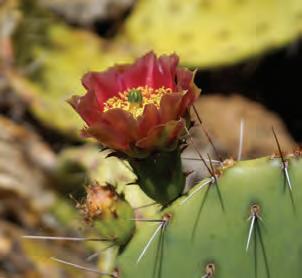
colorful view at a time when cameras could only shoot in black and white.
Logged on August 25, 1869, at what I presume to be the canyon’s famous Lava Falls rapid area, Powell wrote:
“From this volcano vast floods of lava have been poured down into the river, and a stream of the molten rock has run up the canyon, three or four miles, and down, we know not how far.”
What a surprising sight those black formations must have been to Powell, petrified in their fluidity. To us, Lava Falls was heavily anticipated. A series of YouTube videos, and an Instagram page, @grandcanyoncarnage, had memorialized the image of Lava before we even saw it ourselves. We shared the scout above the rapid with several other groups studying the route of safest passage and greatest thrill. We watched as motorboats, allowed on the canyon April through mid-September, barreled through the whitewater, their inflatable tubes taking the brunt of the river as customers sat in rows on the center platform, gripping the shoulder straps of their life jackets like the safety bars of a roller coaster.
These rigs are flying cars compared to Powell’s fleet, which included three 21-foot boats made of oak and one 16-foot boat made of white pine, all built to Powell’s specifications. The smallest boat, designed for Powell to move swiftly as the lead, was named the Emma Dean after Powell’s wife. Among the other gear boats were the Maid of the Canyon, a symbolic companion for the lonely men; the Kitty Clyde’s Sister, named for a song from the Civil War, during which all expeditioners but one fought in; and finally, the No Name, no story there. We followed in tradition, naming the members of our fleet We Three Queens, self-proclaimed by the boat’s female trio; the Ice Queen, for the boat with the cocktail ice cooler; White Lightning, sometimes referred to as Major Med, whose white rubber carried both our med kit and EMT; Meat Boat, or Poop Boat, the only all-male vessel and the unlucky carrier of our human waste; and finally my beloved boat, the kitchen boat, called Yes Chef.
As we went to push off from the eddy above Lava, the roar of the falls was so loud we couldn’t hear one another, so we all raised our hands nervously in the air, river speak for “go.”
My boat was last, captained by Christian Newby, who sent
us in stern-first, handily kissing the edge of the top pour-over. As we hit the next hole, a massive wave rose to fill the entire backdrop, and Newby let out one big hoot before punching through the water with one powerful oar stroke. We met our crew below the rapid for the traditional celebration at Tequila Beach. We passed around a bottle wrapped in duct tape and took turns puckering our faces while Lava Falls continued to roar behind us.
While Powell’s journals suggest his crew opted instead for a three-hour portage around the falls, he shared in the celebration of splendor in that wickedly stunning section of the canyon (though I suspect there was no tequila).
“What a conflict of water and fire there must have been here!” he wrote. “Just imagine a river of molten rock, running down into the river of melted snow. What a seething and boiling of the waters; what clouds of steam rolled into the heavens!”
Our own expressions of wonder were limited to simpler language, often a mere “look at that rock!” but the sense of awe was congruent.
Ironically, the canyon has a way of leveling otherwise far-apart experiences like this. It takes layers of deep time and presents it on a single plane. The rock at Lava Falls from an eruption 800,000 years ago, red handprints from some of the canyon’s earliest inhabitants, the scuffs on the rocks from Powell’s burly oak boats, and our Chaco-patterned footprints in the sand all exist together in one moment. Maybe more than any place else I’ve been, this canyon holds onto things. It’s something about its paradoxical compactness and immensity, its depth and antiquity, that renders it the greatest raconteur of the West. The water carries countless stories, but the canyon keeps them.
On day 15, we tied the boats off in an eddy and wandered up a side canyon called Blacktail. Another group, the one we launched with at Lees, was camped where Blacktail’s dry creek bed spilled into the river, and they joined us on our walk. My partner Micah and I took up the rear, and Hoppe, an older man from the other group, hobbled a bit to keep pace with us.
“Jeff’s up here, and he’s gonna play guitar,” Hoppe told us
50
Left: The Nankoweap Granaries remain intact high above the river. Photo by Colin Hislop Right: A cactus bloom emerges from a bud. One of the benefits of a spring trip are the flowers. Photo by Colin Hislop
between puffed breaths. “He’s really good.”
It was Hoppe’s birthday, something we only knew because his son Henry told us. Each person in our group took turns wishing him happy birthday as our boats played leapfrog down the river, and each time he responded the same: “It’s just another day, for me.” He didn’t tell us which birthday it was (I’m guessing around 65) but he did divulge that this was his sixth trip down the canyon, which is perhaps a better measure for his life, anyway. He proudly proclaimed that his wife Cindy whom he calls “the boater of the family,” has been down seven times. The couple live on a 75-acre retired fish hatchery in Kremmling, Colorado—population 1,500—after living in Grand Lake, which “got too touristy.” Cindy runs a rafting supply company called Ripple Works, which she says doesn’t make much money but lets them share good deals on boating gear with their friends, which makes it worth it.
Despite launching with them 130-some miles and two weeks ago, we hardly spoke to them until they watched us flip a raft in Crystal Rapid. They floated past us as we cleaned up our mess, effectively snaking the sought-after Bass Camp. Henry later offered a truce, telling us he’d flipped his own boat in the same hole five trips ago—he says he’s always gone the left line since.
As we walked alongside them in these wavy walls, I felt like we all knew each other a little better. We started the trip calling them The Oldies, and assumed their gray-haired horde looked down on our froth-mouthed crew of Grand Canyon virgins. But after sharing more miles, we know them to be people who have lived a good amount of their lives on this river and others, people whose stories are worth hearing. I hope they now know us not as a bunch of whippersnappers with reckless energy, but passionate young folk galvanized by the prospect of our own lives spent on rivers. As we walked, Hoppe told us about the chaos of his own first trip, where they forgot the toilet seat, and another trip where they lost a poorly tied boat to the current in the middle of the night. He smirked at us, and I supposed maybe he saw a little of them in us.
“The first time down is always the best,” he’d tell us later, donning a shirt with “Grand Canyon April 2004” printed on the breast pocket.
With Hoppe on our tail, we arrived to a slight widening in the river-bent canyon where our group mixed with The Oldies in an amphitheater-shaped audience. A younger man with eyes the color of the clear aqua river at Havasu Falls was picking guitar strings and singing a song I didn’t know in a voice rubbed with the texture of desert sand.
“Wow,” I thought. “Jeff is good.”
Hoppe leaned against the wall and Micah and I found our place among the audience, which started humming along to Tyler Childers’ “Feathered Indians,” a request from Becca, captain of We Three Queens. Across from us, our friends Cole and Kaelyn danced, swinging each other around in their own wingspan of tenderness, and Hoppe watched. It was bright outside, but only some of this light found us on the bed of the canyon, the sedimentary walls capturing both specks of sun and guitar-string echoes between conglomerated grains of sand.
This moment was beautiful because it was shared, not only between us and The Oldies, but between us and all
that this canyon holds. There’s honor in giving our stories to this Grand Ole Canyon, which will remember our shadows dancing against its moonlit walls when none of us remain to remember ourselves.
On the longer stretches of slack water, where the rapids were few and far between and there wasn’t much to do but sit on the bow and feel the river moving beneath me, I thought a lot about Barry Lopez’s 1945 essay “The American Geographies.” He wrote that the only way to truly know a place is through time spent in it. “The people in whom geography thrives,” Lopez wrote, are those who have spent this time. Perhaps they don’t know the name of every flower, or how to distinguish between two kinds of trout, “but they are nearly flawless in the respect they bear these places they love,” he said. “Their knowledge is intimate rather than encyclopedic, human but not necessarily scholarly. It rings with the concrete details of experience.”
Knowing the Colorado River and knowing the Grand Canyon has nothing to do with maps, photographs or colorcoded geology keys. This was true for Powell, when he declared all that he “knew not,” and it was true for me and my 14 friends on March 24, 2024. Knowing these sacred places isn’t about knowing what they can do for us, either; it’s not about water appropriations, historic droughts or even river permits. Knowing these places is about coming into relationship with them; it’s letting quiet, perfect moments of awe transform us, and the permission they give us to be part of this beautiful, wild system.
At our own confluence in the West, where history merges with the present and so much mystery lies ahead, we lean into this mutual reverence with the land. What’s left to “know not” is not the West itself, but how we will apply ourselves to it.
Bella Butler is a writer, editor and aspiring Grand Canyon regular who lives in Bozeman, Montana. She is the Managing Editor for Mountain Outlaw.
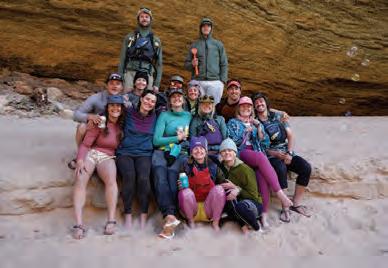
Experience the Grand Canyon through film.

51
Butler’s crew poses for a group photo in Redwall Cavern.
Photo by Alex Nelson
ARTIFICIAL ADVENTURES ChatGPT AND A MODERN MOUNTAIN
ODYSSEY
WORDS BY ANDREW ARENA
PHOTOS BY CHARLES STEMEN & KYLE TILLEMAN

Inever thought too much about how I might die, but as I prepared to lean the weight of my body off the edge of a 3,000-foot cliff rear first, it occurred to me that this wasn’t how I would’ve imagined it. Just minutes before, I’d been grinning ear-to-ear and lounging luxuriously in the August sun with my two friends, Charlie and Kyle, as we congratulated each other on a successful five-pitch trad climb in Montana’s rugged Beartooth Mountains. Now I was literally teetering on the edge of life and death, and the only person—or thing—I had to blame was a robot. That’s right. This was all because of ChatGPT.
This all started last summer, when Charlie asked me to join him and his friend Kyle on an adventurous weekend in
the Beartooths. It was a layered invitation, though, because what I would later learn is that this three-day trip had been designed by ChatGPT, an artificial intelligence computer program “that talks like a human and helps you with all sorts of things,” according to the bot itself. Charlie, a Bozemanbased photographer, had prompted ChatGPT to lead us on an adventure weekend “worthy of being published.”
“Sure,” I had said when Charlie explained this. “Why not?”
In the coming weeks, Charlie revealed ChatGPT’s detailed itinerary. The AI model had not only determined our activities,
>>>>>>>
>>>>>>>>>>>>>>>>>>
I took a deep breath, silently prayed to Alex Honnold, and leaned back into the abyss.
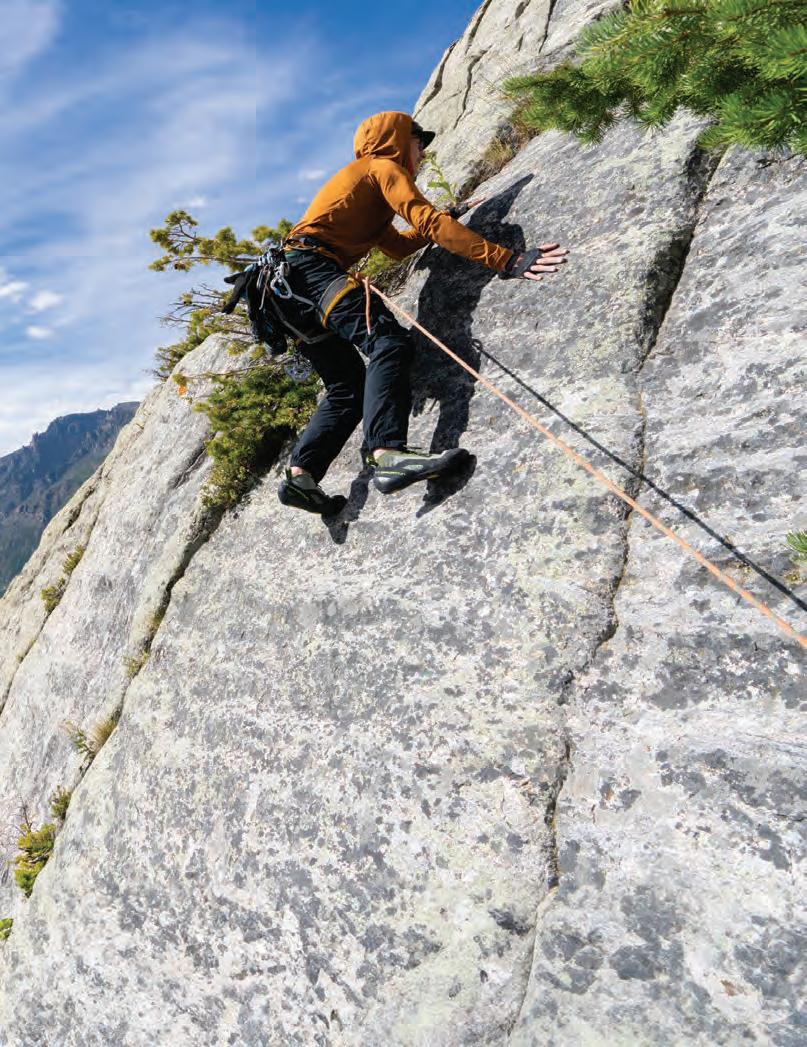
While on a Montana adventure completely dictated by ChatGPT, Charlie Stemen, generously fueled by "special gourmet blend" coffee as prescribed by ChatGPT, "takes the lead on setting routes," also a directive from the AI program. Kyle Tilleman snapped this photo while grumbling about how ChatGPT didn't allow him coffee this morning, and Andrew Arena was out of sight at the belay soaking in the view and eating gummy bears.
but also where and when they would take place; it had even developed uniquely strict meal plans to be followed by each of us for the entire weekend. Our trip would span three solid days and would include mountain biking, gravel biking, fly fishing and an epic five-pitch trad climb. While we would all partake in the same activities, the AI-generated meal plans would be custom.
Charlie, a thin, bespectacled artist, would be eating such delicacies as gourmet salmon wraps, charcuterie boards and quinoa salads. Kyle, a tall and hiply mustachioed Bozeman native, would be eating similarly but sans pork to appease his own dietary restrictions. I, on the other hand, an incredibly handsome and intelligent construction worker, was prescribed
mac n’ cheese, pre-packaged BBQ chicken and PB&Js, in addition to a startling amount of Mountain Dew Code Red. While the others laughed at my “child-like” menu for the weekend, I was unabashedly satisfied with the arrangement. A lifetime of gas station breakfasts and energy drinks while working in construction had perfectly prepared my body for this.
As comfortable as I was with my meal plan, I was equally uncomfortable with the itinerary. Although I’m a finely tuned endurance machine, I’m not even a remotely competent climber, and I hadn’t been on a mountain bike in several years. But I put my nerves aside at the prospect of such a great adventure.
>>>>>>>>>>>>>>>>>>
>>>>>>>>>>>>>>>>>
Photo by Kyle Tilleman

The appeal of using technology to prescribe the "perfect weekend" or the "craziest adventure" is alluring, and it can certainly be a fun way to spice things up. However, the true magic in our outdoor experiences is found in the camaraderie forged between friends during a climb, or the inside jokes created during a long day of biking.

Day 1: Cliffhangers and Code Red
I awoke in the early morning darkness to the metallic rustle of Charlie and Kyle sorting and packing climbing gear. I sat up in the custom-built bed of my Chevy Astrovan and cracked my first Mountain Dew Code Red, letting its sweet nectar quench my morning thirst.
I sat for a moment and prayed to Alex Honnold (the only climber I knew of) to please grant me safe passage on our climb today. I slid open the door and went out into the morning darkness.
As we walked down the crunchy gravel road, headlamps illuminating our way, we passed a collection of backhoes, excavators and bucket loaders parked along the dusty shoulder of our path.
While the sun rose, we ogled the mountains’ massive silhouettes in the distance. We turned off our headlamps and veered off the trusty gravel road, hiking through dense woods toward a startlingly steep rock wall. As we drew nearer to the crag, our approach transformed from dense and tedious bushwhacking to nervy scrambling; I watched Kyle and Charlie deftly navigate the rock and tried to mirror their maneuvers. A brilliant sunrise washed the granite in a grapefruit glow as we pulled ourselves up to the base of our route. At the foot of the crag, I stood nervously on our first belay station’s narrow, flattish platform. My hands perspired as Kyle and Charlie each gracefully climbed the first pitch, leaving me alone, moist and anxious. The radio attached to my harness crackled as Charlie’s voice informed me I was on belay. I took a deep breath, swallowed hard and began scaling the granite wall.
Aside from a fiendish finger crack halfway up the first pitch, the climb was spectacular. The rough granite warmed as the sun rose overhead, bathing the entire valley in a beautiful midday light. Though the threat of weather innocuously appeared in the distance, no wisp of wind threatened to spoil our climb.
After a deserved celebration at the top, Charlie informed me that we would be rappelling off the top of the mountain, not casually walking down the back. I timidly peered over the edge of what Charlie told me we would be rappelling from; to my horror, I looked down into a massive, wide-open expanse; this would be an utterly free-hanging rappel.
Suddenly, I recalled a moment from the night Charlie had invited me on this trip. On my way out the door of Charlie’s house, his partner, Jessica, had caught my arm and abruptly pulled me aside.
“Something weird is happening with Charlie and this whole ChatGPT situation,” she had said. “He’s been staying up all night working with it.” She’d hesitated before nervously whispering, “I think he’s been talking to it.”
I had laughed, but as my guffaw faded into silence the look of genuine concern had remained imprinted on Jessica’s wrinkled brow. Now gripped by fear, Jessica’s words returned to me; Charlie had been talking to ChatGPT. My adrenaline began urgently
>>>>>>>>>>>>>>>>>
Top left: Arena downs one of his many AI-prescribed Mountain Dew Code Reds. Photo by Charlie Stemen Left: Tilleman suspends on the rapel, blissfully unaware of ChatGPT's real motivations and seemingly charmed after enjoying a cold lemonade at the top of the climb that ChatGPT required the trio to carry up in a thermos. Photo by Charlie Stemen
pumping conspiracies to my brain—or were they conspiracies? How much did we really know about this technology? Had AI taken over Charlie’s feeble human brain? Had it convinced him that human beings were a disease to the Earth? Had it persuaded Charlie that eliminating the entire human population was the only solution? Was I to be the first eliminated?
My hands trembled, and my mind raced as Kyle tied me in and instructed me on how to navigate my way down the rope safely. I took a deep breath, silently prayed to Alex Honnold, and leaned back into the abyss.
Day 2: Gravel Bikes and Drone Strikes
I awoke again in the Astrovan. Birds chirped as the sun filtered through the canopy of evergreens above. I cracked open a Mountain Dew Code Red; the sticky red liquid tasted even sweeter knowing I had evaded death. I was alive, but barely. Against all odds, I had safely rappelled down to the canyon floor, much to Charlie’s chagrin. His dark AI overlord would not be pleased.
“Today will be a much safer day,” I thought as I took another hearty swig from the red can, the syrupy sweetness lubricating my achy bones.
We loaded our gravel bikes into Charlie’s van and drove off in a cloud of dust to the starting point for our bike ride. The innumerable gravel roads, scant populace and screen-saver scenery make Montana an extraordinary destination for seemingly limitless gravel riding. Our ride began on the desktop of Windows 98 as we zipped past a glowing viridescent pool flanked by jagged, snow-capped mountains.
My grin expanded as we whisked downhill. The familiarity of the gravel bike was comforting after my ineptitude climbing the previous day. I deftly maneuvered around potholes and crouched into an aerodynamic tuck.
I had all but forgotten about Charlie’s AI treachery when we came upon a scenic bridge that Charlie wanted to take some drone photos of. My heart sank and my eyes narrowed as he began flying his small, robotic minion overhead. We hadn’t seen another soul all day; there would be no witnesses if ChatGPT decided to make his—its—move.
As Kyle and I pedaled back up the road in preparation for the supposed drone photos, I whispered a discrete warning.
“Charlie is compromised; drone strike.”
Kyle laughed awkwardly with a look of confusion and asked me what I had said. We didn’t know each other very well. But before I could explain, Charlie shouted for us to go. In a flash, Kyle was off and pedaling toward the bridge, mustache flowing in the breeze. I quickly mounted my bike and spun hard, desperately trying to catch Kyle and warn him of our impending doom, but it was too late. I caught up just in time for us to reach the bridge. I winced,
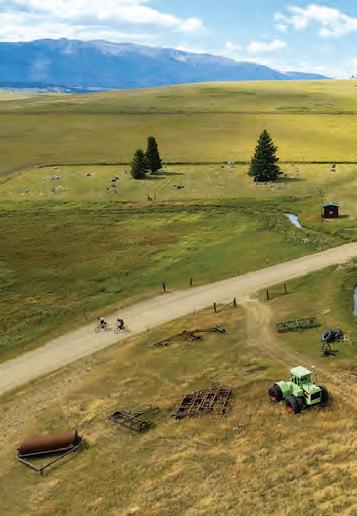
 Top right: Tilleman and Arena cruise through a rural landscape on their gravel bikes. The miles fly by when you blindly follow AI. Photo by Charlie Stemen Right: Arena and Tilleman are forced to attempt a campfire blueberry cobbler. Meanwhile, Stemen hid a Bluetooth speaker in the woods and later played grizzly bear noises—a prank ChatGPT added to the trip the night before departure. Photo by Charlie Stemen
Top right: Tilleman and Arena cruise through a rural landscape on their gravel bikes. The miles fly by when you blindly follow AI. Photo by Charlie Stemen Right: Arena and Tilleman are forced to attempt a campfire blueberry cobbler. Meanwhile, Stemen hid a Bluetooth speaker in the woods and later played grizzly bear noises—a prank ChatGPT added to the trip the night before departure. Photo by Charlie Stemen
and my body tensed, expecting a rain of fire from above; my front tire hit the bridge’s rickety wooden boards.
The next thing I knew, I felt the familiar crunch of gravel beneath my tires. We had survived. But why? I stopped, my pulse racing, and drank a Code Red to calm my nerves.
We pulled our bikes into camp with the weary squeak of dust-coated brake pads and soaked our pink, sunburnt bodies in the river. But alas, Cage the Elephant was right; there is no rest for the wicked, and as our weary bones creaked in protest, we arose from the river. ChatGPT wanted us to go on a run.
After lethargically changing into running attire, we set out on the trail with the vigor and agility of cows in mud. However, as the miles ticked by, our movements became fluid; our strides grew comfortable and confident. A moose lumbered across the trail in front of us, her journey down the mountain prompted by nature, ours by machine. We arrived back in camp tired but satisfied.
The next part of ChatGPT’s evil plan was perhaps its most sinister ploy yet. According to ChatGPT’s itinerary, I was supposed to spend the evening fly fishing and catch a delicious trout to accompany some roasted vegetables and mashed potatoes. Of course, the robots know there is nothing more damaging to a man’s ego than being unable to provide food for his family. And—as everyone also knows—it’s called fishing, not catching. As I strode through the bugless afternoon air into the gently babbling stream, I knew I wouldn’t be catching any fish. I double-hauled hopelessly underneath a clear sky as Charlie snapped photos disquietingly from the bushes. Later that evening, after a meager dinner of roasted vegetables, I went to bed hungry while the guilt of not feeding my friends ate me alive.
Day 3: Mountain Bike Musings and Dew-Induced Delirium
I awoke in the inky blackness of the pre-dawn morning, my head pulsing slightly, most likely from overindulging in Mountain Dew while severely underindulging in water the past few days. A choir of yawns accompanied the percussive sounds of mountain bikes being loaded into Charlie’s van as we scrambled to scarf down a quick breakfast and load our packs for the day.
Charlie’s van slowly climbed the towering mountain pass that our epic 16-mile, 5,000-foot ride would begin atop as the sun’s first rays peeked out from behind the mountains. I struggled to slurp down a Mountain Dew. We were all hungry from the previous night’s fishless dinner.
We pedaled out of the gravel parking lot as the sunrise blushed above the trail, beginning our first descent. Soon we found ourselves pedaling across a breathtaking alpine plateau, saw-toothed mountains reaching desperately skyward in all directions. Charlie pedaled robotically ahead of me.
A series of short, technical climbs and fast, stonestrewn descents led us off our plateau, traversing around an enchanting alpine lake. My rented mountain bike handled the chunk and chunder with impressive aplomb; my confidence and enjoyment increased with every mile. I soon found myself hitting small jumps and pumping through corners.
As the distance between us and civilization increased and the landscape grew more and more remote, an intrusive thought reminded me that Charlie and ChatGPT could strike at any moment. But as I whizzed down a jumbly switchback, I didn’t care. I didn’t care if Charlie’s compromised, computerized brain tried to sabotage me, and I certainly

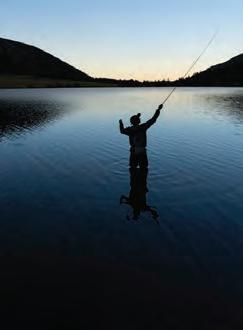
56 >>>>>>>>>>>>>>>>>
Left: The adventurers take off on a 7-mile run after returning to camp tired from gravel biking but beholden to ChatGPT’s relentless itinerary. Photo by Charlie Stemen Right: Arena casts into the night, the group’s entire dinner hinging on his success. Photo by Charlie Stemen
didn’t care if artificial intelligence took over the world. I was completely present, having fun with two great friends in a landscape that only a tiny portion of the world’s population ever gets to experience.
I picked my way up a puzzling patchwork of protruding boulders, reveling in the tricky balance and control required to stay upright. We descended steadily off the exposed alpine slope, switchbacking our way down into a more arborous landscape, the trees growing taller as we plummeted down the mountain. Our tires danced gracefully over roots and around corners; our hoots and hollers rang through the canyon.
Suddenly, after a series of tight turns, we emerged into the surreal environment of a burn zone. The charred, blackened trees spread spindly through the eerily open air. A thick layer of newspaper-colored dust coated the ground. We stood and quietly admired the landscape; two humans and one potential robot posed in a starkly alien world.
At the end of our ride, we regrouped in Charlie’s van as rain began to fall. Charlie hospitably cooked us pancakes while we chattered pleasantly about the ride. The van grew quiet as hungry mouths consumed the delicious flapjacks; our chewing drowned out by the pitter-patter of rain.
As I drove home that afternoon, pounding antacid tablets and water, I reflected on the weekend.
As revolutionary new technologies like artificial intelligence, smartwatches, and stretchy yet breathable spandex infiltrate the world of outdoor recreation, it can be easy to lose sight of why we’re going on adventures in the first place.
The appeal of using technology to prescribe the “perfect weekend” or the “craziest adventure” is alluring, and it can certainly be a fun way to spice things up. However, the true magic in our outdoor experiences is found in the camaraderie forged between friends during a climb, or the inside jokes created during a long day of biking.
So get out and plan an epic weekend with your friends, even those overtaken by artificial intelligence (maybe especially them, they need it), and make some memories that will last a lifetime.
A born and raised Mainer now living in Montana, Andrew Arena is an avid runner, cyclist and skier who lives only in states that start with the letter M.
Charles, Chuck, Charlie Stemen is an architectural and adventure photographer based in Bozeman, Montana. In addition to photography, he operates an independent design studio, and can usually be found at Bridger Bowl or exploring some local peaks.
Kyle Tilleman is a CPA, Woodworker, and Photographer from Bozeman, Montana. You can find his work on IG @k.t.customs.



57
>>>>>>>
Read the ChatGPT conversation here: >>>>>>>>>>>
Top: Stemen robotically skims over plateau chunder. Photo by Kyle Tilleman Above: Arena enjoys his prescribed meal, a ham sandwich with cookies and a Code Red. Stemen was prescribed a different diet including gourmet cheese and charcuterie board with artisanal crackers. Photo by Kyle Tilleman


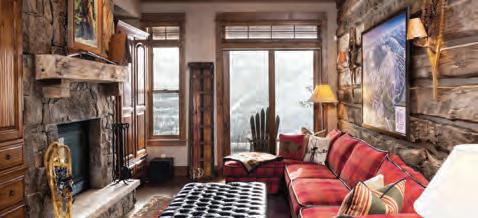
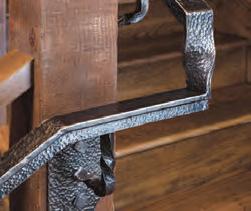



58 BUILDING A HOME IS PERSONAL. For over 30 years, Bob Houghteling, the owner of HCI Builders, has personally overseen custom builds built with relentless perfection. Backed with hands-on experience, his wealth of knowledge specializes and spans from Timber Frame to Mountain Modern homes. Give him a call and start dreaming of your custom home today. LET BOB BRING YOUR VISION TO LIFE CALL 406.995.2710 | HCI-BUILDERS.COM
Whether you are interested in chasing billfish in Costa Rica or Cabo or relaxing along the Emerald Coast of Florida, Jimmy Azzolini, Big Sky resident, is your authority on yacht ownership.
Jimmy has been with Galati Yacht Sales, the largest family-owned yacht brokerage firm worldwide, since 2000. During this time, Jimmy has helped countless families match the right yacht to their lifestyles.





JIMMY AZZOLINI LICENSED YACHT BROKER 850.259.3246 FL | AL | TX | CA | MX | CR GALATI YACHTS .COM FIND YOUR NEXTadventure
Find out more about yacht ownership and how Jimmy and Galati Yacht Sales can help you create new memories.
MAPPING THE WILD WITHIN: SELECT PEAKS’ 20-YEAR ENCORE
Thomas Turiano’s Love Letter to Greater Yellowstone
By Lauren Burgess
Thrumming with the resonant call of the wild, the compilation of route descriptions, geology and history of 107 prominent peaks across 13 mountain ranges, known as Select Peaks, has for decades been a backcountry essential akin to scripture for those who view the alpine as altar. Routes have been scribbled in notepads or photocopied, pages even torn out, then pocketed and carried into the wild heights of Greater Yellowstone to be followed with devout reverence. The first edition’s limited print run of just 5,000 copies selling for $44.95 each made it a thrift store jackpot for a fortunate few, while others found themselves in feverish eBay auctions with bids soaring beyond $300. As time passed, the physical manuscript remained coveted even as mountaingoers learned to navigate the online landscape of terra digitalis.
Since its original publication in 2003, Select Peaks of Greater Yellowstone: A Mountaineering History & Guide has retained a graillike mystique, a fact only emphasized by the second edition’s 2023 release, which its disciples had been eagerly waiting for at the feet of its author, Thomas Turiano. Expanded to 613

pages and a substantial 4.4 pounds, the guidebook is finally within easy reach, offering its wisdom to all seekers. As Select Peaks continues to captivate a cult-like following, Turiano reflects on the book’s relationship with both its audience and its subjects. After all, he conveys, its pages are not only a gift to those who climb mountains but also a love letter to the mountains themselves.
The Select Peaks routes are diverse, varying from walk-ups and easy scrambles to fifth-class multipitch. It’s a thrilling gateway for novices as well as a resource for seasoned climbers in search of test pieces. Marrying his education at the Colorado School of Mines with a lifetime of mountaineering wisdom, Turiano delivers an expansive, revelatory tour of the 107 peaks, punctuated with historical insights and narratives.

He dedicates a chapter to each of the 13 mountain ranges in a clockwise spiral: the Madison Range’s glacial horns, rock fins and precipitous metamorphic faces; the Gallatins’ U-shaped valleys of crumbling rhyolitic lava and ash, hewn by rivers of ice; the North Absaroka’s aiguille-crowned ridges, tumultuous slopes and tenacious ecology;
60
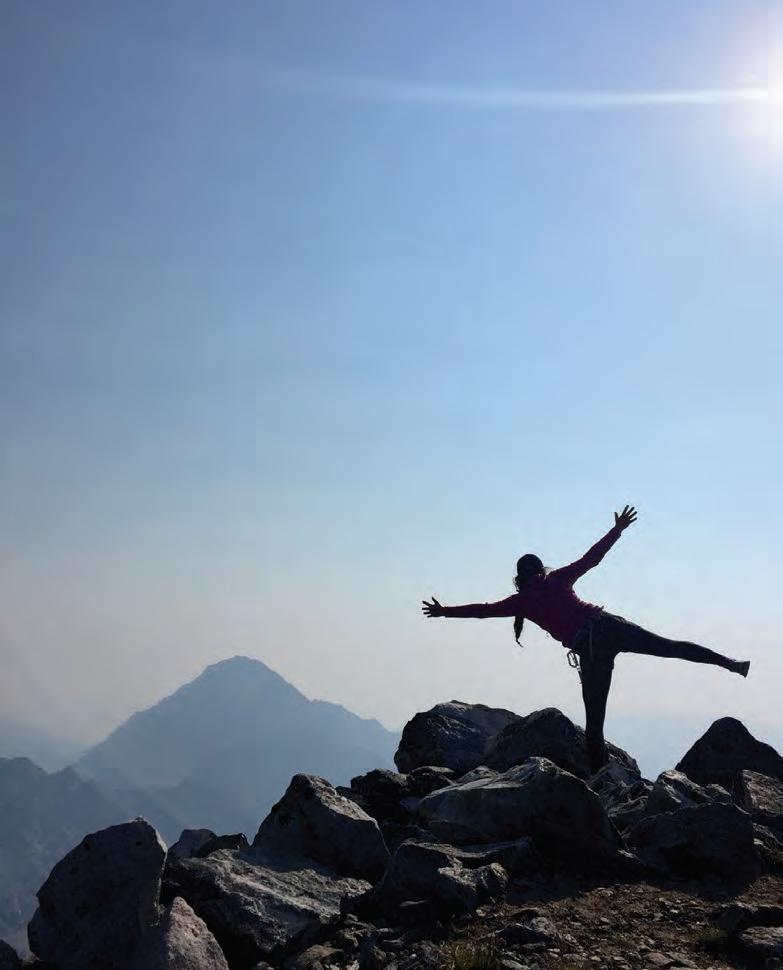
61
Hazy morning light renders a Big Sky climber in silhouette with the Spanish Peaks backdrop from the summit of Beehive Peak. Part of the Madison Range, Beehive Peak is one of 107 peaks included in the long-revered guide book Select Peaks of Greater Yellowstone: A Mountaineering History & Guide Book
Photo by Quinn Taubman Harper
the Beartooths’ ancient massifs and tundra-like plateaus in stark relief with crystalline tarns; the Central Absaroka’s juxtaposition of breccia and granite in distinctive, jagged skylines and lush wildlife corridors; the Southwest Absaroka’s sentinel crests, volcanic cores, and remote canyons; the Southeast Absaroka’s high-altitude volcanoclastic spires, turrets and petrified forests; the Wind River Range’s elegant granite domes, sleeping boulders and countless lakes along a still-glaciated continental spine; the Gros Ventre’s
Turiano could also be called a purist, for the intense devotion he brings to his mountain pursuits. Win Goodbody, ski mountaineer and touring partner of Turiano’s, describes him as “one of the wizards of ski mountaineering and touring in Yellowstone.”
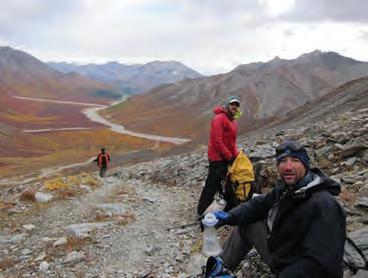
kaleidoscope of cliffs, escarpments, plateaus and forested valleys; the Salt River Range’s classic cirques, slender crests, and verdant foothills; the Wyoming Range’s geological island of bold peaks and rolling valleys painted with exposed strata; the Snake River Range’s sharp ancestral summits and rugged, rolling terrain; and lastly, the Tetons’ cathedralesque skyline, jagged aretes and proudly soaring crown, levitated by seismic surge and sculpted by glacial chisel.
There in the Tetons, author Thomas Turiano found his home and inspiration.
Turiano’s Life Lived Aloft
A professional guide, prolific climber and ski mountaineer, conservationist, guitarist, co-founder of the American Packrafting Association—and, of course, writer—the multihyphenate
“In the late 90s and early 2000s, Tom was like an old-fashioned telephone switchboard operator,” Goodbody said. “Everyone would call him to see what was happening or who needed a partner for something. He was a one-man Backcountry News Network who knew everything that was going on around Jackson. Whenever I got back from a trip, I would contact Tom to debrief. Select Peaks is the accumulated result of hundreds of people doing the same thing over decades. It’s the distilled knowledge of hundreds of people exploring every nook and cranny of Greater Yellowstone on foot.” Despite his authoritative influence, the man is a gentle force, zen-like and thoughtful. You lean in when he speaks, as if all that time in the wild has shaped him into someone of magnetic authenticity. Yet he centers our conversations on the landscape, the research, the 1964 Wilderness Act, his climbing partners and mentors—almost anything other than himself. This humility extends to his books—he entrusts the Select Peaks foreword to someone else, and fills a massive acknowledgments section with hundreds and hundreds of names. I was touched to find my own in there, for a small exchange over photos that weren’t even featured. Such is his generous appreciation of every contribution.
“Growing up in New York state, we skied a lot but I was intimidated by our local T-bar, and preferred to sidestep uphill—that’s where my love for ‘uphill travel’ was born,” Turiano said. “We were in suburbia, but on our acre of property, there was wild, wild land. An
amazing hill with steep, icy, snowy, rocky conditions. Great adventuring for a young boy. Eating black raspberries in the woods, mapping the trails in my mind … that kind of play was formative.”
“As I’m climbing a peak, following in the footsteps of a surveyor-turnedmountaineer from the 1800s, I don’t just want to know who did it first— I want to know how it felt for them.”
- Thomas Turiano, Select Peaks author
As Select Peaks came to life––not satisfied with secondhand adventures––Turiano’s goal quickly evolved from writing about the mountains, to experiencing them himself. In the pre-digital age, a map of the Tetons covered in hand-drawn ski routes hung on the wall of Turiano’s Jackson home, chronicling countless hours spent among the seven Select Peaks in that range alone. When the first edition came out in 2003, Turiano had climbed 85 of the 107. Tackling the remaining 22 peaks would take another 20 years, culminating in August 2023, just months before the second edition was released. Turiano reached the 13,620’ summit of remote, technical Mount Helen in the Wind River Range––the final peak of his ambitious list––alongside longtime climbing partner Forrest McCarthy. Turiano elevates the book’s narrative beyond a list of conquests and facts into a vivid portrayal of landscapes, the intricacies of navigating them, and the personal stories of those who dare to explore. His interest isn’t just in history for history’s sake but in understanding
62
Dropping into Moody Creek during a packraft loop in the Alaska Range, August 2011. Photo courtesy Thomas Turiano
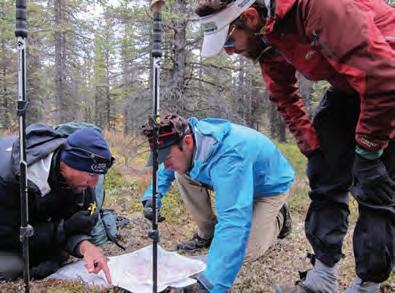
the lived experiences of others. “As I’m climbing a peak, following in the footsteps of a surveyor-turnedmountaineer from the 1800s, I don’t just want to know who did it first—I want to know how it felt for them.” This interest in human connection to nature, a communion transcending centuries of change, infuses a raw romanticism that makes Select Peaks a masterpiece that would make any poet proud. It’s as much a love letter as a history book, a song of the sublime.
Turiano shares, “I hope the book gives people something bigger than a bucket list. There’s so much more out there––from lesser-known peaks to climb, to old surveyors’ journals that haven’t even been transcribed yet.”
Mountaineer Tim Worth echoes this sentiment, saying, “Select Peaks can help disperse use, by giving people new ideas of where to go. Parts of the Tetons are overrun, but out in places like the Absaroka or Wyoming ranges, I hardly ever run into anyone beyond the trailhead––there’s plenty of room for others.”
Inner Landscapes: The Topography of Transformation
Eventually, my conversation with Turiano shifts to the rhetorical––why we seek the wild, how going deeper
into nature takes us deeper into ourselves. The wilderness ignites our senses while calming the static of our minds. As the journey oscillates between adrenaline and peace, our ultimate task becomes embracing its dualities.
Antidote to the frictionless curation of modern life, wilderness offers a raw, immediate cadence––
unmediated by screens or algorithms––that shifts us from observer to participant, part of an ancient yet immediate saga. The 1964 Wilderness Act’s articulation of “untrammeled” speaks volumes while underscoring a paradox: When we go to “find ourselves” in nature, we also find we are not separate from it. This acknowledgment of ourselves as human animals, part of an intricate and interconnected ecosystem, is vital to our cultural and individual ripening from a position of dominion to stewardship––a truth long understood by the Indigenous peoples who have always known these lands not as just as resources, but as relatives, animate beings with their own stories and spirits. Through this perspective, Select Peaks brings us back to the wild for something more nuanced and profound than escape
or adventure. Every summit becomes a pilgrimage, a return to our place as part of a greater whole. By protecting these mountains, we honor those “untrammeled” parts of ourselves, and in this symbiosis, we find our own truest expression—caretakers of a world that, in turn, cares for us.
Turiano crafts Select Peaks with unselfconscious authenticity. While its narrative centers on the details of topography and history, every word is deepened by the intimacy of firsthand experience. This depth is echoed in the letter penned by Livingston author Todd Burritt, that Turiano chose to introduce Select Peaks, in which Burritt writes:
“I saw that my little world belonged to something much bigger, something as wild and rugged as my dreams… There are still a handful of Select Peaks I haven’t climbed. Sometimes it feels like I’m saving them––like if I ran out, a frontier would close. That’s not quite true, though… This isn’t a list of boxes to check. It’s a concept that you explore with your life … Your Select Peaks might not even have anything to do with climbing mountains. And that is the mark of mountain literature at its absolute best.”
Lauren Burgess weaves poetry, storytelling, and stoke into brand messaging, marketing, and creative writing, helping good people and businesses connect with their communities and elevate their impact. Her next big adventure is into the wilds of entrepreneurship–she’s starting Caldera Cacao Roasters, a bean-to-bar chocolate company in Bozeman, with her husband, Logan.
 Navigating with paper map while co-guiding a packraft trip in the eastern Alaska Range with Andrew Skurka (center), August 2011. Photo courtesy Thomas Turiano
Turiano on the summit of Hoback Peak, Wyoming Range, July 2014. Photo courtesy Thomas Turiano
Navigating with paper map while co-guiding a packraft trip in the eastern Alaska Range with Andrew Skurka (center), August 2011. Photo courtesy Thomas Turiano
Turiano on the summit of Hoback Peak, Wyoming Range, July 2014. Photo courtesy Thomas Turiano



64 eralandmark.com | 406-586-1321 Robyn Erlenbush, CRB, Broker/Owner. Each office independently owned and operated. 116 Sourdough Ridge Road, Bozeman, MT $5,250,000 MLS# 390130 Bozeman, Big Sky, Livingston & Ennis, Montana Montana is calling. Will you answer? Stay a week... or a lifetime ®

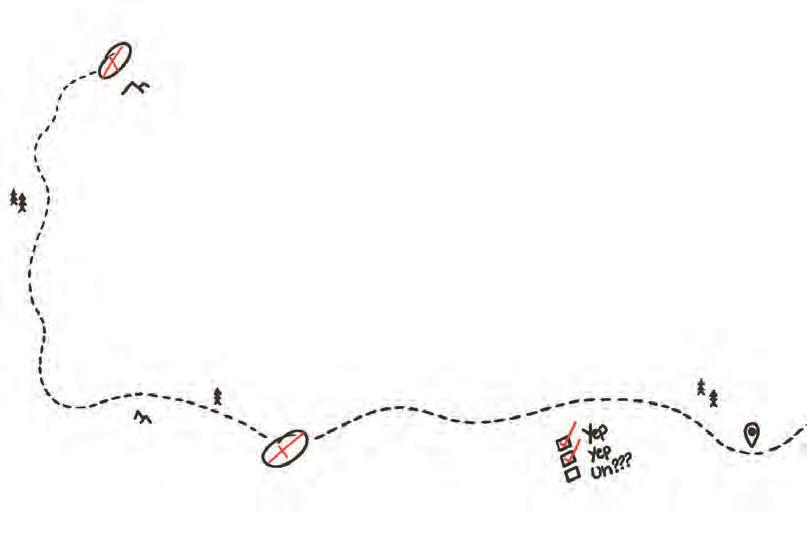
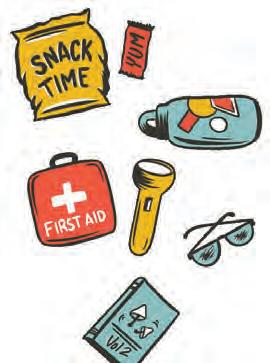
Now let’s Montana-size that list. By extra water, I mean a couple of gallon jugs. Vehicles break down or run out of gas, and in the vast, no-cell-signal spaces of Montana you can find yourself stranded pretty far from help. It can be hours before another vehicle goes by, especially when you get off the interstate—which I strongly recommend. A solar-powered phone charger could be a life saver, and a few extra batteries may come in handy. Sunglasses? Check. Hat? Check. Freak snowstorms are not uncommon in the shoulder seasons of spring and fall, so stash some warm clothing.
Pick up a few pocket field guides to toss in your travel bag. The National Audubon Society guides are the gold standard, and you’ll want one for trees, wildflowers, Western birds and mammals. If you plan on collecting mushrooms, my favorite ‘shroom guide is All That the Rain Promises and More… by David Arora.
65


r ivers and roads
Okay, let’s drive to some water. It’s customary to start at the beginning, but I’m going to break with convention and start at the middle. And by that I mean dead center in central Montana. On the floor of the Yogo Inn in Lewistown, there’s a tile that signifies the exact geographic center of the state—as good a place to start as any. Heading northeast out of Lewistown on U.S. Route 191, you’ll cross several creeks (Montanans say “crick”). If it’s June, you’ll be seeing Montana in her peak splendor. Western larch, ponderosa pine, Rocky Mountain maple and hundreds of other species of trees and shrubs are full of that soft green that carries the promise of warm summer days to come. If it’s been a wet spring, that could also mean flooding as the snowmelt overwhelms the smaller waterways, so make sure you have alternate routes figured out before heading out. On that note, I suggest you pick up a Montana official highway map. They’re free, and they’re pretty much everywhere. You can “OK Boomer” me all you want, but when I’m out there in the middle of nowhere under a dazzling blue sky, studying the paper map spread out across my hood, sun beating down, well, I feel like I’m in a cologne commercial or something. Anyway, you’ll be glad you have it when your phone has no bars.
Highway 191 crosses the Missouri River at the eastern edge of the Charles M. Russell National Wildlife Refuge, a spectacular stretch of badlands, prairie, thousand-foot-deep canyons and forested ravines along the Missouri as it flows into Fort Peck Lake, one of Montana’s largest bodies of water (it actually has more miles of shoreline than California!). There’s plenty of opportunity for fishing, camping and hunting, and for those who enjoy viewing the wildlife, you won’t be disappointed. Bighorn sheep roam the CMR, as do pronghorn, deer, coyote, cougars and a herd of 4,000 prairie elk. Birders can see sharp-tailed grouse, sage grouse, mountain plovers and some 200 other species.
Just up the road near Malta is the Bowdoin National Wildlife Refuge, a sprawling complex of prairie pothole wetlands situated on both the Central
and Pacific flyways. The Bowdoin sees more species of migratory birds than anywhere in Montana. I hope you remembered to bring your spotting scope and binoculars, because on the 15-mile auto tour you’ll have a crack at dozens of species of grassland birds, as well as showy water birds like white-faced ibis and the magnificent tundra swan.
If it’s large bodies of water you seek, you’ll find plenty to fill your joy tank at the western end of the Hi-Line. Stick to Highway 2 around the southern end of Glacier into the Flathead Valley and you’ll pass Hungry Horse Reservoir, Whitefish Lake and, of course, Flathead Lake, all popular summer destinations. Turn east at Libby for 12 miles and you’ll reach the Libby Dam at the foot of Lake Koocanusa. The remote reservoir is one of the most beautiful lakes in Montana, stretching some 90 miles north into British Columbia. I once made the 59-mile Lake Koocanusa Scenic Byway drive from the dam up the east bank to Eureka, and discovered that my 4Runner could go exactly 58 miles after the gas light came on. Another lesson learned: it can be a long way between gas stations in this huge state, so don’t pass up a chance to top off that tank.
Two hundred miles south of Libby near Missoula, there’s another confluence of two rivers, the Blackfoot and the Clark Fork, where water mixes with history. The Milltown Dam near Bonner, 7 miles upstream from Missoula, held back millions of tons of toxins and heavy metals that had collected for a century after flowing 120 miles down the Clark Fork from Butte’s mining tailings. In the late 1990s the dam was showing its age and poisons began to appear in the nearby water table. The prospect of this toxic tsunami flowing through the middle of Montana’s second largest city resulted in the removal of the dam in 2002. For the first time in 100 years, the Blackfoot River once again flowed into the Clark Fork in the area the Salish call “place of the mature bull trout.” There’s a nice state park there with a walkway that takes you to the confluence, the old dam’s footings still visible on a bluff across the Clark Fork.
66
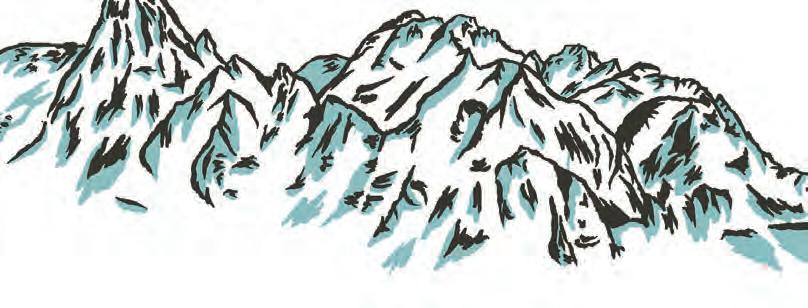
GeoloG y and d ispl ay
For geological wonders, the central and eastern areas of the state are studded with spectacular treasures. Hidden in the rolling farmland about 90 miles north of Great Falls is an area known as Rock City, a jaw-dropping mile of canyon where the Two Medicine River joins Birch Creek to become the Marias River. Its spires, hoodoos, cliffs and sandstone formations wouldn’t look out of place in the Southwestern desert. The north bank of the river marks the boundary of the Blackfeet Nation, and the tribe has considered Rock City a sacred area for centuries.
Out along the eastern border of the state you’ll find Makoshika State Park (say “muh-KO-shi-ka”), a dramatic badlands landscape riddled with fossils of T-rex, Triceratops and other dinosaurs, as well as significant indigenous archeological sites. The otherworldly rock formations and endless hiking trails make this a popular destination for eastern Montanans, although there are usually plenty of open spots in
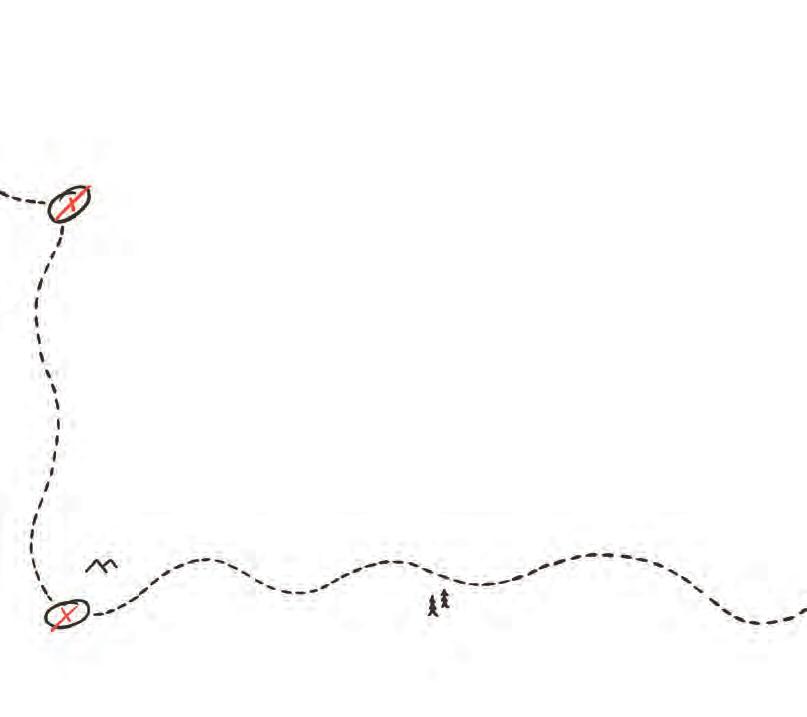
Historical Hot s pots
Montana’s history is endlessly fascinating, and you’ll find significant sites in every part of the state. Way up in the northeast corner, the area surrounding the North Dakota border once known as MonDak is rich in state history, and the confluence of the Yellowstone and Missouri rivers has attracted human settlement for thousands of years. There’s a terrific historical museum in the little town of Culbertson where you can easily spend half a day, and the MonDak Heritage Center in Sidney will keep you occupied for the other half. Fort Union, just across the border on the Missouri, is a must-see. The splendidly restored National Historic Monument was originally built by the American Fur Company in 1828, and the imposing structure was the most important trading post in the northern plains for at least 50 years. It served as an economic center where several tribes like the Assiniboine, Blackfeet, Mandan and Hidatsa traded buffalo robes and other hides and pelts for clothing, beads, pipes, cookware and guns. It’s a fascinating stop, as is nearby Fort Buford, where Sitting Bull surrendered in 1881.
its 28-site campground, which includes a large yurt and a tipi. Continuing south, you’ll pass through Wibaux (great brewery, weird lava rock church), to the charming little ranch town of Ekalaka in the very southeast corner of the state. But don’t skip the main attraction. Seven miles north of Ekalaka lies Medicine Rocks State Park, which features some of the most mind-blowing sandstone structures in the West. When the great inland sea that covered Montana receded 65 million years ago, it left strata of sand and volcanic material that compacted into rock. Over the ensuing millennia, rain, cold, wind and snow have carved out a bizarre grouping of enormous sandstone structures. These flatland monoliths—some as big as a Marriott—resemble something that could have been sculpted by Dr. Seuss and Henry Moore after the gummies kicked in. Their swooping curves and tunnels, full of caves, arches and scooped-out divots create a hauntingly beautiful symphony of tones when the late afternoon wind blows across the prairie.

67

For pure driving pleasure with maximum eye candy per mile, go dead south from our starting point in Lewistown. Just this side of the Wyoming border is the charming, historic mining town of Red Lodge. From there you can take the Beartooth All American Road, an incredible, serpentine stretch of Highway 212 that climbs to the Beartooth Pass, elevation 10,947 feet. At the top of the pass, a 360-degree view reveals 20 peaks higher than 12,000 feet across five mountain ranges, including Granite Peak, the state’s tallest at 12,799 feet. The road runs 68 miles through Wyoming and back into Montana to the northeast entrance of Yellowstone National Park. The Beartooth has been called the No. 1 ride for motorcyclists, and many agree that it’s the most beautiful drive in America. The alpine forests and jewel-like glacial lakes are surrounded in summer by fields of wildflowers, and you can spot all kinds of wildlife from marmots, deer and elk to shaggy white mountain goats, who like to hang out near the top of the pass and lick minerals off the exposed rock.
My wife and I left Red Lodge one morning last summer and
got within a quarter mile of the top of the Beartooth on our way to Yellowstone, but a sudden snowstorm turned us back. We drove toward Cody with thoughts of driving in through the East Entrance of the park, but happened upon an alternate route, the Chief Joseph Scenic Byway. To our amazement, it rivaled the Beartooth with its dramatic scenery, topping out at 7,874 feet at Dead Indian Pass. Unlike the Beartooth, Chief Joseph Byway is open year-round, and its stunning vistas of towering peaks, massive cliffs and rugged valleys make it a worthwhile drive any time of year.


When you’re road tripping through the diverse landscape of a place as pretty as Montana, it’s hard to go wrong. Just remember that Montana’s natural features are bigger than they seem on the map, distances are farther, and services are scarcer in the wide open spaces, especially east of the divide. But if you’re well prepared and thirsty for new experiences, Montana’s highways and byways will lead you to a lifetime of discoveries and memories, giving you lots of tales to tell when you reach the end of the road.

G H ost town Ha U nts
A fun way to mix history with a bit of creepiness is a tour of Montana’s ghost towns. You can take a drive down the gorgeous Bitterroot Valley south of Missoula to Chief Joseph Pass at the Idaho border, and from there it’s only an hour’s drive to Bannack State Park, arguably Montana’s best known ghost town. It’s remarkably well preserved, supposedly haunted out the wazoo, and its proximity to I-15 and the town of Dillon make it a popular stop.
There are more than 100 ghost towns in Montana, most west of the Continental Divide where the mining action pulled in people from all over the world. My grandfather and namesake, Ednor A. Therriault, worked as a gold miner in Garnet, driving an assay truck during the settlement’s last gold boom in the 1930s. You can stay overnight in Garnet in a cabin rented through the BLM. Like Bannack, Garnet is well maintained, and also purportedly haunted. I spent a night there alone one February, the only living soul for miles around. I trudged through 4 feet of snow at midnight, exhorting the spooks and spirits to make their presence known. I was skunked. Perhaps the only time you really see a ghost is when you’re not looking for one.
68
i t's a ll
bo U t tH e
a
scen ery


oad t rip playlist
Much of Montana, especially east of the Divide, is bereft of cell coverage, so it’s a good idea to download your playlists and podcasts while you’re connected. Here’s a collection of music to keep you motorvatin’, and a few interesting podcasts to occupy your mind on those long, lonely stretches.
Podcasts

“Blue Highway” by Rosie Flores
“On the Road Again” by Willie Nelson (Inclusion on every road trip playlist is a federal mandate).
“We're on the Road” by Robbie Fulks (much funnier than Willie’s song)
“Western Skies” by Blue Rodeo
“Radar Love” by Golden Earring
“Detroit Rock City” by KISS
(Maybe skip the car crash at the end.)
“40 Miles of Bad Road” by Duane Eddy
“Three Chords and the Truth” by Sara Evans
“Going Up the Country” by Canned Heat
“Maybellene” by Chuck Berry
(He invented the word “motorvatin’.”)
“Highway 70 Blues” by the Bottle Rockets
“Wagon Wheel” by Old Crow Medicine Show
“Mercury Blues” by David Lindley
“Six Days on the Road” by Steve Earle
“Hot Rod Lincoln” by Commander Cody and His Lost Planet Airmen
“Drive My Car” by the Beatles
“Going Mobile” by the Who
“40 Miles to Vegas” by Southern Culture on the Skids
“White Line Fever” by Merle Haggard
“No Particular Place to Go” by Chuck Berry
“Wide Open Spaces” by the Chicks
“I’ve Been Everywhere” by Johnny Cash
(If you’re in Great Falls maybe you’ll be lucky enough to see local Cash tribute artist Merle Travis Peterson performing it.)

Words Out West: Montana author Jay Kettering showcases Montana poets, writers and musicians, from poet laureate Chris La Tray to songwriter Margi Cates.
The State of Montana: Author Russell Rowland discusses Montana’s cultural and political landscape with Big Sky movers and shakers like ex-governor Marc Racicot and filmmaker Lynn-Wood Fields.
Montana Outdoor Podcast: This in-state treasure is hosted by Downrigger Dale.
Death in the West: The first two seasons of this Montana-produced true crime podcast examine the murder of union organizer Frank Little in Butte, and the disappearance of Richard McCoy, a plane-jacker who was inspired by D.B. Cooper.
Fly on the Wall: SNL alums David Spade and Dana Carvey interview past and present SNL cast members, taking hilarious deep dives into the creative process and the DNA of comedy.
Disgraceland: Jake Brennan hosts this show featuring big-name music stars involved in serious crimes, even murder.



listen to tHe playlist on spotify listen to tHe playlist on spotify
Say More: Amy Poehler plays Dr? Sheila (the question mark is a legal requirement), a clueless couples therapist on this wildly funny and largely improvised new podcast.

Ednor Therriault is a freelance writer whose love of Montana history and culture has led to eight books, including Montana Curiosities and Haunted Montana. His latest release, Big Sky, Big Parks, is an entertaining travel companion to Yellowstone and Glacier national parks and all that Montana in between. He also writes music and performs as Bob Wire. Therriault lives in Missoula with his wife Shannon.
Halle Hauer is a Bozeman-based graphic designer and illustrator, drawing inspiration from the stunning scenery and diverse activities abundant in Montana.
69

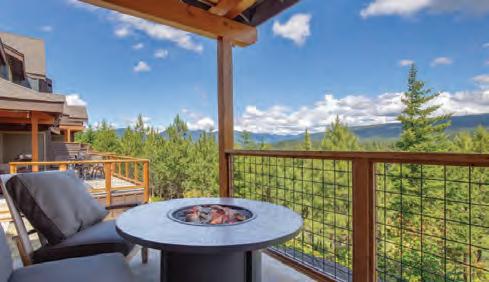




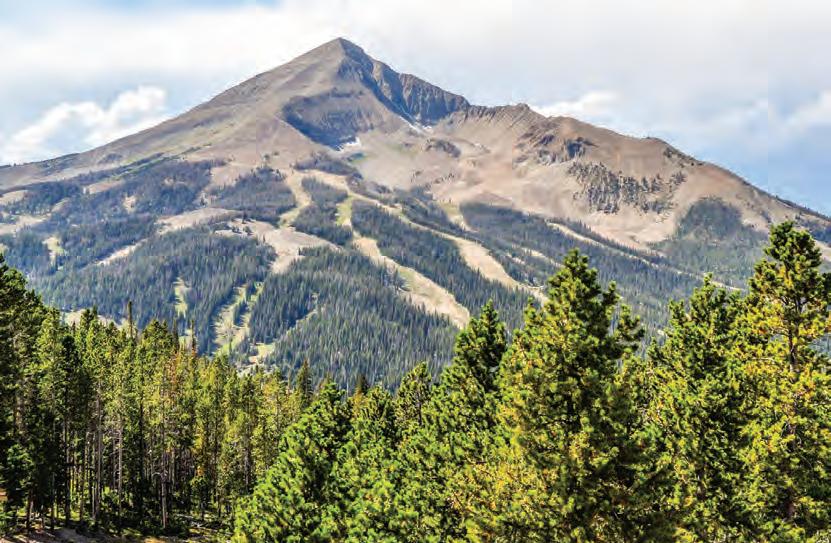
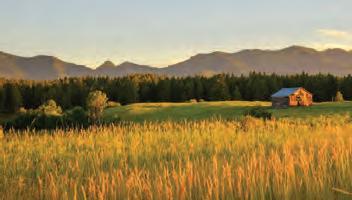
#1 in MT We’ll help you find a home to fit your lifestyle. We’re here. Today. Tomorrow. For you. For life. bigsky.bhhsmt.com ©2024 BHH Affiliates, LLC. An independently owned and operated franchisee of BHH Affiliates, LLC. Berkshire Hathaway HomeServices and the Berkshire Hathaway HomeServices symbol are registered service marks of Columbia Insurance Company, a Berkshire Hathaway affiliate. Equal Housing Opportunity. For Life Member FDIC | Equal Housing Lender YOUR BIG SKY COUNTRY BANKING EXPERTS From construction, equipment and building loans, to commercial and residential land purchases, you can count on us to be your financial service experts every step of the way. Visit us online at stockmanbank.com, give us a call or stop by to see how we can help you make your Big Sky Country vision become a reality. Montana’s Brand of Banking

Amplifying Outdoor Narratives
BeAlive Studios joins Bozeman’s thriving film scene
By Taylor Owens
BeAlive is an aggregator of all things meaningful, and builder of curated platforms for the outdoor-obsessed culture. Through a range of media formats, BeAlive dives deep into stories, experiences, and adventures that resonate with audiences looking for purposeful content in the outdoor adventure, sustainability, and environmental spaces.
BeAlive Studios, BeAlive’s visual production arm, recently made the move to Bozeman to be a part of the growing film industry in the state of Montana.
“We are connected to the outdoors and rooted in the outdoors. And as we looked at all the different locations, Bozeman fit the bill as an incredible town on the rise with incredible companies and brands that are associated with the outdoors, much like ourselves,” Chris Keefer, CEO of BeAlive, said.
With backgrounds in long-form television, the members of BeAlive Studios have been able to craft some of the most cutting-edge short films, docu-series, digital shorts and episodic content that share stories of people at the forefront of their field, whether that be those involved with sustainability efforts, conservation or inspiring outdoor pursuits.
“BeAlive as a whole, we create platforms for niche audiences,” Keefer said. “As we continue to build these kind of purpose-driven communities—Rivers are Life is one of them, BeAlive is another one—we continue to expand in the space and amazing partners are coming on to tell their stories with an authentic audience that we have curated.”
Under the larger umbrella of BeAlive is BeAlive Studios and Rivers are Life. Rivers Are Life is a brand that aims to bring inspirational, ecosystem-saving stories from river heroes all around the globe. This brand gives an inside look at individuals and organizations that are healing our world’s vital rivers.
“The goal is to do for rivers what's already been done for oceans,” Zach Green, president of BeAlive, said. “Both from an entertainment perspective and a global network of conservationists. And nobody is highlighting the work in a way that can activate an audience. So the goal is to both entertain, educate and activate the viewer.”
Some of Rivers are Life’s recent films include Gifts of the Nile, Life Afloat, Mr. Trash Wheel, Study Abroad, and Toxic Art. Each of these films include a focus on real people who are making a difference facing environmental challenges at different rivers. These stories span the gamut of locations from southeastern Ohio, Tennessee, Cambodia, Baltimore and Egypt.
“Our expertise in telling stories helps bring awareness to the plight of our rivers. There’s great work, hopeful work happening all over the world to that end as well,” Green said.
The most recent episodic series, River Heroes, highlights a special set of individuals and organizations working on the ground, and on the water, committed to preserving and protecting the waterways they love.
“In today’s society, negativity outweighs positivity, and we’ve got to be a voice for hope and the amazing things
72
Sponsored Content
that are happening,” Green said. “The River Heroes series really brings light to the incredible individuals that are stepping up and making a change. One of our initiatives is to continue the positive perspective of everything and look at the things that are actually happening.”
BeAlive also offers a variety of other films and series under the BeAlive Studios umbrella such as the films Frenchy, which follows 82-year old French snow/ski racer and mountain biker, Jacques Houot; Waves of Purpose, which follows Anthony Walsh, a top pro surfer and GoPro athlete as he shares his personal journey in life; and Maddie, which follows Rocky Mountain fly fishing guide and conservationist Maddie Brenneman.
“Part of the problem is that no one is telling stories with a neutral ground,” Keefer said. “It’s either for certain corporate reasons, or it’s for an NGO perspective. I think Rivers of Life is a neutral party and saying that we all have to take action, whether it's climate change or protecting our rivers or wildlife, we need to tell those stories. When you see a story of hope, it takes 15 stories of hope to outweigh one negative story. We’ve got to keep telling them.”
BeAlive has gone on to win several accolades for their character-driven storytelling over the years, including the Sanctuary Selections Winner at Thunderbay International Film Festival in 2024 for Toxic Art; 4x Official Selections in 2023 and 2024 and Honorable Mention Winner at Wild and Scenic Film Festival in 2024 for Toxic Art; a Gold Addy Award in 2023 for Keepers of the North; and first place at Elgin Short Film Festival for Watershed Warriors
“We specialize in telling stories and building communities,” Kate Richter Green, vice president of current programming at BeAlive, said. “Telling stories in the hardest to reach places on the planet and coming back with something amazing and worthwhile and epic and being able to turn that hardship and that adventure into something incredibly entertaining.”
The spirit of the West is quintessential to the core of what BeAlive’s mission is, and the spirit of the West is created by those who live, play, and make meaningful change here in the Rocky Mountains.
“BeAlive is an ever-present energy and it’s enabling the pursuit of moments that matter,” Keefer said. “So it’s a palpable energy. To explain BeAlive in one word, it’s an energy and it’s felt in Montana.”
Check out BeAlive’s films and other content at gobealive.com.
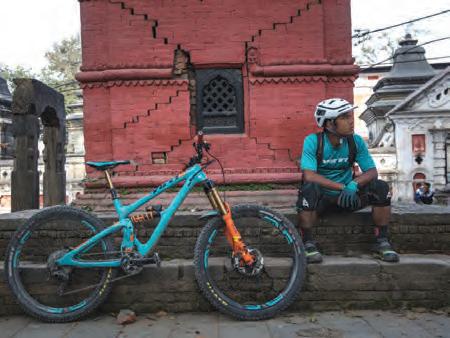
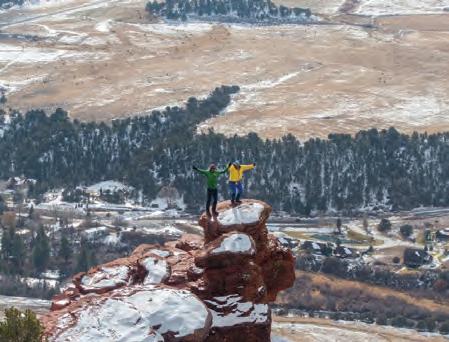

73


LAND HEAR THEM HOWL // 80 BUILDING IN A DICHOTOMY // 88 SUSTAINING THE SPIRIT OF CONSERVATION // 93 THE GILA // 100 THE ‘RED, WHITE AND BLUE TEAM’ // 107
The last light of day illuminates the Madison River as it flows through Bear Trap Canyon north of Ennis, Montana in the Lee Metcalf Wilderness. Photo by Ethan Schumacher
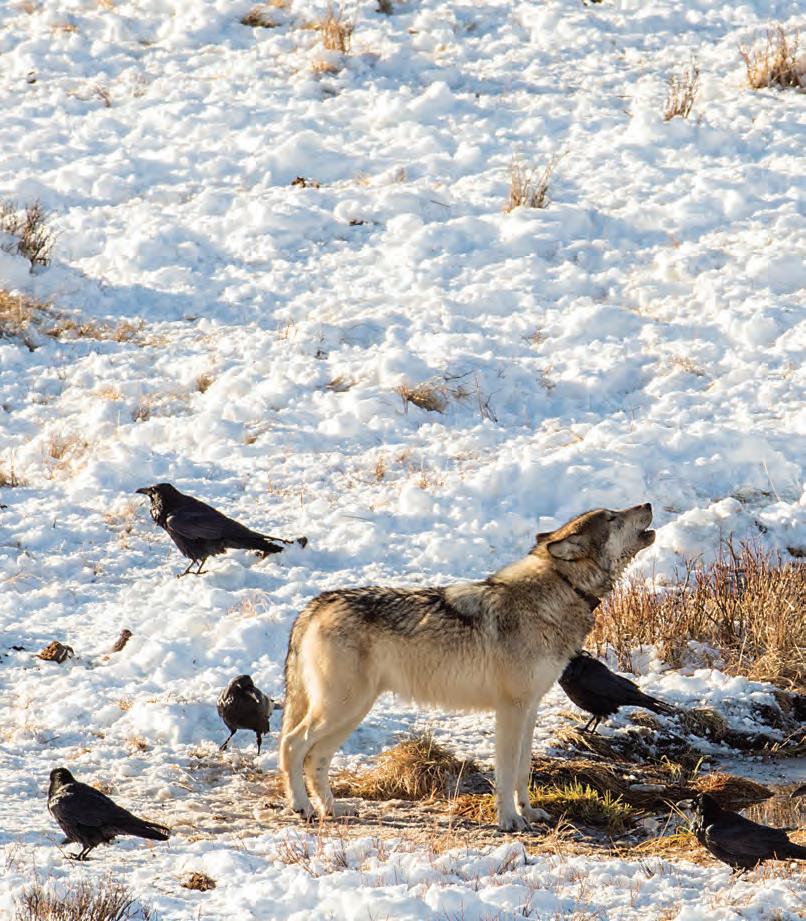
Hear them Howl
Can the study of wolf sounds lead to more respectful coexistence?
By Julia Barton
76
The spectral howl of a gray wolf is one of the most distinctive sounds of the American West. And yet, there was a time in Greater Yellowstone’s not-so-distant past that the landscape was void of the iconic call. Wolves were nearly hunted to extinction in the Lower 48 by the mid 1900s, and through thoughtful conservation and reintroduction, have largely recovered in Montana, Wyoming and Idaho, where states now face the task of addressing species management.
Folks in the West often have a lot to say about wolves and their right to exist on the land. One area of research, however, is listening instead to what the predators are saying.
“Wolves [are] one of the most hated species in the world, and yet have the most iconic sound probably of any animal on the planet,” Dr. Jeff Reed told Mountain Outlaw.
Reed, a programmer and computational linguist based just beyond the northern border of Yellowstone National Park, is

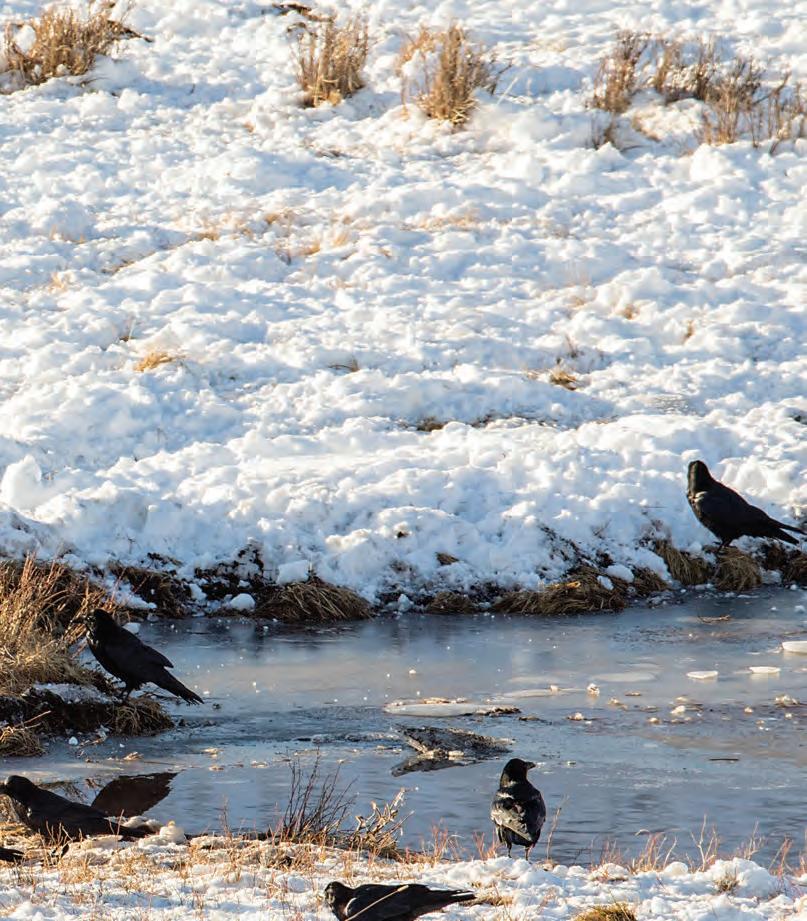
pioneering an effort to understand how wolves communicate. Reed’s findings have the potential to better guide a future where man and wolf can coexist.
77
A wolf howls at Black Tail Pond in Yellowstone National Park. Photo by Jim Peaco / NPS
A spectrogram, the visualization of sound, shows the howl of Yellowstone Wolf 907F, a famous female from the Junction Butte Pack. Image courtesy of Jeff Reed
THE WAR ON WOLVES
Wolves have a nuanced history in the U.S. Once roaming North America from modern-day Mexico to Alaska, the largest predator in the dog family was driven out of much of its historic range as the American West was colonized by European settlers. Agriculture and livestock displaced natural prey, and wolves turned to domestic stock for food, according to Yellowstone National Park reports. Wolves became a symbol of the untamed nature of the West during a period of settling the wild, and were nearly eradicated as a result.
National predator control programs— including shooting, trapping and poisoning—rid most of the Lower 48 of wolves altogether by the early 1900s, with the last stronghold existing in northeastern Minnesota, according to the U.S. Fish and Wildlife Service. By the 1970s, extensive park research found no evidence of wolves established inside Yellowstone.
Threats to wolves’ long-term survival were officially recognized by the U.S. government in a March 11, 1967 Federal Register, which listed them as “threatened with extinction” under the Endangered Species Preservation Act of 1966. This was the country’s first federal legislation for endangered species and granted limited protection to threatened native species.
In 1973, the Endangered Species
An estimated total of at least 2,700 wolves were distributed across the region in 2022, according to annual reports from state wildlife management agencies.
Act expanded these protections with the Rocky Mountain wolf, Canis lupus, being among the first species listed. The act identified the Greater Yellowstone Ecosystem as a recovery zone. Congress later established reintroduction plans and between 1995 and 1997, 41 wolves from Canada and northwestern Montana were famously relocated into Yellowstone. Wolves have since gained a foothold across Montana, Wyoming and Idaho, where they were delisted from the ESA in 2011. An estimated total of at least 2,700 wolves were distributed across the region in 2022, according to annual reports from state wildlife management agencies.
TALKING WITH WOLVES
Dr. Jeff Reed was born and raised in Montana, and is a self-identified “mountain outlaw.” He lives and works in Paradise Valley just north of Yellowstone National Park’s North Entrance, where he shares his land with all sorts of wildlife, wolves included. Just beyond the threshold of his home office, expansive views of the Yellowstone River and Emigrant Peak lead into the heart of the Greater Yellowstone Ecosystem. The views aren’t the only thing that make his office unique—the space is full of taxidermied game, tools, maps, collected stones, pieces of antler shed and, most notably, sound.
Stepping into Reed’s office feels more like stepping outside than in. The chirp of local songbirds, the dry rustle of grass and the rhythmic sloshing of the river hang softly in the air as recorders from across Reed’s property stream live audio right into his work space. Reed’s academic background is in linguistics, including a PhD in computational linguistics applied to ancient texts, although he turned to tech for much of his career, working on software for the likes of Microsoft, Google and Amazon. Now he applies his trained ear listening to wolves in and around Yellowstone, and his programming skills to decipher what he hears.
“When I moved back to Montana
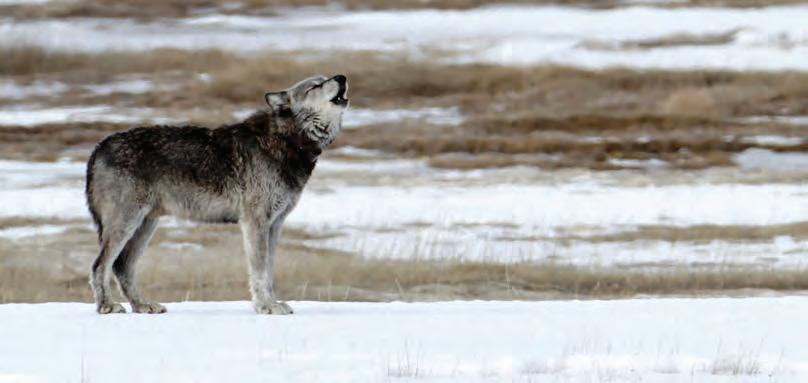
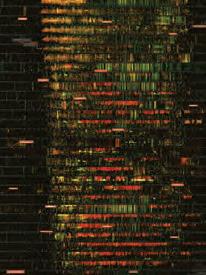 The alpha male of the Canyon wolf pack howls in Yellowstone National Park’s Lower Geyser Basin. Photo by Jim Peaco / NPS
The alpha male of the Canyon wolf pack howls in Yellowstone National Park’s Lower Geyser Basin. Photo by Jim Peaco / NPS
permanently over seven years ago, I really wanted to start looking at animal communication,” Reed said. “It began mainly as a hobby, because I grew up in the outdoors, hunting and fishing the Absaroka mountains … and I noticed that there weren’t a lot of biologists studying animal communications that were also linguists.”
Reed works in collaboration with biologists on the Cry Wolf Project, which is run by the Yellowstone Wolf Project, a park initiative that has helped to monitor wolves since their reintroduction. The Cry Wolf Project records 24-hour audio of wolves yearround from up to 60 recorders at a time. Reed is also part of Languages of Life, a group of Park County locals which records and publishes wildlife sounds from outside the park. The audio recordings are fed through an artificial intelligence program Reed developed to disentangle wolf sounds from other inputs, such as bird calls, coyote yips and airplane traffic.
Wolves make a variety of different types of noises, ranging in volume, pitch and duration, and the canids are likely able to pick out slight nuances to determine the meaning of the sounds they hear, according to Reed. For example, larger wolves often howl at a lower pitch than smaller members of the pack, and playful yips sound different than growls indicating a nearby threat.
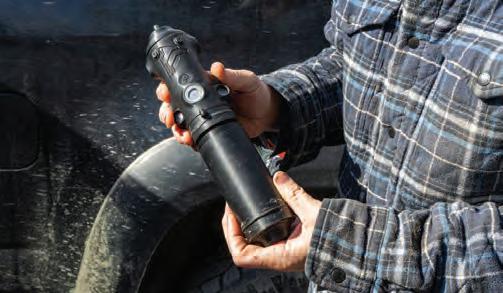

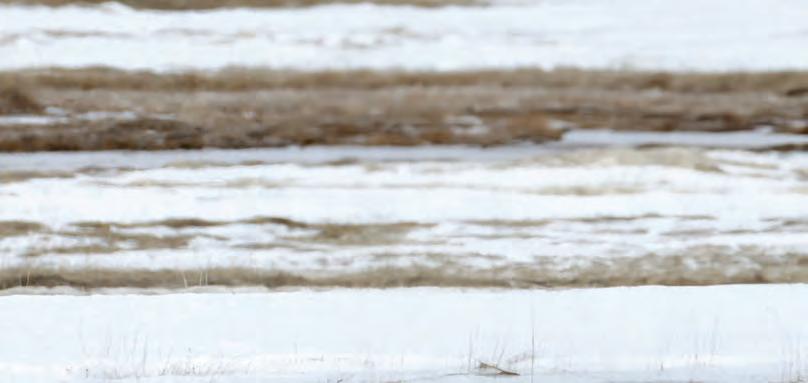
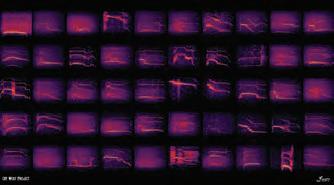
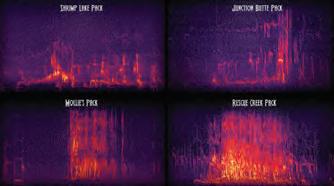 Spectrograms show a visualization of sounds from Yellowstone wolves. The first image (left) shows a full month of vocalizations. The next image (center) acts almost like a dictionary, showing different types of vocalizations. The final image (right) shows four different spectrograms from four different wolf packs. Images Courtesy of Jeff Reed
Top: Dr. Jeff Reed holds the GrizCam, attached to its battery component. Photo by Julia Barton Above: Reed analyzes a spectrogram of a wolf chorus howl recorded in Yellowstone National Park in January, 2024. Photo by Julia Barton
Spectrograms show a visualization of sounds from Yellowstone wolves. The first image (left) shows a full month of vocalizations. The next image (center) acts almost like a dictionary, showing different types of vocalizations. The final image (right) shows four different spectrograms from four different wolf packs. Images Courtesy of Jeff Reed
Top: Dr. Jeff Reed holds the GrizCam, attached to its battery component. Photo by Julia Barton Above: Reed analyzes a spectrogram of a wolf chorus howl recorded in Yellowstone National Park in January, 2024. Photo by Julia Barton

“When you shift your mindset from holding a bias against the predators and the prey populations that are sharing the landscape with your livelihood … you can think about your management practices in relation to keeping those things around. Is there something I can be doing as the steward of this particular spot on Earth that can make all those things work together? That’s really the shift."
–Cody Goldhahn, engineer
The spaces that exist between words in written language aren’t reflected in verbal speech, as words often bleed together, Reed explained. Similarly, we can’t know exactly where one so-called wolf word stops and another starts by listening, but we can use tools called spectrograms to visualize these vocalizations.
These visual displays of sound are created through plotting its frequency, time and amplitude. Reed uses spectrograms to teach his AI what wolf sounds look like so it can disentangle them from other sounds through image recognition. Reed has looked at so many
spectrograms that he’s often able to pick different types of wolf vocalizations out of a lineup. Automating this process makes wolf recognition more accessible, eliminating the need for humans to sift through hours of data.
“The predictions aren’t supposed to be 100 percent accurate, but we know we can get above 90 percent,” Reed said of the AI model. “We can have a much better chance of knowing if wolves are in the area permanently, and we can do that with a fraction of the cost and in a fraction of the time.”
The quest to decipher animal communication isn’t novel. For example,
in the 1960s, scientists discovered that whales sing to each other, sparking a large-scale conservation movement for the animals and the 2020 creation of Project CETI, a well-funded nonprofit studying whale communication. The work Reed is involved in is smaller in scale and funding, but asks the same core question: What can we learn from understanding how other species communicate, and how can it shape our relationship to them?
INNOVATION AND APPLICATION
Applying bioacoustics, the crossdisciplinary study of biology and sound, can help identify wolf pack size and distribution, providing biologists with more accurate population estimates, according to Reed, a statistic that is used to make management decisions including hunting quotas.
Reed also posits that ranchers could use the recording devices and software to determine the presence of resident wolf packs on their land based on how often they vocalize. Reed notes that near Yellowstone, recorders typically capture a pack chorus howl about three out of every four days where wolves establish long-term residency. If recorders detect only a few chorus howls per month, it suggests the pack is transient. In cases of livestock loss, recorders could prove whether or not predation was the cause, which is important as states often partially reimburse ranchers for depredation losses.
“I know people who are spouting off about how many wolves they have [on their land],” Reed said of his neighbors in Paradise Valley. “Let’s get back to the science, let’s prove it. That’s my challenge.”
In areas with resident wolf packs, non-lethal deterrents such as fencing, livestock guardian dogs and range riders—a practice in which humans accompany livestock to detect and deter predators—can be employed. A hypothetical bioacoustics deterrent could protect stock by using AI to recreate the low-frequency howls wolves use to tell others to stay away. Reed called this a “moon shot,” but said it’s not out of the realm of possibility.
In order to capture 24-hour audio,
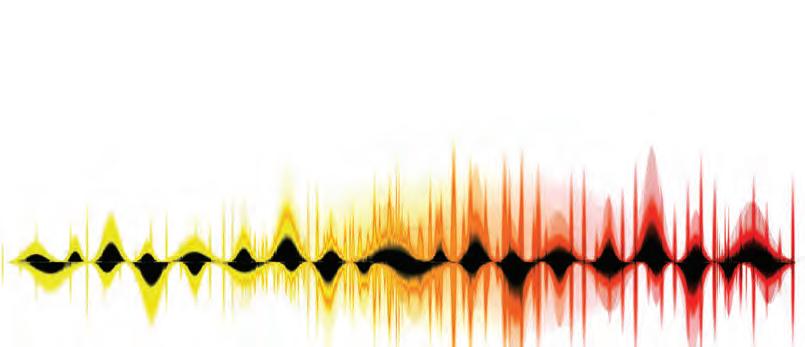 A wolf portrait taken in Yellowstone National Park. Photo by Jacob W. Frank, NPS
A wolf portrait taken in Yellowstone National Park. Photo by Jacob W. Frank, NPS
Reed spearheaded the development of a new recorder with extended battery life and a compact design. A new innovation, GrizCam, developed by Reed’s private company Grizzly Systems Inc., utilizes technology akin to Tesla batteries to capture audio and video for more than a year on a single charge. While still in its early stages, the company aims to provide tools for “conservation-led research,” as Reed explains.
The engineer behind the camera trap is Cody Goldhahn, a fifth-generation rancher from Cardwell, Montana. Goldhahn, a full-time engineer for the nonprofit arm of National Geographic on conservation-focused engineering, met Reed in Washington, D.C. before the pandemic. The two began working on the camera as a side project, and a few years later, GrizCam now pushes the boundaries of Reed’s studies.
“For me, it’s the best and coolest application I can think of using an engineering degree,” Goldhahn, a Montana State University graduate, told Mountain Outlaw. “As a science project, it gets more interesting the more data you have, especially in an AI driven world.”
Predators certainly pose a risk to livestock producers—the Montana Department of Livestock confirmed 151 depredation losses in 2023. Goldhahn said that landowners may use the GrizCam technology for predator detection, whether it be wolves, coyotes, grizzly bears or others. Ranching is about sustainability and maintaining a healthy landscape for profitable agricultural production. Goldhahn believes conservation to be a key piece of this sustainability.
“When you shift your mindset from holding a bias against the predators and the prey populations that are sharing the landscape with your livelihood … you can think about your management practices in relation to keeping those things around,” Goldhahn said. “Is there something I can be doing as the steward of this particular spot on Earth that can make all those things work together?
That’s really the shift.”
Indeed a 2023 survey conducted by Montana Fish, Wildlife and Parks in collaboration with the University of Montana reported a growing tolerance toward wolves on the landscape among residents, despite support for hunting and lethal control.
“It’s hard, once you start understanding animals, to not respect them more,” Reed said. “And in some cases, want to conserve them more.”
Montana, Wyoming and Idaho all currently sell wolf hunting tags, use hunting as population control and employ other management strategies such as lethal removal following conflict reports. State agencies and legislatures continue to grapple with management decisions, often inflamed by competing interests among ranchers, conservationists and other parties.
As of April 2024, a coalition of 10 conservation groups filed a federal
lawsuit over the U.S. Fish and Wildlife Service’s failure to reinstate ESA protections for wolves in the Rocky Mountains, arguing that the states’ hunting policies threaten the recovered population. In Colorado, state agencies began the controversial task of reintroduction in December 2023 by releasing 10 gray wolves onto public lands.
Amid roiling controversy, curiosity and intent study could yield ubiquitous understanding and empathy for these symbols of the untamed West. The path forward is often sought through means of discussion, but perhaps instead we ought to start listening.
Julia Barton is a freelance journalist and communications specialist based out of Bozeman. The Montana native studied journalism at the University of Southern California and enjoys spending her free time romping around in the mountains and making art.

 Reed lives and works in Paradise Valley, Montana near the the North Entrance to Yellowstone National Park. Photo by Julia Barton
Reed lives and works in Paradise Valley, Montana near the the North Entrance to Yellowstone National Park. Photo by Julia Barton
Always carry bear spray and visit heybear.com for more safety tips!
Grab your Hey Bear recreation essentials Get Outside!

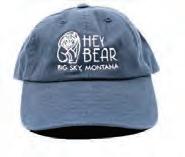



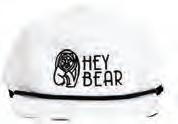

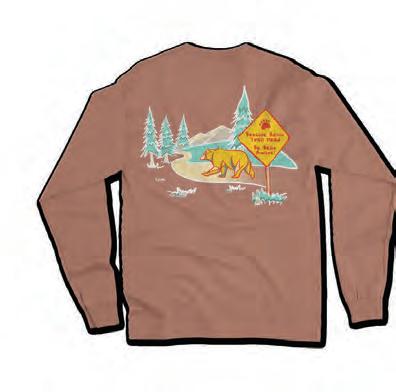
82 1.
11 LONE PEAK DRIVE, UNIT 104, BIG SKY, MT 59716
How to Prepare for Bear Country!
2. 3.

UNWIND & EXHALE
at Spa Montage
Unwind and indulge in rejuvenating wellness rituals after a day of adventure. Experience the tranquility of an elevated mountain sanctuary where the surrounding nature provides an unparalleled backdrop for heightened relaxation.
Open daily, visit us at Montage Big Sky. To book a treatment, call (406) 993-8368.
83
montage.com/bigsky | 995 Settlement Trail | Big Sky, Montana

Bridger Foothills Fire erupted after a particularly dry summer in September of 2020 within eyesight of the city of Bozeman. A stark reminder of the threat of wildfire, despite the growing population in the valley below, the fire forced evacuation in a 167 square mile area, burned over 7,000 acres in a six hour period and destroyed 28 homes. Adobe Stock Photo
84
The

Building in a Dichotomy
The challenges of living in the Wildland-Urban Interface
By Taylor Owens
The Wildland-Urban Interface is a crucial boundary where human development converges with nature. Big Sky, Montana sits in this zone with its structures prone to wildfire and extreme weather conditions.
“We don't live in an environment that most of the United States lives in,” said David Dexter, chief executive officer at Cornerstone Management Services. “We are very unique. We have a lot of snow. We now have a lot of fire danger. It’s that weird dichotomy. And a lot of people in the United States don't even have one of those.”
In Big Sky’s early years, construction of homes and businesses did not include planning for building in the WildlandUrban Interface (WUI), which was nothing more than an afterthought. Today, the Big Sky community and local businesses have taken a more active role in preparedness through compliant building practices, forward-thinking planning and investment in research into WUI-compliant building materials to improve resilience against the everlooming threat of wildfire.
“I think that we as builders, humanity, oftentimes in 20 years look back and think ‘Crap, I can't believe we did that,’” Dexter
said. “Trying to get that view into the future, understanding what implications 20 years down the road will be, so we can plan for it now, so it's not something that catches us off guard.”
Cornerstone Management Services (CMS) in Big Sky has put in time and research, as well as collaboration with students in Montana State University’s engineering department, to develop the best WUI-compliant building practices, materials and efficiencies to mitigate wildfire risk.
Wildfires in the West are getting larger and more dangerous, and more people are moving to the WUI, lowering the bar of vulnerability.
“We've all seen the differences between winters, from last winter to this winter, and even the one previous where we had the Yellowstone [River] flood,” said Teran Foster, research and development manager at CMS. “So, there's different precipitation that is happening every year, so it's not consistent. That also creates this drastic potential for wildfires. Again, we've all seen it. We've all breathed that smoke. But Wildland-Urban Interface is a great starting point and standard.”
Building in the WUI is a matter of dealing with the potential for wildfire,
85
The Robertson Draw Fire broke out in Red Lodge, Montana, in June 2021 and burned 29,885 acres, burning through mid-September. Photo courtesy of the U.S. Forest Service Far right: Big Sky, Montana is a community of about 2,800 people. Recent development has pushed many neighborhoods into the Wildland-Urban Interface. Adobe Stock Photo
as well as the potential for significant snowfall. Ice damming on roofs is a constant consideration for homes in the WUI, and cold roof systems have become the best way to combat this. CMS has developed a cold roof system designed and tested for the Big Sky environment that reduces ice damming; prevents condensation build-up; reduces heating and cooling costs; and provides prolonged life expectancy of roofing materials.
And on the flip-side is fire. A home burning down is the process of structural ignition. Focusing first on the structure of a home, the building materials need to be assessed. Historically, wood products unsurprisingly burn under enough heat or exposure from wildfire. Wildfireresistant building materials can include materials like metal and asphalt.
“We know a great deal about how to build smarter, durable, more sustainable homes in high-risk areas,” said Kimiko Barrett Ph.D., wildfire research and
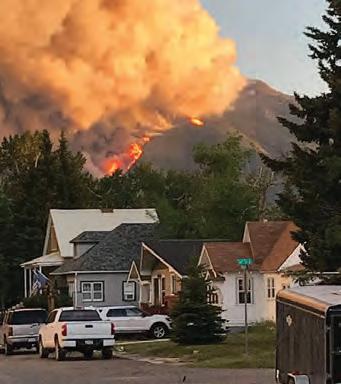
policy lead at Headwaters Economics. “We know from decades of research, laboratory experiments, and postfire analyses that building materials, structural design and neighborhood layout are critical determinants of a home's survival from a wildfire. So it is really a scale issue because it has to occur at all scales.”
The near home combustible zone is absolutely critical. This zone is zero to 5 feet from the home itself. This is generally the region where people would keep their flower beds, for instance. When one home starts to burn, it gives off radiant heat and, as the house itself becomes a source of fuel, threatens surrounding structures.
The key factors when considering designing a home in the WUI are ignition points, layout of the land or neighborhood, building materials, landscaping and vegetation.
“Vegetation management I don't think has been done quite effectively

here [in Big Sky], where there's trees and dry brush or even just firewood that's stacked up against the housing,” Foster said. “Our largest hope is to be able to have that fully WUI-compliant exterior to protect these homes and then also have the vegetation management done properly.”
Bark mulch is incredibly popular in Montana and in many parts of the country, but is highly flammable because it covers a wide surface area and is often chemically treated. Replacing materials like bark mulch with gravel can aid in wildfire resistance.
“Unlike the common media narrative of a wall of flames that comes down a mountainside and burns a community to the ground, what in fact is the primary culprit of home loss are embers,” Barrett said. “Embers can fly. What we're talking about are the little fireballs that launch themselves out of a campfire, for instance. And yet this is obviously at much larger scale with a wildfire.
86
Right:
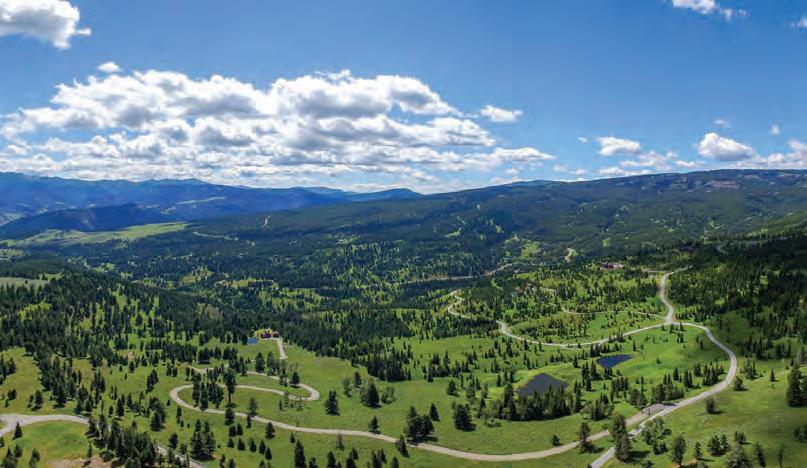
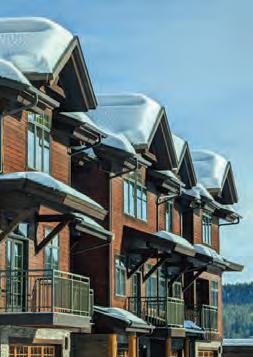
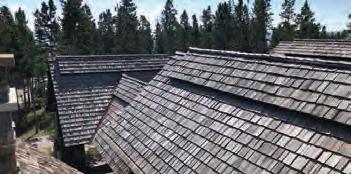
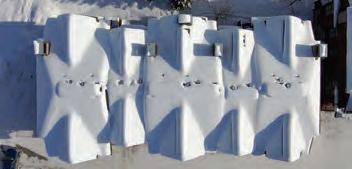
87
87
Cold roof systems are one of many engineering developments Cornerstone Management Services has been applying for home adaptation in the WUl. Cedar shake replacement on roofs is also critical in the WUl, as they are a risk during wildfire season. Photos courtesy of Cornerstone Management Services
But they are these balls of flames, also known as firebrands. They launch themselves anywhere from 1 to 4 miles ahead of a wildfire front.”
If embers land on any flammable surface area, they can grow in size and intensity to become a spot fire. The spot fire will then propagate wildfire spread from a home into a community. When considering a home’s vulnerability to wildfire, one must consider embers and any exposed surface area that can ignite.
“It’s not just a roof. It's also the valleys of the roof where embers can accumulate,” Barrett said. “If there's pine needles in that roof valley, they'll ignite the pine needles or what's in your gutters. If you have vegetation and debris within your gutters, you must think about working your way down from that decking surface areas, often made of wood. Very often on the surface of the deck is a lot of flammable furniture or
materials, like firewood, like furniture itself, propane tanks. Things like this, all of which are vulnerable ignition points. If you have a house that has wood siding, that is another exposure and vulnerability, especially if you have a lot of vegetation or plants built up against the home as well.”
CMS in Big Sky provides construction and remodel services to clients building in the WUI, as well as offering guidance regarding vegetation management; roofing; venting; exterior coverings; decking; exterior windows and doors; and more. In addition to being a supplier and operating business however, wildfire safety is a personal matter, as many of CMS’s employees live and raise their families in Big Sky.
“Our overall mission is to protect and progress our communities,” Dexter said. “We’re trying to do that by really redefining that exterior building
“Our overall mission is to protect and progress our communities. We’re trying to do that by really redefining that exterior building envelope, but really, instead of looking at just one piece of the puzzle, looking at that holistic picture at the same time.”
–DavidDexter,chiefexecutiveofficer, CornerstoneManagementServices
envelope, but really, instead of looking at just one piece of the puzzle, looking at that holistic picture at the same time.”
One important design consideration on a home, Barrett explains, are the eaves. “By enclosing your eaves with a non-combustible soffit, for example, you are preventing that heat trapping from occurring where you would have embers penetrate through the attic vents or in through the soffit,” Barrett said. “It's little things, as well, when you talk about the exterior of a home that's vulnerable. You're talking about the roof, the eaves, the exterior wall, the deck, and the non-combustible zone. And then windows and doors are also vulnerable points.”
Many homes in Montana are being built in wildfire risk areas, with an increase in building in these areas during the pandemic. The risk of wildfire is going up significantly each year and the

88
The 2022 Moose Fire seen from Salmon, Idaho. Wildland firefighters are no stranger to managing and fighting fires in the Salmon-Challis National Forest; the area has a long history with fire shaping the landscape. Outlaw Partners photo
Own Your Zone – Exterior Home Protection
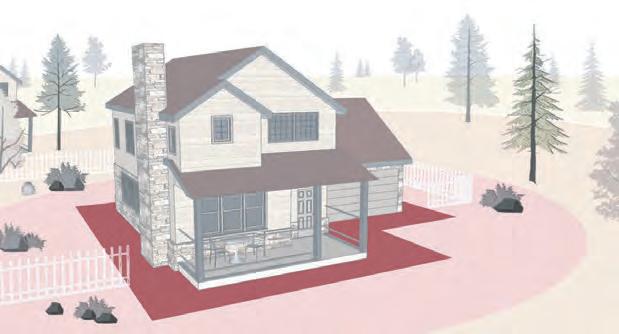
resources, including this home protection
responsibility and accountability is on the individual homeowner to consider that risk.
“Mitigation has to occur at scale,” Barrett said. “What we know is that one homeowner can fully mitigate his property and his structure, but if his neighbor does nothing, then his house is still at risk because of how wildfire ignition occurs and radiant heat threat.”
“This is going to become part of the challenge that homeowners face in Montana, particularly not with just increasing risk, but for insurance, which is going to become a very real concern for many of us in the not too distant future,” Barrett said. “It already is for some.”
Montana does have a WildlandUrban Interface code that was adopted from a national model and explicitly
cpaw.headwaterseconomics.org
the
assessment,
addresses wildfire. Theoretically, this model code isn’t intended to address wildfire construction in high-risk areas; when Montana adopted this code, legislature stripped it of anything regulatory in nature. State government in Montana tends to be anti-regulatory and does not want pushback from the construction industry. By watering down this code, the state does not allow local jurisdictions, towns or counties to adopt anything more stringent than what the state has already adopted.
“What the state has done has really prohibited and limited the abilities for local jurisdictions to regulate through a WUI code or a building code,” Barrett said. “But it is needed for reducing risk at scale. It is the only measure that works because of the compliance mechanism
behind it.”
Currently, Montana is hamstrung at the state level, and until that is overturned, local jurisdictions do not have a lot of authority to implement strong wildfire resistance measures.
“I just want to make sure that readers know that building to wildfire resistance standards does not mean you need to have affluence, wealth or access to highly specialized materials,” Barrett said. “That's not true. These are widely available materials, and they can be quite cost affordable.”
Taylor Owens is a writer who spends her days running in the sun, playing in the snow, or on the hunt for the best breakfast across the West. She is based in Bozeman and is the content marketing lead at Outlaw Partners.
89
DIY - Do it yourself (sweat and labor) $ - Inexpensive $$ - Moderately expensive (may need a contractor) $$$ - Investment (professional install) L K I J A H F G B E D C 1ST PRIORITY A Roof Install a Class A-rated roof such as asphalt fiberglass shingles or metal panels. $$$ B Roof and yard debris Clear leaves, pine needles, and other flammable material from the roof, gutters, and areas around fences. DIY C Buffer zone Clear vegetation and other combustible materials to create a 5-foot buffer zone around the home. $$ D Vents Install flame- and ember-resistant vents. $ E Deck Remove vegetation, firewood, and other combustible materials from on top and under decks. DIY 2ND PRIORITY F Fencing Replace wood or plastic fences attached to the home with noncombustible metal fencing. $$ G Enclose decks Enclose low decks and areas under bay windows with mesh screening or ventilated noncombustible material. $ H Trees Remove branches that overhang the roof and gutters. $ 3RD PRIORITY ISiding Replace at least the lower foot of wood or vinyl siding with fiber cement, stucco, brick, or stone siding. $$ J Eaves Enclose open eaves with noncombustible soffit material. $$ K Windows Use dual-paned, tempered glass in windows and doors. $$$ L Deck surface Replace wooden decking with firerated composite material, metal, or lightweight concrete. $$$
As a way to prepare residents from wildfire threats,
Big Sky Fire Department and other agencies provide a multitude of
risk
found in the Big Sky Wildfire Protection Guide. Graphic courtesy of Headwaters Economics





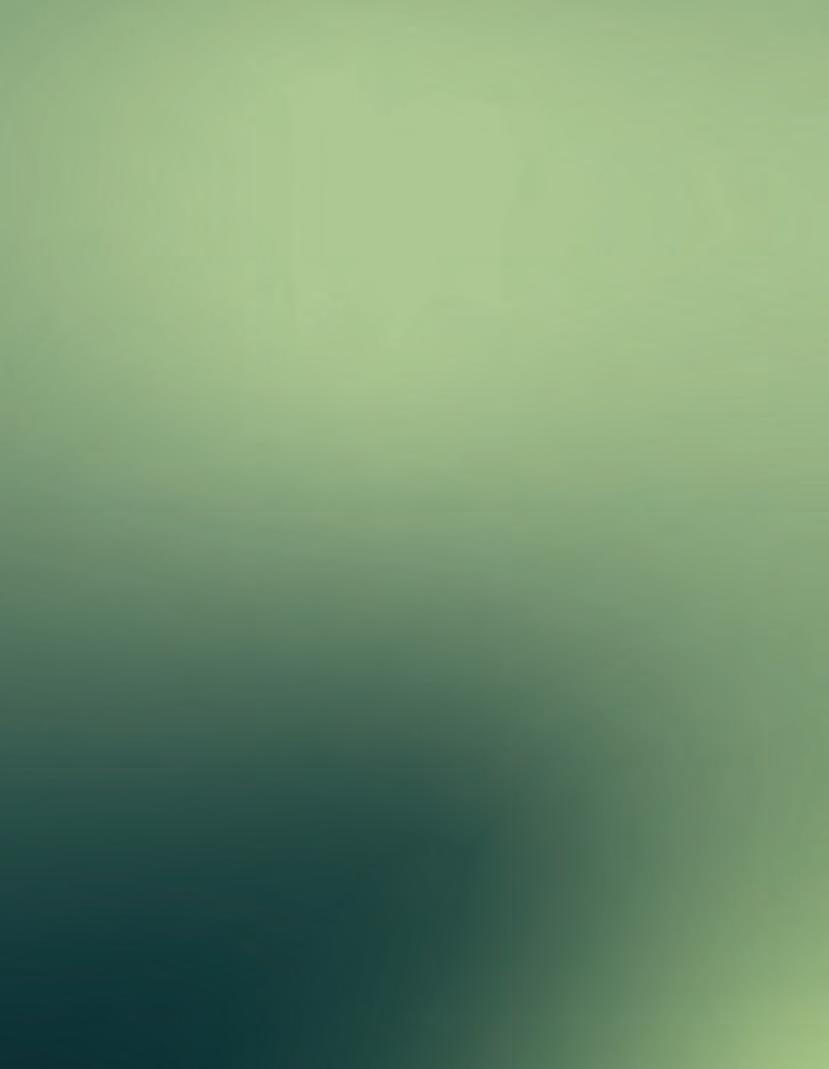
YOUR ALL-ACCESS PASS TO MONTANA’ S BEST & LARGEST SELECTION LONEPEAKCANNABISCOMPANY.COM DOWNLOAD THE LPCLUB APP! Exclusive Deals Never Miss a Notification Double Points Days Spin to win v Download here
SUSTAINING the Spirit of CONSERVATION
 By Taylor Owens
By Taylor Owens
Conservation work in the Greater Yellowstone Ecosystem has a storied past dating back to the creation of Yellowstone National Park in 1872, and closely followed by the ecological disaster known as the Dust Bowl in the 1930s which brought about huge dust storms that blotted out the sun, swallowed the countryside and destroyed valuable farmland. That, coupled with the expansion of the West, fueled concerns over protecting the very reason the West is so special—its wildlands.
In the mid 1930s, the Soil Conservation Services was established after Congress declared soil and water conservation a national policy and priority. Because about three-fourths of the land in the U.S. is privately owned, Congress realized that only active support from landowners would guarantee the success of conservation on private land. Thus, the idea for soil and water conservation districts was born. President Roosevelt wrote letters to the governors of each state encouraging them to implement and support conservation districts. The Gallatin Valley Soil and Water Conservation District was formed on
June 8, 1949, continuing the long history of conservation— and strong partnerships that makes this conservation work possible—in this region of Montana.
Today, the Greater Yellowstone Ecosystem, including Gallatin Valley, is home to hundreds of nonprofits committed to the protection of open land and wild spaces. The spirit of conservation is ever-present, and Wildlands Festival in Big Sky, Montana, amplifies nonprofits’ missions and work through partnership as beneficiaries and a shared love for live music. Wildlands Festival charities benefit from more than six different fundraising activities each year, all of which also raise awareness of their conservation missions through ticket and sponsor sales, volunteer donations, merchandise sales, silent auction items and the Wildlands Festival charity dinner. Last year’s total funds raised surpassed $500,000.
This year’s Wildlands Festival beneficiaries are Wild Montana, Gallatin Valley Land Trust and Greater Yellowstone Coalition.
91
A trail volunteer at Cliff Creek digs in. Photo courtesy of Chris Sawicki via Wild Montana
Wild Montana
Since 1958, Wild Montana has been a beacon of hope for open spaces, rallying people around a shared love of wild public lands and waters. Their work, which includes building trust with community members, fostering collaboration and forging agreements, has not only protected wild lands and enhanced public land access but also created economic opportunities for gateway communities across the Greater Yellowstone Ecosystem. It’s a powerful testament to the positive change that occurs when people work together and the direct impact that work has on our local communities.
›› Spotlight projects
Wild Montana’s membership was instrumental in creating and passing the 1964 Wilderness Act. Since then, they have been involved in efforts to designate all 16 of Montana’s Wilderness areas. As the social and political landscapes of both Montana and the nation continue to grow and shift over time, Wild Montana’s work has evolved to address new threats and find new opportunities to conserve the state’s wild public lands and waters. They have expanded their efforts to include state policy work to ensure Montana’s conservation programs are adequately funded, advance policy that benefits state public lands and sustain and create new opportunities for access to public lands.
As a Lower Yellowstone River Coalition member, Wild Montana has successfully garnered support from community leaders, businesses and elected officials to create 328 acres of new public land along the lower Yellowstone River. Near Forsyth, the Wildcat Wildlife Management Area will open 2.2 miles of riverfront for hiking, hunting, fishing, boating and wildlife watching.
Additionally, Wild Montana is the driving force behind the biannual Rally for Public Lands in Helena. Held when the state legislature is in session, the rallies have drawn thousands of Montanans from across the state. Conceived initially to combat the transfer and sale of public lands, the rallies have grown into a show of support for policy that prioritizes protecting public lands, wildlife and a clean and healthy environment.
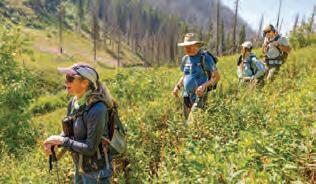

Gallatin Valley Land Trust
For more than 30 years, Gallatin Valley Land Trust has been a nonprofit, grassroots conservation organization standing on the shoulders of its volunteers, partners and supporters who love southwest Montana.
Since 1990, GVLT has been working to connect people, communities and open lands through conservation in Gallatin, Park and Madison counties. They have conserved working farms and ranches, saved critical wildlife habitat and protected healthy rivers. They have also built nearly 100 miles of trails with their partners in the Gallatin Valley, working hard to preserve what makes Montana so special.
GVLT has partnered with landowners to forever conserve more than 65,000 acres of what they consider the most highly productive, scenic and wildlife-rich lands in southwest Montana. These lands, teeming with diverse flora and fauna, are a testament to GVLT’s commitment to preserving our region’s natural beauty and character.
›› Spotlight projects
One of GVLT’s first projects was working with the City of Bozeman to purchase land from the Burke family to protect open space and develop trails on an iconic plateau within city limits known as Peets Hill. Much like Bozeman’s Central Park, Peets Hill is where families take their children to sled, watch sunsets and walk their dogs; and many others take visiting family or friends to overlook the city and the surrounding vistas. Over the last 30 years, GVLT has continued to enhance and expand this park. Most recently, with the generous support of nearly 700 donors, they purchased what they call Peets’ Final Piece, a 12-acre extension along the southern end of the park. Their efforts saved this piece from development and today the entire parcel is under the ownership of the City of Bozeman.
92
A landscape shot shows Peets Final Piece connected to the south end of Peets Hill. Photo by Louise Johns
Hikers enjoy Grizzly Basin. Photo courtesy of Chris Sawicki via Wild Montana
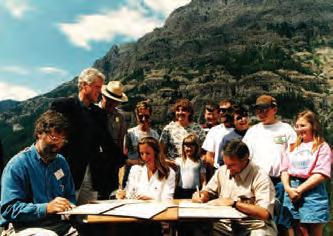
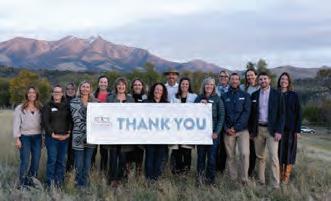
Greater Yellowstone Coalition
Since 1983, Greater Yellowstone Coalition has not just championed the Greater Yellowstone Ecosystem but also carved out a unique role as its voice. GYC, in collaboration with people and communities, is dedicated to protecting the 22-million-acre Greater Yellowstone Ecosystem through water, land and wildlife conservation campaigns and projects. With headquarters in Bozeman and offices in Idaho, Wyoming, and the Wind River Indian Reservation, the company’s team of passionate conservationists, seasoned policy analysts and esteemed biologists work on issues like grizzly bear and bison management, wildlife highway crossings, climate resilience, protecting public lands and supporting Indigenous-led conservation priorities.
››
Spotlight projects
“Stopping the proposed New World Gold Mine near Cooke City in the mid-1990s helped put GYC on the map and propel the organization toward many other important conservation wins,” said Scott Christensen, executive director of GYC. “Some of those include playing a lead role in supporting the reintroduction of gray wolves and the remarkable comeback of grizzlies, opening up habitat for bison west and north of Yellowstone, working with Native American tribes and the park to restore bison to tribal lands across North America, passing bills in Congress to protect the Snake River, Clark’s Fork of the Yellowstone, and the East Rosebud Creek, and just last year buying out a proposed gold mine that was slated to be developed right on the boundary of Yellowstone near Gardiner.”
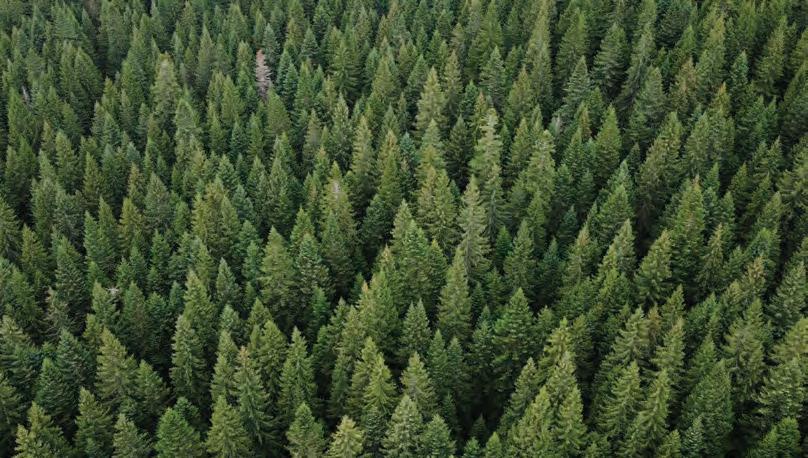
History of Conservation in the West

March 1, 1872
Yellowstone National Park was established.
December 21, 1887
The Boone and Crockett Club was formed by Theodore Roosevelt and George Bird Grinnell.

May 11, 1910
Glacier National Park was established as America’s 10th national park.
March 28, 1958
Wild Montana was established by Tim Lynch in Helena, Montana.
September 3, 1964
President Lyndon B. Johnson signed the Wilderness Act, designating 1.5 million acres of wilderness in Montana including the Anaconda Pintler, Bob Marshall, Cabinet Mountains, Gates of the Mountains, and SelwayBitterroot, and the Land and Water Conservation Bill.
Top: Mike Clark, GYC, (left) signs documents to halt the new World Mine with support from Bill Clinton. Above: GYC staff at an event celebrating the stopping of the Yellowstone Boundary Gold Mine. Photo courtesy Greater Yellowstone Coalition/Emmy Reed
Prior Beneficiaries
Wildlands Festival has a proud history connecting with local conservation groups. Let’s revisit some projects that have been made possible from generous donors and support over the years.
Big Sky Community Organization
“The Big Sky Community Organization (BSCO) is very appreciative and honored to be a beneficiary of the Wildlands Festival,” said Whitney Montgomery, chief executive officer of BSCO. “BSCO is committed to a healthy, connected and thriving community, and the longstanding partnership with Outlaw Partners plays an important role in meeting this vision in serving Big Sky. Combining great music with protecting our natural environment and promoting outdoor recreation is a fabulous way to bring passions together for the benefit of all.”
• In 2018, BSCO was able to acquire the space for Len Hill Park and preserve it as a hub for community events and arts.
• In 2020, they opened the BASE community center, raising more than $20 million to complete the project, from purchasing 3.3 acres of parkland, building and improving the ice rink, and creating the 27,000 square foot community center. The community center features a climbing and bouldering wall, a full gymnasium, a fully equipped fitness center, arts and culture education wing, meeting and classroom space, children’s play area and open gathering spaces.
• Pla nning for multi-use fields at the Big Sky Community Park for school, clubs and adult recreation teams including the local baseball team

1973
American Rivers was established at a meeting in Denver, Colorado.
1977
Sen. Lee Metcalf leads the effort to pass the Montana Wilderness Study Area Act, incorporating 1 million acres into nine wilderness study areas.
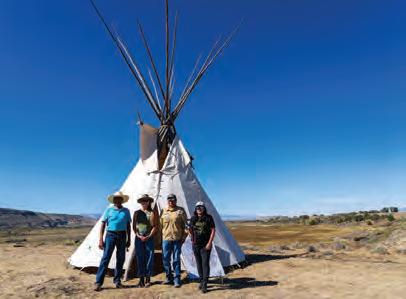
(L-R) GYC’s Senior Wind River Conservation Associate Wes Martel, Haub School of Environment and Natural Resources Graduate Assistant Janna Black, and GYC’s Wind River Conservation Organizers Colleen Friday and Signa McAdams at the 2023 Indigenous Youth Climate and Culture Camp on the Wind River Indian Reservation. Photo courtesy GYC/London Bernier
• As a part of the Big Sky Trails Master Plan, BSCO de signed the pedestrian tunnel that is being constructed under the key intersection of Lone Mountain Trail and Little Coyote Road.
• This year, they unveiled ALL OUT for Parks & Trails, a three-year plan to expand and renovate parks and trails and support Big Sky’s recreational and athletic needs. The funds from the 2022 Wildlands Festival were used to partially fund a new building that was erected in the Big Sky Community Park. The first floor of the building is a maintenance area used to store and repair equipment. The second floor is employee housing for up to six staff members.

1978
Congress designated the North, Middle, and South forks of the Flathead River and three sections of the Upper Missouri River as Wild and Scenic Rivers.
1983
Greater Yellowstone Coalition was established, focusing on land around Yellowstone National Park and Grand Teton National Park, including Montana, Wyoming and Idaho.

1990
Gallatin Valley Land Trust is established in Bozeman, Montana.
1993
Wild Montana sues the federal government after it grants Solenex LLC a permit to drill on an illegally issued lease in the Badger-Two Medicine, a wild area outside Glacier National Park sacred to the Niitsitapi (Blackfeet).
94
Gallatin Valley Land Trust
“We were honored to be selected as an early beneficiary of the Wildlands Festival,” said Chet Work, executive director at Gallatin Valley Land Trust. “This highly-anticipated annual event has demonstrated an unwavering commitment to conservation from its inception, and we at Gallatin Valley Land Trust (GVLT) are grateful for the financial support that has enabled us to accelerate the pace of our work to build trails and protect critical wildlife habitat, big sky views, and working farms and ranches.”
• Conservation of some of the most highly productive, scenic, and wildlife-rich lands in southwest Montana
• Expansion and enhancement of the Main Street to the Mountains trail system in Bozeman, totaling nearly 100 miles
Gallatin River Task Force
• Kristin Gardner, chief executive and science officer at GRTF, joined several partner organizations this past spring in Washington, D.C. to advocate for the Montana Headwaters Legacy Act.The Big Sky Water Conservation Program saved 39,119.20 gallons of water.
• Continuous streamflow measuring on the Gallatin River and four tributaries.
• Adv ancing 13 restoration projects throughout the Gallatin watershed.
• Col lecting water quality data at 11 sites in July, August, September and October, to help monitor the health of the Gallatin River.

American Rivers
• C ontinued support of dam removal projects across the U.S.
• Removal of four lower Snake River dams in southeast Washington which will restore salmon and steelhead to 5,500 miles of rivers, mainly in central Idaho
• Promoted the Montana Headwaters Legacy Act and similar legislation in the West
• Took two trips to DC to lobby on behalf of the Montana Headwaters Legacy Act
• Conducted paid advertising campaigns in Montana regarding Montana Headwaters Legacy Act
Learn more about Wildlands beneficiaries at wildlandsfestival.com/charity
Taylor Owens is a writer who spends her days running in the sun, playing in the snow, or on the hunt for the best breakfast across the West. She is based in Bozeman and is the content marketing lead at Outlaw Partners.


1998
Big Sky Community Organization is formed in Big Sky, Montana.

2000
The Blue Water Task Force was established at MSU to monitor Upper Gallatin water quality.
2012

The Blue Water Task Force rebrands as the Gallatin River Task Force. Aug. 26, 2016 The National Park Service celebrates its 100th birthday in Gardiner, Montana.
2023
Sen. Jon Tester reintroduces the Montana Headwaters Legacy Act, a law that would protect 384 miles of Montana rivers, including the Gallatin, Madison and Smith rivers, as well as waterways in the CusterGallatin National Forest.
95
A Paradise Valley conservation easement is a fan favorite among local elk herds. Photo by Blair Speed
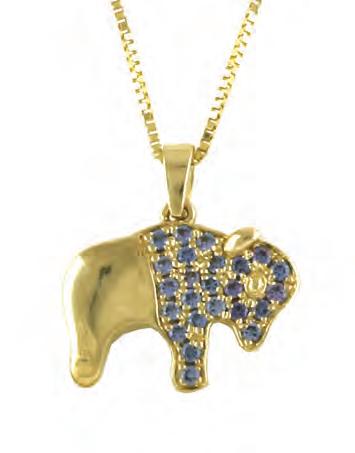


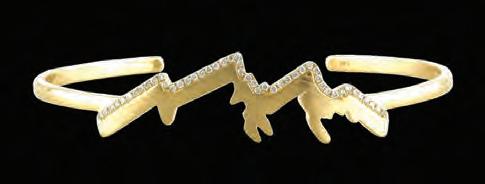


Montana Moments - Captured 35 West Main Street ◆ (406) 586-9547 ◆ www.MontanaYogos.com Montana Sapphire Jewelry Custom Buffalo Pendant Mountain Ridgeline Bracelet



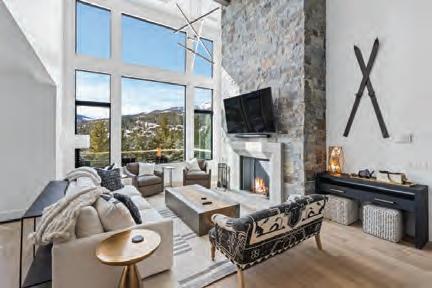

97 888-740-7410 // ascendvacationrentals.com // Big Sky, MT EXPERIENCED LOCAL LUXURY

The Gila

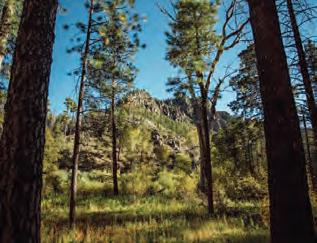
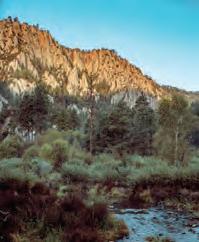
Top: A view of the varied topography of the Gila reveals mountains and canyons. The rock formations in the Gila formed as a result of volcanic activity 25 to 50 million years ago from the Mogollon-Datil volcanic field. Above left: A crevice spiny lizard, part of the diverse ecosystem of the Gila Wilderness which includes bobcats, cougars, mule deer and pronghorn, and several endangered species like the Mexican spotted owl and Mexican gray wolf. Above middle: A stand of ponderosa pines illuminates one of the Gila’s greatest treasures: one of the world’s largest and healthiest ponderosa pine forests. Above right: The West Fork of the Gila River gleams in sunset light. The Gila River, which starts in the Black Range and spills into the Colorado River, is the only free-flowing river in New Mexico and provides habitat for the endangered Gila trout as well as hundreds of bird species. All photos this page by Bradley Lanphear/No Barriers



As the nation’s first Wilderness turns 100, what does it mean to celebrate a place?
By LeeAnna T. Torres
Ifirst experienced the Gila Wilderness on horseback. It was August 2004 and everything was in bloom and brilliant green as we wound our way through the two-lane highway in the Black Range, then down toward Mogollon. The mountains were thick with monsoon storms and the yerba, called fireweed by the woman from Santa Fe, was in orange bloom. I’d finally “earned” my way into being “invited” on a Gila trip. This is part of a much longer story, so let’s just say for the sake of this piece, I was a girl among men, traveling deep into the wilderness to conduct fish surveys and habitat restoration efforts.

about myself than any church or IQ test or therapy session.
The Gila National Forest, containing the Gila Wilderness (pronounced Hee-la), located in southwestern New Mexico, is a vast 3.3 million acres of both desert and ponderosa mountain, a rugged and rich landscape belonging to the American public. First home to the ancient Mogollon (A.D. 200) and Mimbres culture/people (between A.D. 1000 and 1130), it later became the sacred homelands of many Apache bands (including Chiricahua, Warm Springs, and others).

Despite being a native of New Mexico, I’d never set foot among the Gila’s trails or pinion or ponderosa until work took me there. My parents didn’t take my brother and me camping there, nor did my father hunt there. Instead, I was introduced to the Gila outside of my cultural upbringing, through a profession that even today my own Mama still doesn’t quite understand, because quiet Chicana girls don’t work as fishery biologists, don’t work in the mountains with men. But it was who I was, for a time, and the Gila landscape revealed more to me
The Gila Wilderness also happens to be the first formally designated Wilderness in the U.S. This protection, granted by the U.S. Forest Service on June 3, 1924, meant the 755,000 acres of mountainous landscape would forever remain “an area of undeveloped Federal land retaining its primeval character and influence, without permanent improvements or human habitation, which is protected and managed so as to preserve its natural conditions …” as later defined by the Wilderness Act of 1964. Distilled down, it meant this landscape would remain, in essence, wild. Eventually, the
NEW MEXICO ✪ SANTA FE ● ALBUQUERQUE ● LAS CRUCES GILA NATIONAL FOREST GILA WILDERNESS AZ TX CO MEXICO
The author, LeeAnna T. Torres, captures this view deep in the Gila Wilderness circa 2004 while packing in to a site to conduct Gila trout recovery efforts along with U.S. Fish & Wildlife and U.S. Forest Service staff. Photo by LeeAnna T. Torres
original parcel was split and expanded to add the adjacent Aldo Leopold Wilderness. Today, the Gila (557, 873 acres) and Aldo Leopold Wildernesses (202,016 acres) combined have 800 miles of trail.
As New Mexico, as well as the nation, celebrates the Gila’s centennial in 2024, I consider what it means to celebrate the centennial of a place. And what is it about the Gila that still has an ordinary Nuevomexicana like me still daydreaming of its mountains and rivers despite being years removed from the work I once did there? The American Southwest—its landscape, people and complex culture—is my querencia, my native homeland, and it seems honorable to approach this place again from a personal perspective. But still, it is daunting to give voice to a landscape and place so remote, so vast in acreage and pine and pinion. It’s a struggle familiar to one of our country’s most famous conservationists and authors who first wrote the story of capital W Wilderness more than a hundred years ago.

Acres of Gila National Forest designated as Wilderness 760,030 acres
Only free-flowing river in New Mexico Gila River
Number of federally threatened, endangered, or candidate species found in the Gila National Forest 15
Lowest elevation ~4,850 ft (Gila River)
Highest elevation 10,895 ft (Whitewater Baldy Peak)

Around 1912, a young Forest Service employee named Aldo Leopold was transferred to the Gila and spent several years among its landscape, coming to know it intimately. He traversed the Mogollon Mountains, peaks of the Black Range, and the San Francisco Mountains on foot and horseback, converging with Chihuahuan and Sonoran deserts.
According to the National Forest Foundation, when cattle ranchers proposed a road to improve grazing access into the undeveloped Gila’s headwaters, Leopold wrote to the Journal of Forestry expressing the country’s need for wilderness and arguing for “a continuous stretch of country preserved in its natural state.” In addition, he mailed a wilderness proposal to his Washington
D.C. superiors. On June 3, 1924, the Forest Service designated more than three quarters of a million acres of land surrounding the Gila River as Wilderness, the first designation of its kind and a model for future ones like it.
Like Leopold, I too traveled into the Gila on horseback. It was work that introduced Leopold to what today’s maps name the Gila and it was work that first took me there too, into the deep time landscape that is the Gila. While over a decade removed from my work and experience as a fishery biologist there, it remains a landscape I still think about often—places like Turkey Creek, Langstroth, Raw Meat Canyon, Iron Creek, Half Moon Park.
My old field notes reveal this in a trip into the Gila from May 2005: Rode over twenty miles and [made] it to the White Creek Cabin. [Woke] at 6 a.m. and packed and rode out of the Heart Bar at 9:37am…no stopping at all, no lunch nor pee breaks, 4:24pm arrived a White Creek Cabin. 7 hrs of straight riding. We still had to unload and feed too. It is Tuesday.
What I want to tell you about the Gila is this—it was a place that helped me grow up, a place that revealed to me the experience of horseback and mountainous miles between our group and any help from civilization. Terrifyingly pitch-black night skies and the howl of darkness; wind across canyons and through pine; rushing streams over rocks, bending with gravity and gradient only the earth knows. My old yellow-book entries remind me of this, like this one from Sept. 12, 2005.
…Sitting near the high cliff wall in Raw Meat Canyon, a tributary that meets in with Langstroth, and I am thinking of how upon my arrival here, a gathering of about 12 small lavender butterflies scattered into the air and made the morning’s pain all worthwhile. This canyon is too beautiful to have a name as ugly as Raw Meat. Maybe it’s on account of its remoteness that it gets its cruel name? It’s a bitch of a hike to get here from White Creek Cabin, but now that I’m here I realize its power. It has sprinkled a little rain while I’ve been here, and not nearly as much thunder as yesterday. Maybe the rain is saving itself up for later this afternoon or evening. Last night our sky had a moon just shy of half-full. Maybe by tonight, or tomorrow, that is, if the clouds let us see it. As it always has been on the Gila trips, I had strange dreams last night. There’s a concept of “blood memory,” the belief that we carry the wisdom and memories of our ancestors in our blood. While I know my ancestral blood runs deep in the American Southwest, while in the Gila I’d often get the brutal tug of rattling spirits, and all I could do was hold close to the whiskey I’d keep hidden in my pack, it’s brown-caramel vision dreaming me into sweet oblivion when the time
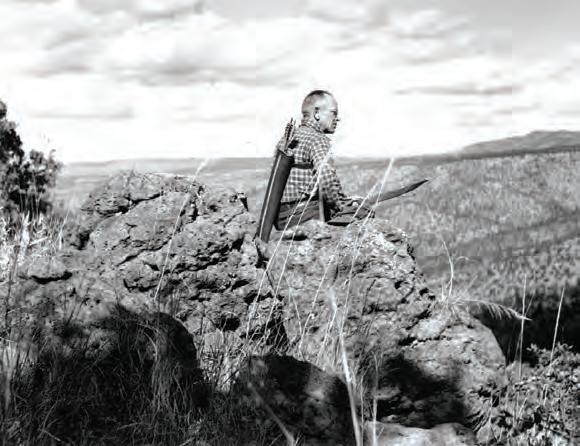
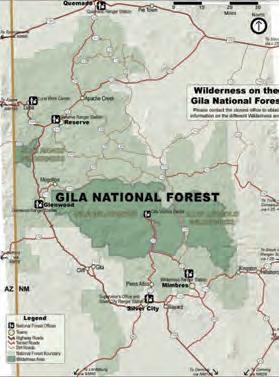
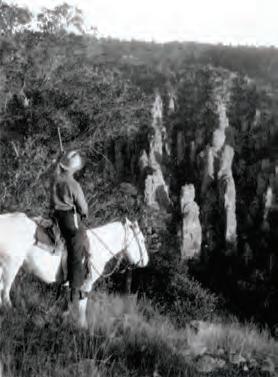
Top: Aldo Leopold bow hunts in Chihuahua, Mexico, in January 1938. By that time, Leopold was living on his farm in Wisconsin and had begun work on the ecological essays that would eventually be published as A Sand County Almanac. Photo courtesy of the Aldo Leopold Foundation and University of Wisconsin-Madison Archives
Above left: A map of the Gila National Forest shows the neighboring Gila and Aldo Leopold wildernesses. Only one road, which leads to the Gila Visitor Center, travels into the Gila Wilderness, leaving the rest “an area where the earth and its community of life are untrammeled by man, where man himself is a visitor who does not remain” (Wilderness Act of 1964). Above right: Aldo Leopold sits atop his horse in 1922, the year he submitted his formal proposal to designate the Gila National Forest as a Wilderness. Leopold served as assistant district forester for more than 20 million acres in the southwest, including the Gila National Forest, from 1919 to 1924. Photo courtesy of the Aldo Leopold Foundation and University of Wisconsin-Madison Archives
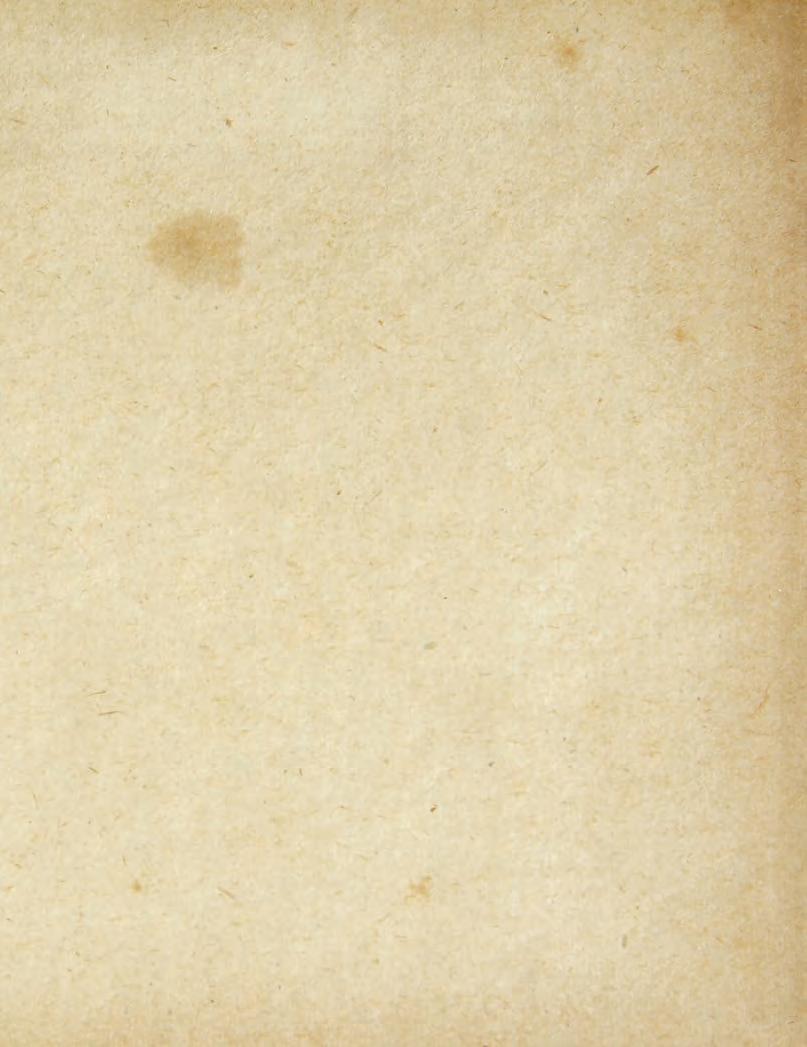

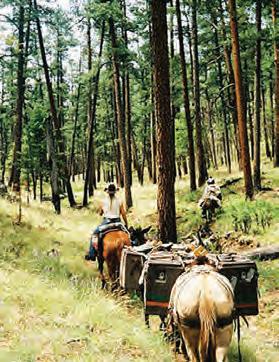
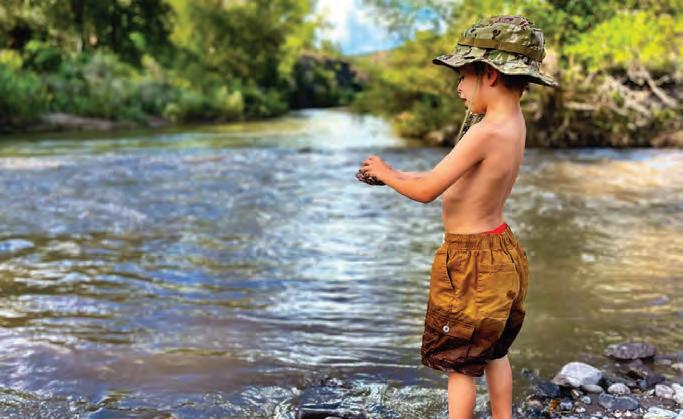
between 2004 and

for either week- or month-long
Top left: The White Creek Cabin is nestled in greenery in the Gila Wilderness. The cabin, owned and operated by the New Mexico Fish & Game Department, served as a basecamp for Torres and colleagues during Gila trout recovery efforts
2006. The crew would stay
stays working in remote streams of the Gila Wilderness. Top right: Torres and her colleague, Stephanie Colman, pack into the Gila Wilderness circa 2005. Photo courtesy of LeeAnna T. Torres Above: Torres’ son, Santiago, plays with mud at the fork of the Middle and West forks of the Gila River. Photo by LeeAnna T. Torres
was right. I often think too of deeper time, the generations and millennia when this landscape had another name, an Apache name, a Mogollon name, a Mimbres name, and before that, no name at all, simply essence.
The complexity of this place, and others like it, clouds the idyllic myth of Wilderness in our West. It’s a place riddled with a violent history of conquest, theft, conflict and death. The American Southwest is my birthplace, and the landscape my ancestors for many, many, generations, and yet I never deny or look away from the brutalities and injustices of the past.
In a February 2024 interview with the Colorado Sun, author Betsy Gaines Quammen says it best:
“…We live among myths. We are a mythmaking species. Number two, western myths inform Americans whether they are aware of it or not. Hollywood has taken all of these western chestnuts, and made us revere ideas of western cowboy culture, rugged individualism, open spaces with endless opportunities, the proving grounds of the frontier, and unimpeded freedom. But the West is far more complicated and fragile than these impressions. It also has a history much older than the cowboy— it is the home of countless generations of Native people with their own traditions, myths, and ongoing resistance to settler colonialism.”
I can’t discount this truth, even when trying to describe the Gila, a place I’ve grown to love, revere, consider sacred.
Today I think of the Gila without name, without map or spoken story. It is a landscape that embodies a certain querencia within me, within us, my fellow New Mexicans, and anyone who has traveled into the Gila and been taken by its spell and its spirits. And it’s true, the Gila does have the five characteristics of “Wilderness” as defined by the Wilderness Act of 1964 as prescribed by research and policy: untrammeled; natural; undeveloped; opportunities for solitude; and primitive. Yet what about other characteristics beyond this legislative definition that make the Gila uniquely special? Why care about it, or advocate for it, or even write about it? Looking back to my field notes, seemingly far removed, but always, always, my true and raw experience, reveals this: … Hands smell like tree sap and purple flowers. The rain has stopped, for now, and you wait for Richard to arrive from the upstream duty post. You listen for the sounds of his arrival—the splashing of water and gravel and rocks, the occasional breaking of branches, his movement downstream. There is stillness again, under a grey sky of occasional thunder, and we work through it, a color green.
Saw a snake on the trail up to Langstroth, light green with black bands…
What do you say to these mountains when darkness creeps in behind the mist/fog that follows the day’s rain, and a perfect half-moon can be seen slightly through the clouds but only after someone you know drinks too much whiskey and reveals fears and frustrations and anguish to the cigarette rolling companion? I am not in the conversation, but I hear it all, while eating green beans sitting close to the fire. What do you say to these mountains after such a revelation? After learning the truth? What do you speak to the mist that is seen and left even at 11 p.m. darkness? Hands are dirty, and tomorrow I might ride out of these mountains.
"I am glad I will not be young in a future without wilderness.”
- Aldo Leopod

In 2022 I took my boy to the Gila. I was no longer a biologist traveling to work there. I was someone else entirely, and yet, never removed from the girl I first was when I set foot into the landscape of the Gila. Taking my boy to the stream of the West Fork of the Gila River, I watched him there, on the edge, putting his hands into running water. What new ways will my generation think about and contribute to the protection of wild places such as the Gila? I watched my boy’s hands in the water, the profile of mountain in the distance behind him. And we were wordless, humans at the water’s edge, in the mountain’s shadow, in the moment as ancient as the landscape we were a part of.
LeeAnna T. Torres is a native daughter of the American Southwest, a Nuevomexicana writer with deep roots in New Mexico. She has worked as an environmental professional throughout the West since 2001. Her creative nonfiction essays have appeared in various print and online publications including Torrey House Press anthology First & Wildest: The Gila Wilderness at 100 (2022). Her ties to the Gila Wilderness include working on Gila trout recovery efforts from 2003-2008.

The ‘Red, White and Blue Team’
Rep. Ryan Zinke cements his platform on the outdoor experience
By Mira Brody
Montana Rep. Ryan Zinke believes there are two groups within the conservation movement—the Muirs and the Pinchots. The former relates to John Muir, who was known as a preservationist advocating for the least human intervention with nature. The latter is a nod to Gifford Pinchot, whose more hands-on approach to conservation often dealt with issues of land management by considering “the greatest good of the greatest number in the longest run.”
During a May 16, 2024, interview with Mountain Outlaw between meetings in Washington D.C., Zinke echoed Pinchot, repeating versions of his signature phrase no fewer than four times. Though the conversation covered many topics, he often came back to these words, as his Congressional campaign for re-election, as well as his personality, are largely rooted in the outdoor experience.
“Everything seems to be hyperpartisan and there are a few issues that in Montana are largely not partisan and those issues are the outdoors,” Zinke said.
After a career as a Navy SEAL, Montana native Zinke served in the Montana Legislature, served a brief term as the U.S. Secretary of the Interior, and is currently finishing out a term in Congress representing Montana’s western district. During what he called “an interesting year,” he buzzes with an energy that carries him through his work on “the front line,” as he says, revealing the SEAL he once was.
Zinke earned national recognition after President Donald Trump appointed him to the Cabinet in 2017, and national headlines followed him through ethics investigations into his work that led to his resignation from his post as Secretary of the Interior half-way through his term. After returning to federal office with an election win in 2020, Republican Zinke is currently seeking to hold his position at the ballot boxes this fall.

104
Zinke recalls days floating Whitefish Lake with his father. Adobe Stock Photo


The following interview has been edited for clarity.
Mountain Outlaw: Rep. Ryan Zinke, thanks for taking the time to speak with Mountain Outlaw. I know you’re busy running a campaign for re-election, and of course with your “day job” in Congress.
You grew up in Bozeman and Whitefish, where you still live, both beautiful Western communities with similar issues of growth, wealth disparity and the responsibility of being a gateway community to two popular national parks. How did these places shape you as both a citizen of the West and as a politician?
Rep. Ryan Zinke: I live in the same family house that my mom grew up in, my kids grew up in and my grandmother. And despite the rumor, I am from Montana.
I lived in a period where Whitefish was primarily a railroad town. It was timber second, and then it had a little ski hill put together by four veterans. One of them, which was 82nd Airborne, made all five jumps in World War II. And he had an influence on me seeking a military career because there was just a handful that made all five jumps. And he was a tough guy and I liked him a lot as a kid.
Then I was a boy scout and a lot of my experience about conservation comes from scouting, quite frankly. Whitefish at the time had great teachers and one of them was Bill Schustrom … who was in the park service during the summer. And it was a huge influence on my views on environmental science. Then I joined the SEALs and then being a SEAL, what you do is you solve some of the nation’s hardest problems and most complex problems. Then [I started] in politics and I got a chance to be Secretary of the Interior.
M.O.: Where were some of your favorite places to recreate growing up?
R.Z.: I would say Meadow Creek Gorge up in the Bob [Marshall Wilderness]. I would [also] say Glacier; just pick a spot. As a kid growing up in Whitefish, I mean, pick any direction. … I spent a lot of time with a rowboat on Whitefish Lake. My dad was a plumber, and at the time a plumber could afford a lake house that was 1,100 square feet with seven kids.
M.O.: You began your political career in the Montana Senate in 2009. After serving as a U.S. Navy SEAL, what prompted this transition?
106
Rep. Ryan Zinke says much of his appeal lands on his ability to listen, and make decisions based on the Montana Constitution.
Photo courtesy of Ryan Zinke
R.Z.: Most Navy SEALs look at what we call the five paragraphs. You look at, what [is] the situation, what’s going on now—and clearly we need better management and we need these larger discussions about how to manage [land] for the next hundred years. Because there’s examples that we all know, even finding public access where we’re relying on OnX to find that sliver to get to the river. We shouldn’t have to; we can be better than that. I could tell you we could be a lot better than that. And there are certain properties that the federal or the state should acquire to make sure we open up and maintain those corridors not only for recreation, but also wildlife. And if you look at the next hundred years, there’s some certainties. Our pressure on public lands is going to increase.
M.O.: You mentioned that as a SEAL you have to solve complex problems. How does that translate to your work in Washington D.C.?
R.Z.: When I came in, there were two huge problems this country faced. One was we were beholden by foreign interests on our energy needs. And then secondly, personally to me it was our parks were falling apart, the very parks we all love, the infrastructure was falling apart. And they said, “you can’t solve it.” I said, “Well watch this.” And so we did. We solved both of them. We became the world’s largest energy producer in two years, and we passed the Great American Outdoors Act, which was the largest investment in the history of this country on infrastructure for our parks and forests.
M.O.: Now serving your third Congressional term and running for your fourth, do you feel driven to serve by the same compass that got you into politics initially, or has that shifted over your career?
R.Z.: I think America’s in trouble, and I think everyone has to do their duty. I think where we’re at in the country is this is what happens when people don’t pay attention because the government doesn’t run on its own. … I’ve never seen anything that’s not fixable, but I think everyone has to do their duty and pay attention. And I think the Montana way of life, to a degree, is threatened. And there are a number of threats on the outdoors experience.
Recreation is changing too. Technology is changing. … And with that, Montana is changing. You have difficult housing, which can be fixed with broader economics, and you also have a recognition that Montana is special. And what’s special about Montana is largely the outdoor experience. In a very partisan world where it seems like it’s blue team versus red team, I think when it comes to public lands, it should be the red, white and blue team.
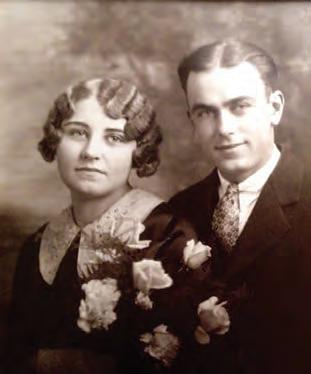

107
Top: Ryan Zinke’s grandparents Esther and Arthur at their wedding in Miles City, Montana, in 1929. Photo courtesy of Ryan Zinke Above: Zinke says he and his wife’s favorite outdoor activity is floating Montana’s many rivers. Photos courtesy of Ryan Zinke
“In a very partisan world where it seems like it's blue team versus red team, I think when it comes to public lands, it should be the red, white and blue team.”
- Rep Ryan Zinke

M.O.: You have a track record of opposing public land transfers from federal to state hands. Many other Republicans don’t. Tell me about your current attitude on this topic. What is your vision for public lands management?
R.Z.: A lot of it is now we more effectively manage, and going back to where I think it’s the American conservation ethic of using the best science, longest term, greatest good and best practices. And land can be used [as] assets in multiple uses. You can have recreation and you can have preservation in the same ballpark. I know this is going to upset some, but you can have a mountain bike trail in Wilderness in my view, because when the Wilderness Act was put together in 1964, mountain bikes were not even thought of. So now you have electric bikes. So how about encouraging access to electric bikes … as long as you stay on the trail. You could do it by making sure you have a
108
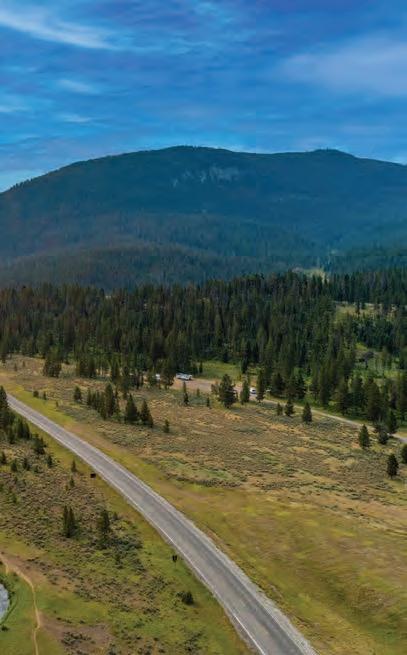
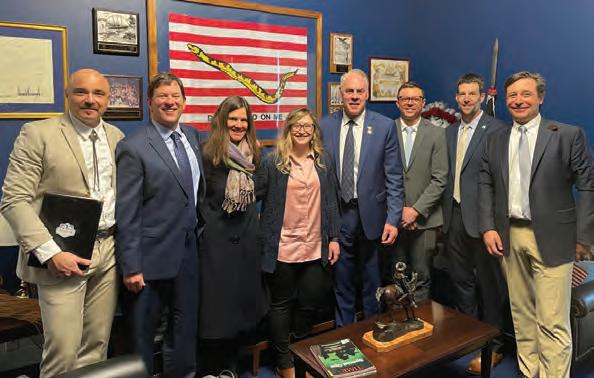
Left: The Gallatin River, running from Yellowstone National Park, through Gallatin Canyon and to the Missouri Headwaters in Three Forks, is one of the many rivers that would earn protection from the Montana Headwaters Legacy Act. Adobe Stock photo
Above: Southwest Montana river advocates join a Headwaters Legacy Committee in Washington D.C. The Montana Headwaters Legacy Act will protect 385 river miles in Montana by designating segments of 20 streams as parts of the National Wild and Scenic River System. Outlaw Partners photo
permit and the permit has a little GPS tracker and you get off the trail, you’re going to know. So there’s all sorts of easy technology to keep people on the trail, but also like electric bikes, you [provide] access to disabled, elderly, all those type of people that you need that should have access to their public lands in a reasonable manner.
M.O.: In an editorial you wrote for CNN, you said your decisions as the Secretary of the Interior were about listening to “the people,” not special interests or voices in Washington D.C. Can you explain that?
R.Z.: That’s why I value the House a lot; it is the people’s House and everyone should get a say, but not the say. Montana’s voice largely is carried in the House, at least in my voice, by a kid that grew up in Montana, loves the outdoors, but also a lot of it is—it’s Montana. Most of the rest of the world view Montana through the lens of
Yellowstone. And I know Kevin Costner personally, he’s a great guy; I think it’s well produced, it’s well written. It is an excellent drama set in Montana, just like Star Wars is a drama set in space. Guys, it’s a drama. But what I face a lot here is that people want to manage Montana as if they know it. And so they want to manage our water temperature, our water flow, riparian bank; they want to manage all water in and out of the riparian bank. They want to manage species, but they want to manage the Yellowstone River—and they’ve never seen it. It is difficult to manage things when you don’t know where they are. And so my push is a lot of times is the local community needs a voice when Montana needs a voice, especially when you have these carpet bombers that come over and try one size fits all. One size doesn’t fit all.
If you go over to the Dakotas … they really don’t like conservation easements. I don’t know why, but there’s an
109

entrenched suspicion about conservation easements … but Montana doesn’t have that same view, and that’s just an example of this one size fits all. It doesn’t fit all.
M.O.: You represent a state with a deep history and pride in coal mining. In many communities, coal is their identity and spans generations. Do you see a place in the future for alternative energy sources in Montana? How do you think we get there?
R.Z.: Well, there’s no doubt that fossil fuels are part of the energy picture that is critical, and cleaner fuel is better, but also you have to look at the supply chain. In the [electric vehicle] world, you have to consider China. And China has northwards of 80 percent of the critical minerals, the lithium, etc., the components that make up the world. So having the supply chain looking at energy itself, there’s two things that drive the economy. Energy is probably the biggest thing. And then inflation by overspending. So if we want to get back to where people can actually afford a home and maybe afford a trip in the car, we better look at energy costs and inflation because it’s killing everybody, and unsustainable.
M.O.: How do you believe conservation can become a bipartisan issue? How do you propose we cross that aisle?
R.Z.: In politics, there’s an opportunity because in Montana largely there’s the love of the outdoors that is not Republican or Democrat. So what I’ve done in a world of hyperpartisanship is it may be a first step to work together is to find something that you both are passionate about. And the first example was public lands. In public hands. I have always been a champion to make sure we don’t sell or transfer public lands, but I am strongly on the management side of it because I just can’t see our forests burning down at the rate they are. The amount of money we’re spending on it and we’re destroying habitat and watersheds.
M.O.: In your current campaign [for Congress] I understand you’re emphasizing a platform of conservation and environmentalism. Perhaps your involvement with the Montana Headwaters Legacy Act could be an illustration of what you mean by this. Can you explain what the act is, and what your role is?
R.Z.: I think it’s so important to make sure you have support of a local community, and that means talking to
110
Hunting at Upper Missouri River Breaks, Montana. Photo by Bob Wick
the counties, making sure you shape your plan where it fits because one size doesn’t fit all. And my work has been largely to make sure that we get the county commissioners on board and we do a process so it stands the test of time. If you’re going to put effort behind something, then as a SEAL, you look at situation, you look at mission and how you win. And so I’ve been helpful I think in steering them and they’ve done a good job and it is very aggressive in their beginning and now they’re doing the hard work of going through and maybe modifying some of the sticking points, but doing the hard work and getting support of the county commissioners and in Montana.
M.O.: Many conservationists say rivers are the lifeblood of a landscape, of an ecosystem, of our Earth. Montana sits at the headwaters of our country’s most life-giving river systems. As a Montanan, do you feel a certain responsibility to protecting that resource?
R.Z.: I think our rivers, the lakes in Montana are special. That’s why Montana has provisions of public access that are different than, let’s say, our neighbor to the south, Wyoming. There is value in protecting the experience of a river.
M.O.: How do you hope places like Montana look 20 or 50 years from now?
R.Z.: Well, I hope that we look at corridors, improve public access, [that] we look at improving the health of our forests and restore some of the habitat that’s been burned to the ground. It’d be nice to spend less money fighting fires and more money on trails and facilities and access and preservation. There’s also better uses of money than fighting fire. So, process improvement. But I’m confident that again, it’s a Montana issue more than it is a red or blue issue on public lands.
M.O.: This issue of Mountain Outlaw is about understanding the West as a concept that is “in the eye of the beholder.” What is the American West to you? How would you define it, and how would you characterize your own sense of place here?
R.Z.: I would say preservation of values, traditional lifestyle of freedom and choice of how you make a living. … Montanans have an independent streak as well … We’re conservative in our values and fiscally conservative, but we just don’t like to be told what to do. And we definitely don’t like to be told what to do by a federal government that doesn’t know where we live. That bothers us. So a lot of the pushing back [while] oftentimes well-intended, we view as interference or interference on our traditional way of life.
Tradition is an important one, and that’s hunting, fishing, the outdoor experience and making sure that we don’t build condos on the rivers and ruin the very reason why we’re here.
Mira Brody is the VP of Media for Outlaw Partners.
“Tradition is an important one, and that’s hunting, fishing, the outdoor experience and making sure that we don’t build condos on the rivers and ruin the very reason why we’re here.”
- Rep Ryan Zinke
111


Mastering The Art of 3 MPH boundaryexpeditions.com Middle Fork Salmon River, Idaho 5 Night + 6 Day Premier Rafting Trips



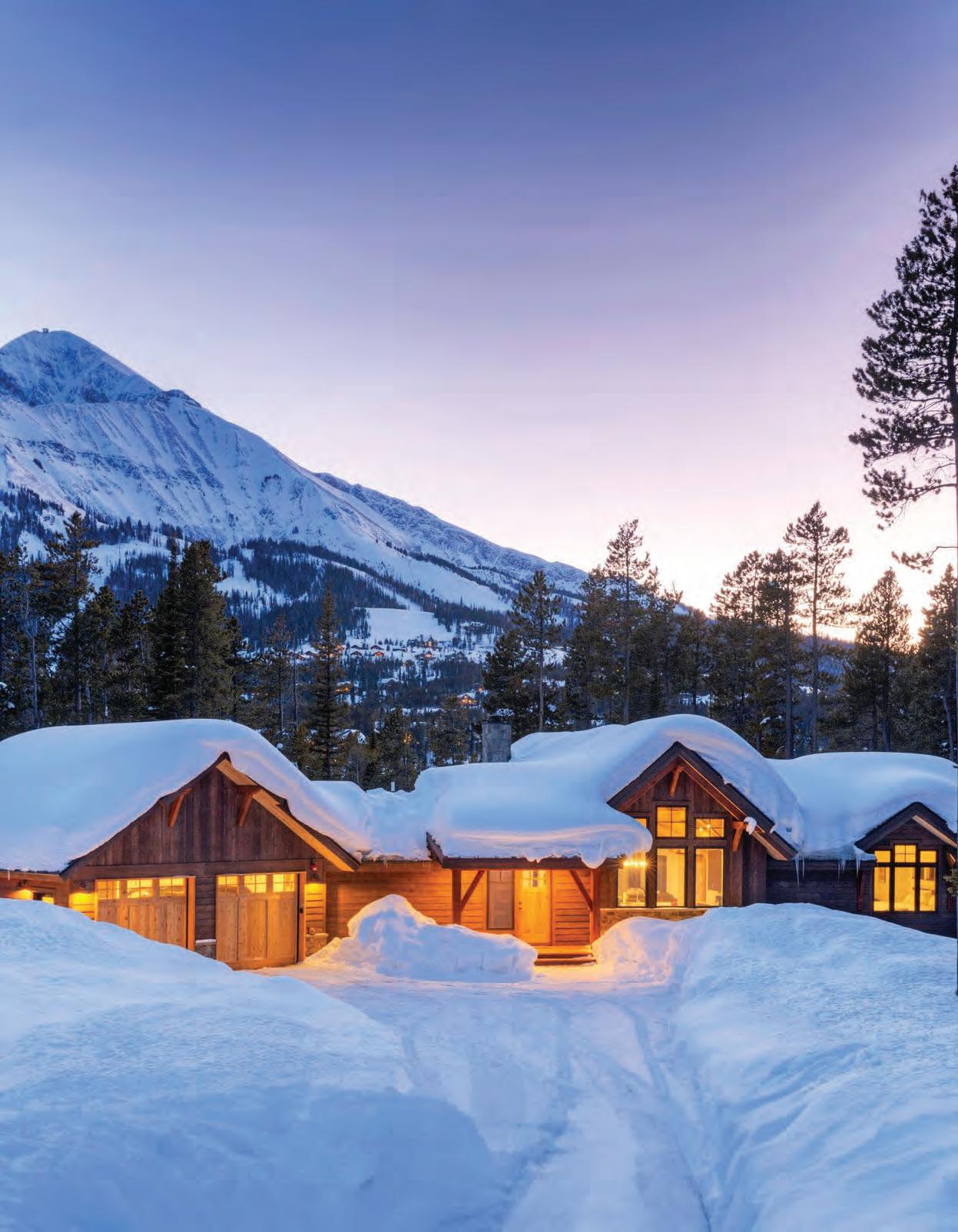
Managing 125+ of Big Sky’s Finest Properties BOOKBIGSKY.COM | 888.915.2787 BIG SKY’S PREMIER LUXURY VACATION RENTAL COMPANY SINCE 2009 Scan here to find out more about our Luxury Property Management Services


Actor Michael Spears (Lakota Sioux), Shauna White Bear (Arikara/Hidatsa), and several Apsáalookee (Crow) tribe members dance in Missouri Headwaters State Park. The confluence of the Missouri, Madison, and Jefferson rivers, the Missouri Headwaters was also once the confluence of indigenous cultures, located on what was a major intertribal eastwest trade route and north-south travel route. For thousands of years, tribes came to hunt, harvest bison at nearby Madison Buffalo Jump, and trade with one another. Photo by
THE
// 116 LIVIN' IN THE ARTS // 124 FUNK'S WORKSHOP // 132
CULTURE ECHOES FROM
NITOWAS
Kyle Niego
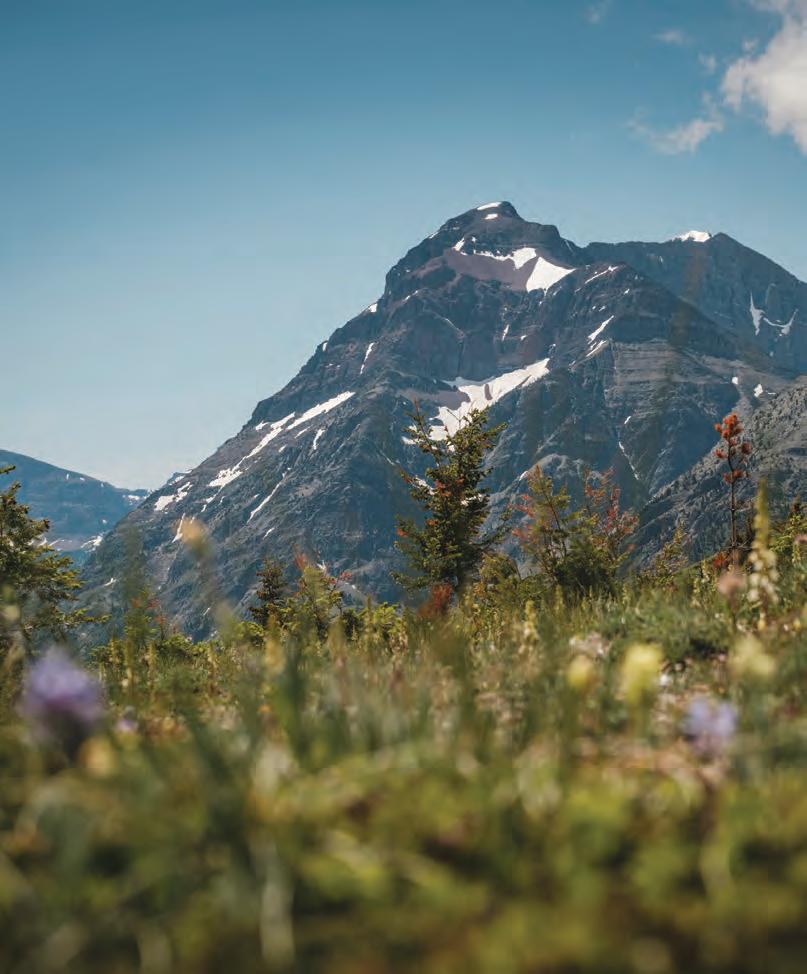
Echoes from the Nitowas Echoes Echoes
116

A Blackfeet storyteller excavates truth through narrative
Words by Chandra Brown | Photos by Dave Gardner
My head rests on a makeshift pillow, a wadded-up down jacket covered with dew, and from the bed of a pickup truck, I watch the teepee shapeshift from a shadowy silhouette to a white, clean-lined, three-dimensional thing. Early July sunlight pours through mottled high clouds; ponderosas stand sentry and aspens shiver, as they do; morning birds flit between the banks of Two Medicine River.
Lailani Upham sends a text to say she’ll be late to meet me at Red Eagle Campground. She still needs to pick up supplies for our gathering and she didn’t sleep well last night. Between juggling work projects, caring for her grandchildren and preparing for next week’s powwow in Browning, she’s tired.
I set about arranging things for the gathering: a borrowed BBQ grill, poppy seed muffins, field notebooks and pens for everyone. We’re expecting 12 or so participants for a cultural workshop here on the Blackfeet Reservation, and the weather so far looks fine.
About an hour behind schedule, as promised, Upham pulls up to the campground in a new-to-her charcoal minivan. We exchange hugs. She’s wearing a new ball cap, embroidered with a sasquatch. We unload plastic grocery bags full of potato chips, buns, condiments and red dogs. Red dogs (like hot dogs, but colored crimson with dyes like Red 40) are “reservation food,” according to Upham, and she’s excited to share them with this group of non-tribal strangers.
We sketch out the day. We’ll start in a circle in the relative shade of the two Red Eagle teepees. Each of Upham’s invited relatives will speak; then we’ll grill up the red dogs; and eventually we’ll
carpool up the Two Medicine River a few miles and walk as a group to Looking Glass Ridge.
The participants trickle in, sunscreen not quite yet absorbed, eyes obscured by floppy sun hats and shades. They are here to listen. One by one the relatives arrive, too: Arlan Edwards, Carrie Lynn Bear Chief, Jesse DesRosier. Edwards’ ethereal drumming and singing opens the circle. These are story guides, here to weave language and song into the fabric of Upham’s unfurling dream.
* * *
The dream first came to Upham in 2004. In it, the sinking sun set the prairie dust ablaze. The land shook under the weight of buffalo running over desiccated grasslands, kicking dirt to sky. Upham tasted the dust and it burned her eyes. It swirled up and around her as she stood fast, trembling with the earth, the salty musk of animals suspended in the air. And then they were gone—save for one. The dust settled, and she held the lone buffalo’s gaze. She received its message, and her heart was honored.
Upham’s dream is backdropped by an ancient story of a Blackfeet woman who, during a time of scarcity, went searching for buffalo. In her wanderings she heard a song rising from the ground. She came across a stone whose song provided her with direction. The stone, its song, told her where to go to find the buffalo.
On a May morning in 2021, Upham met with the Blackfeet Tribal Council in Browning. Her idea was to create a company called Iron Shield Creative, a vehicle by which traditional stories could be celebrated and passed along, in community and out on the land. Upham would recruit “story guides” who would lead cultural workshops—hikes steeped in storytelling, thoughtful wanders to vantages around the reservation. The great Chief Earl Old Person told her, “This is a good thing. Go ahead and
117
As seen from Looking Glass Ridge on the Blackfeet Reservation, Rising Wolf Mountain soars above the southeastern reach of Glacier National Park.
do it. I will be here to help you.” Another tribal leader gifted her an I-nis’-kim, a buffalo stone. Upham beheld the song within it.
Since then, Iron Shield has been a formalized venue for sharing oral stories, carrying forward the truth and, through collaboration between and among knowledge-keepers, fomenting an understanding of who her people are. Upham employs a non-traditional business model wherein trusted mentors from the community—like Darnell and Robert Rides at the Door, Mike Bruised Head and Joseph McKay, among others—are consulted each step of the way. Upham seeks to correct inaccuracies in the historical narrative, to facilitate mentorship through storytelling and build a living vessel for the Blackfoot language and the secrets that live within it.
* * *
The thread of Upham’s story traces back to her earliest days, when her grandfather and the namesake of her business, Joe Iron Shield Upham, would take her and her cousins outside and
tell them Napii stories—creation myths from the Blackfeet homelands. The homelands, the Nitowas, extend from the Miistakis—the mountains in the north— to the Elk, or Yellowstone, River in the south. They are the homelands of the Niitsitapi, or “the real people,” the land where the Iinnii, or the buffalo, live.
Throughout a childhood divided between homes on the Fort Belknap and Blackfeet reservations, between public schools in Harlem and Havre, Montana, Upham did most of her real learning outside. School disoriented her. Even at a young age, there was an understanding deep within her that was obscured by a dubious public school curriculum.
She felt the acute sting of prejudice and dismissal. Textbooks reported a very small, almost negligible “American Indian history.” The lesson for Indigenous kids was that their people simply weren’t important. Roadside historical sites around the state were all Lewis and Clark. The white explorers’ dream, the conquest, dominated the space of retrospect and imagination; the popular historical narrative of the
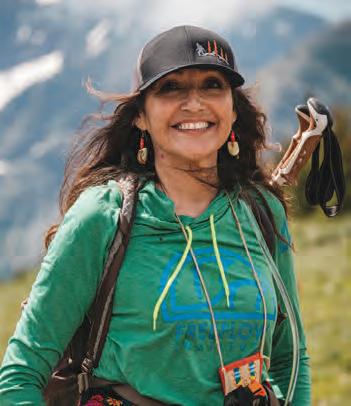
West left very little space for people like Upham.
After high school, Upham left Montana to join the Army. She married young and started a family on the East Coast. In New Jersey, she took her small children to parks or urban trails, found logs to sit atop, and told them Napii stories. The stories felt different told out of place, thousands of miles from the Nitowas, and she found herself forgetting some of the details. So she improvised: better to tell some story—and to tell it outside—than to deprive her children of their narrative roots.
During this time Upham began to wonder about her identity, about where she came from and what she wanted for her children. Through poetry, she was able to find clarity—about being an Indigenous woman living within a colonized value system. She was married to a white man, living between two worlds, a contrast that revealed differences in value systems. This awareness would ultimately confirm Upham’s calling to build bridges between worlds, and more immediately, draw her
“If somebody tells their story, that’s brave. If they tell their experience, that’s their truth.”
–Lailani Upham
118
back to Montana.
At Confederated Salish Kootenai College on the Flathead reservation, Upham took a class from a Blackfeet Vietnam veteran named Woody Kipp. The course was called “Living in Two Worlds.” Kipp recognized Upham’s fire for stories and suggested a career in journalism. She remembered the way her truest heart had always longed to tell stories from and about her people.
Upham was part of a pilot program called “Journalism, On and Off the Rez.” She won a paid internship after attending a six-week boot camp for Native journalists in South Dakota. She later applied to and completed the photojournalism program at the University of Montana, followed by roles as a photographer at The Missoulian, and later the Great Falls Tribune
Heeding a call to dispel non-truths by telling stories from her community, Upham began sitting among elders, listening, absorbing the language, and feeling the spirit within it. She began reporting from the reservation, where the people trusted her. Her questions came from an intent to promote understanding, not from a place of exploitation.
“I was able to sit and listen, take stories into my heart. No recorder, no paper,” she said. “You do that with your heart. You open up everything in order to receive what you’re hearing in the most attentive and loving way—then you’ll remember it.”
In our circle at Red Eagle Campground, Jesse DesRosier sits in a folding camp chair with one long-haired, scuffed-kneed boy on each side of his lap. His own hair is tied into a single braid that traces his backbone. He wears a felt hat and black Wayfarer-style sunglasses; his forearms are covered in tattoos. He is one of Upham’s story guides; Iron Shield Creative’s logo is his artwork.
In her effort to illuminate the truth, Upham has identified individual stars in an asterism of humans who carry specific knowledge—and who hold keys to unlocking accurate history, righting relationships, and finding a path forward. Themes of resilience and respect emerge from the dark history of the Blackfeet.
Sordid, haunting histories of oppression and violence contain, too, a cultural commitment to survival, warriorship and truth-telling. In doing her work to bring accurate Blackfeet history and land-based narrative into the evolving conception of the West, Upham has had to tap the minds of “language people,” like DesRosier.
“One of the horrors Indians endure is having outsiders define us based on one-dimensional studies. It is better we define our tribe, and ourselves."
–Darrell Kipp, Piegan Institute co-founder
DesRosier came up in the Cuts Wood School in Browning, a project of the Piegan Institute, which aims to preserve and restore Native American languages. Here, between kindergarten and eighth grade, Blackfeet kids spend school days immersed in the language of their ancestors. Browning native Darrell Kipp—a Vietnam veteran, Harvardtrained Master of Education, and relative of the Uphams—co-founded the Piegan Institute.
“One of the horrors Indians endure is having outsiders define us based on
one-dimensional studies. It is better we define our tribe, and ourselves,” wrote Kipp, who passed away in 2013.
Tribal language revitalization is one answer to the countless atrocities of settlement, colonialism and assimilation. Between the late 1800s and the 1960s, tens of thousands of Indigenous Americans were forcibly enrolled in boarding schools run by the U.S. government, where students were physically punished for speaking Native languages. The result was a generation conditioned in a collective shame and resistance toward ancestral tongues—and a surgical separation from the cosmologies, knowledge and truths that live within languages born of particular landscapes.
Upham is not a Blackfoot language speaker. She was raised in an Englishspeaking family by parents who were discouraged—and who discouraged their children—from speaking Blackfoot. She remembers front-porch gatherings between her grandmother and fellow sexagenarians; That’s when Upham heard Blackfoot spoken—in private, among members of the generation two ahead of her own. It was her generation, Upham says, that transcended the shame of assimilation and became interested in revitalizing the language.
DesRosier’s sons squirm their way from his lap to the grass, and with a patient, hypnotic cadence, he explains that English, like most colonial languages, is built around nouns: objects and static abstractions. The speaker is the center of a linguistic universe. English does not acknowledge the beingness of the other elements—of animals, mountains, stars or rivers. Blackfoot, in contrast, like most Indigenous languages, is based in verbs—in action and aliveness and vitality. DesRosier says it’s up to us as humans to find balance with the natural world—and the language holds the secrets of how to do that.
Upham maintains that one doesn’t have to speak the language to understand it.
“It’s been with our people since the beginning of time,” she says. “We still carry a knowing through the language which is tied to the whole natural world.”
119
* * *
Upham and I share lunch and conversation one late-August afternoon at the 2022 Elk River Writers Workshop in Montana’s Paradise Valley. She’s replaced the standard conference name tag lanyard with a colorful beaded one, which matches the beaded band on her black felt hat. With the scrutinous eye of a trained photojournalist, Upham expresses gratitude for and criticism of early documentarians like Edward Curtis, William McClintock and James Willard Schultz—non-tribal storytellers who tried to capture the essence of Blackfeet but whose work is inherently flawed by cultural non-affiliation. The aperture of American history has recently widened to include an overdue yet inadequate acknowledgment of Indigenous presence and knowledge systems on the landscape. Others agree with her.
“The heart of the future of Montana has to do with public lands,” said Dr. Shane Doyle, Crow scholar and cultural consultant. “We have the most public land of any state. And all these categories of public land were all at one time Native lands. Even though we’ve had our knees cut out from under us over the last 150 years, Natives are engaging again because they want young people to have a future. It’s a time now where we’re able to reflect back to see how things could’ve been a lot better over the past 150 years—and what we can do to make up for lost time.”
“Lailani is doing work that should’ve been happening 150 years ago,” he says. “But it’s never too late to start.”
In 2022, the 150th anniversary of Yellowstone National Park and the year the National Park Service acknowledged for the first time the presence of Indigenous groups in the region prior to the Park’s establishment, Doyle invited Upham to the anniversary celebration. Doyle was one of the artists in charge of creating the teepee village (a project of Mountain Time Arts, called Yellowstone Revealed) where the tribes historically associated with the Yellowstone landscape were represented for tourists, for the public. For Upham, it was another big trip away from home, alone, to represent Blackfeet.
Themes of resilience and respect emerge from the dark history of the Blackfeet. Sordid, haunting histories of oppression and violence contain, too, a cultural commitment to survival, warriorship and truth-telling.
Upham is carrying the stress of a fledgling business, contract work with tribal tourism and consulting, and the herculean task of trying to represent an entire culture. She’s working in her gentle way to detangle the tattered strands of inaccurate history. She’s built a replicable model so that other Indigenous leaders can share in this work. She has her beloved team, her mentors, and her family, she says, but it can also be quite lonely. This is her dream. It takes focus to stay the course.
“You are carrying so much. You’re a portal, a conduit. You’re a magical being,” I tell her during our lunch at the workshop. Her eyes well with tears but she’s mindful of her black eyeliner. She shakes it off, as a duck might, shuddering gracefully back to the present moment.
* * *
Upham’s intent excavation of truth even finds its way into her hobbies. People on the reservation know her and her best friend, Carrie Lynn Bear Chief, as the Sasquatch Aunties, for their YouTube channel, the Pikuni Bigfoot Storytelling Project.
“We’ve heard of imoiitapi throughout our lives,” Upham says. “As a journalist, I started thinking, why don’t we start recording our stories, from our Blackfeet people?” Blackfeet stories of bigfoot, or imoiitapi, are steeped in curiosity and mystery. The storytelling project, which started in 2009 and has now amassed 4,500 followers, makes space for the inexplicable. It gives an audience to the tribal people whose stories are otherwise dismissed.
“One of the things that bothered me, as a person and a journalist, was when I found out that people were ridiculed or made fun of or ashamed to tell their story,” Upham said during an interview on the Appalachian cryptozoology podcast, Sasquatch Tracks. “If somebody tells their story, that’s brave. If they tell their experience, that’s their truth.”
In December, Upham captured a bigfoot story from her younger cousin, a Blackfeet woman in her late 30s who’d been fighting diabetes for more than a decade. Upham set the recording aside for editing. As the winter wore on, the woman’s organs struggled harder to keep her alive. She asked when she’d be able to see her video. But Upham was caught in a horrible cycle of loss and transformation after losing a grandbaby in September; she simply didn’t have the energy or focus to edit and produce the video. The young woman passed away before she had the chance to see her own face, voice and story on the screen. Moments like this galvanize the multidimensional urgency of Upham’s work.
In January Upham attended a transboundary conference in the Siksika Nation of Alberta as part of her podcasting contract with Indigenous Led, a new conservation nonprofit that was born out of the Iinii Initiative on the Blackfeet reservation. In partnership with the Wildlife Society, the Initiative has been working to bring the Elk Island buffalo herd home to Blackfeet land. The herd was removed 150 years
120 * * *

ago, and in June 2023, 49 animals with the original DNA of the area were reintroduced to the landscape. In summer 2024, another group will be released near Chief Mountain. Upham circled through the conference with her recording devices, collecting insights from elders and youth from both sides of the Canada-U.S. border.
The work of collecting buffalo stories— bigfoot stories, too—is a way of attending to the people. Believing the story of another human is a way of stewarding the truth.
Her voice suspended on a stiffening mountain wind, Upham calls the scattered participants back together during our cultural workshop. DeRosier wrangles his three children. Bear Chief and Arlan Edwards watch the sky. A storm is gathering to the north, and there’s electricity in the air.
From the top of Looking Glass Ridge, a high-point along the Miistakis that form the Backbone of the World— Upham points out the “Ceded Strip,” the
deeply contested swath of territory that now forms the eastern flank of Glacier. This is Blackfeet land, she explains, that was assimilated and declared “public” by the U.S. government in 1896. In 1914, when Glacier National Park was brought under federal jurisdiction, the “public land” designation was revoked, and the government officially eliminated the rights of the Blackfeet to gather, fish and hunt within the park boundaries.
Iron Shield Creative is also prohibited from operating in the park. Glacier partners exclusively with the whiteowned Glacier Guides, which has a monopoly on the hiking market; there’s no other permit available to lead hikes inside Glacier. (One other concessionaire, the Blackfeet-owned Sun Tours, after a hard fight with the NPS in the early 1990s, is contracted to run bus tours within the park). Upham and her story guides are relegated to taking their clients out on the reservation, to places where they can gaze upon the Ceded Strip. The parklands, the whole of which encompass the Miistakis, are one
of the most sacred places in the Blackfeet worldview. This is the place of origin; this is the place where the stories begin.
We shuffle off of the ridge to a low point, safe from lightning and out of the wind. Upham pulls a speaker from her daypack and queues up a track on her phone: a recording of Chief Earl Old Person singing “The Buffalo Song.” Upham cradles the speaker in her two hands, her arms extended toward the center of the circle. When the singing starts, Edwards and Bear Chief allow tears to fall from their eyes; DesRosier clutches one of his boys against his chest; Upham watches the earth.
Chandra Brown is an Alaskan living in Montana. She is a writer, educator, river guide and founder and director of the Freeflow Institute.
Dave Gardner is an adventure and lifestyle photographer based out of Montana. Whether it’s a swamp in Arkansas, a river in Idaho or somewhere deep in the mountains, Gardner loves to use his camera to tell stories of wild people in wild places.
121
* * *
A group of participants gather at the Blackfeet Tribe's Red Eagle Campground for a cultural workshop in July 2022, hosted by Lailani Upham and the Iron Shield story guides.
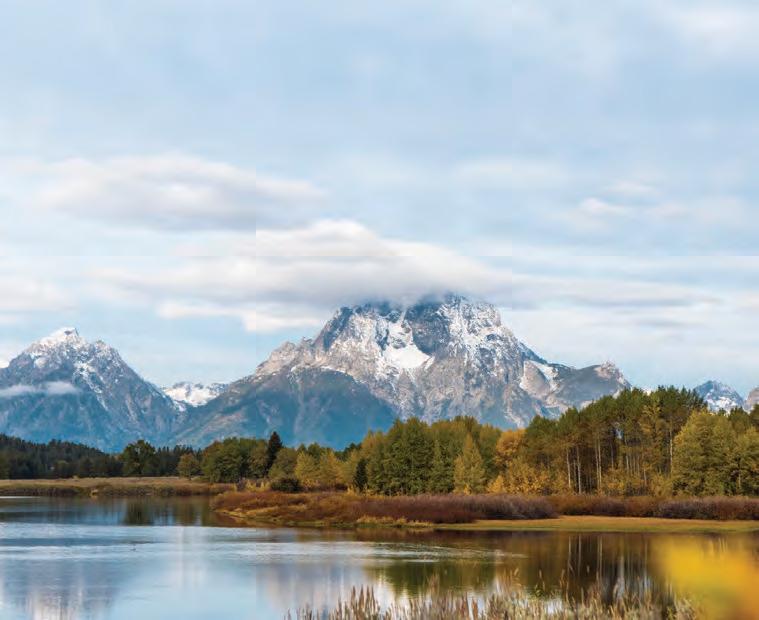

122 SILICON COULOIR JOIN US IN IGNITING NEXT LEVEL LEADERSHIP SUMMIT 2024: SEPTEMBER 26 & 27 JACKSON HOLE, WY A VENTURE OF

HEADQUARTERS/CUSTOM PACKAGES 406.763.9102 39 JAYS WAY, GALLATIN GATEWAY, MT NORTH YARD/RETAIL OUTLET MTRECLAIMED.COM 406.585.5953 81601 GALLATIN RD, BOZEMAN, MT
photo by Krafty Photos
 Mike Beck stands outside of his garage. Inside are a multitude of collectables, including his motorcycle.
Mike Beck stands outside of his garage. Inside are a multitude of collectables, including his motorcycle.
Livin’ in the

With music and horses, Mike Beck has always found his way
Words by Toby Thompson | Photos by Lynn Donaldson
Nervousness is a condition Mike Beck abjures, yet he stands offstage gripping his Martin protectively as he waits for Live from the Divide’s host to finish introducing him. Beck straightens his shoulder-length hair and adjusts the brim of a Western hat. He’s attired in a jean jacket and faded Wranglers, yet his stature is formally solid, a remnant, perhaps, of his past as a buckaroo in the Nevada high country or his passion for training horses. Many of his songs— praised by everyone from Ian Tyson to folk godfather Ramblin’ Jack Elliott to Tom Petty—explore those traditions. Tonight, on Bozeman’s hip northeast side, he will have 90 minutes to present them in a solo performance that will mix narratives of the troubadour life with the folk, country, cowboy and California-rock songs that have made him a legend. At 70, Beck has played hundreds of shows throughout the United States and Europe. But tonight’s is unique for the Bozeman, Montana venue’s intimacy. Before a stage decorated with a Big Sky backdrop of snow-dusted mountains, 50 patrons await his appearance. The house is full.
Applause welcomes him, as it will warm him throughout tonight’s performance. His guitar case, pasted with stickers from his travels, rests behind him on a riser. He adjusts his capo and begins.
A song this audience knows as Beck’s most intimate—and one that encapsulates his own journey—is titled “Livin’ in the Arts.” To a gentle acoustic strum, the lyrics lay out the challenges of the creative life, those faced by practitioners such as Hank Williams, Ernest Hemingway and Richard Brautigan, each of whom succumbed to pressures of courting the muse and died early. Beck will present more than a dozen songs this evening, each accompanied by a colorful story, but none will move his listeners more than this one. Its lyrics go:
I’m so lonesome, I could cry/ You know that’s how Hank Williams died/ in the backseat of a car/of a broken heart/ Hemingway and Brautigan/ They ended it all with a Remington/ Livin’ in the Arts/ Is a dangerous thing/ Now Van Gogh chopped off his ear/ When all his other options seemed to disappear/ But
he gave us The Paris Café on a starry night/ Lane Frost rode that bucking bull/ To his death, but he was cowboy cool/ Livin’ in the arts is a dangerous thing. The song’s promise is in its final line: But not me, I’m just going to dream a way, I’m just going to find a way, for one more dance with you. “You,” of course, is the artist’s muse.
“The creation of art, to me, is a blessing,” Beck has said. “To be excited about something at my age is a gift … Music and horses. I still get excited about them.”
“Nevada was my two years before the mast—my Harvard and Yale,” Beck says in the old saloon at Ted’s Montana Grill in Bozeman. “But even cowboying, I kept my guitar and fiddle with me.” Over supper, he relates his journey as a traveling troubadour and traveling minstrel, one that began as a boy— “barely licked off”—in Monterey, California, then took him hitchhiking through the Pacific Northwest, Jack Kerouac-style, then to working ranches near Salinas, California, and three-to-five-month sojourns as a buckaroo on the 2-million-acre Spanish Ranch, near Tuscarora, Nevada.
“We had 20,000 mother cows and rode 50 miles a day. Camp was 70 miles from town. My first day there, a horse broke its leg and, having no gun, they had to kill it with an axe. Those cowboys included ex-cons, draft dodgers, and guys running from the law. It was like shipping out. Everything in life was Girl Scout camp after that.”
Here at Ted’s, he forks up a portion of bison meatloaf and gravied mashed potatoes but takes neither wine nor beer. He’s a stocky fellow of moderate height, with a trim beard, the hands of a cowboy rather than a musician, and a countenance that belies his years. “I grew up in California during the 1960s,
a golden time,” he says. “It was the Beach Boys, it was Ken Kesey, it was Alan Watts and Carlos Casteneda, it was Haight Ashbury, it was Monterey Pop. And near my house was Carmel, Steinbeck’s Cannery Row, and Big Sur.”
His lyrics, in songs like “John Steinbeck Drank in Here” or “Quite Like This” celebrate the fun he enjoyed (In a ’56 Willys pickup truck/ bale of hay in the back and a border collie pup/ It’s the tightest turn that I’ve ever been on/ Maybe that’s why they call it Highway One) but they dodge the tensions of a home life that were difficult to navigate. His father, a retired Navy chief, “drank and could be violent,” Beck says. The elder Beck “had been at every major assault in the Pacific during World War II.” He’d grown up as an orphan in Pittsburgh, suffered from PTSD, and “was a tough little Irishman, a badass.”
Significantly for Beck, his father held no brief for music, suggesting that path was “not worthy of anything” and that musicians were effeminate.
Beck adds, “He was happy with me until I started to become my own person. Which was associated with the hip movement that was happening in Big Sur and Monterey. I was dead set on that road. I’m still on it.”
Beck’s mother, who was French Canadian and had grown up on a ranch in Alberta, was her husband’s opposite. “She was a strong woman with a great deal of empathy and kindness,” who had worked as a welder in San Pedro’s shipyards during World War II, “and was more understanding of what I wanted to accomplish. She loved music, owned Judy Collins, Gordon Lightfoot, and Joan Baez albums. She supported me as much as she could, while my dad was alive.”
Beck’s father died when Mike was 16. “It was a massive heart attack. Stress killed him.” Beck touches the side of his plate. “There was such high tension at home. When he passed, I was
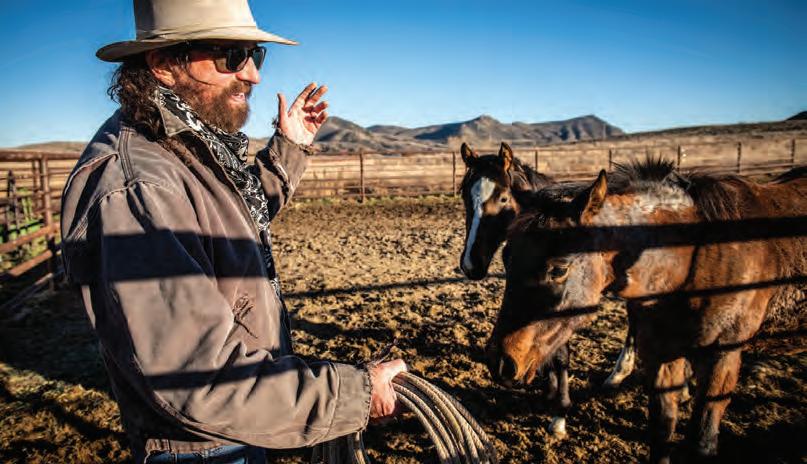 Beck visits with two colts in their corral near Milligan Canyon in southwest Montana.
Beck visits with two colts in their corral near Milligan Canyon in southwest Montana.
horrified and sad, but there was also relief that I could be myself.”
Beck came to horses early. His mother bought him his first. “I was in third grade. We had a little place outside of Monterey, but we could ride out across what became Clint Eastwood’s property, all the way to Carmel Valley.”
Horses and guitars would mark Beck’s career path, one that’s supported him emotionally as well as financially. For horses, the awakening would happen in his association with “whisperers” like Ray Hunt and Bill and Tom Dorrance, pioneers in what would be dubbed the natural horsemanship movement. This philosophy utilizes not the traditional tools of “breaking” horses, but those of schooling them more intuitively, more gently. For music, Beck’s epiphany came at 1967’s Monterey Pop Festival, with performances by the Mamas and Papas, Jefferson Airplane, Janis Joplin, Ravi Shankar, and Jimi Hendrix. As Beck wrote in “Summer of Love,” I grew up in California in the summer of love/ Jimi burned his guitar like a sign from above/ I was just thirteen, I was standing in the rain/ The wind from the ocean was calling out my name.
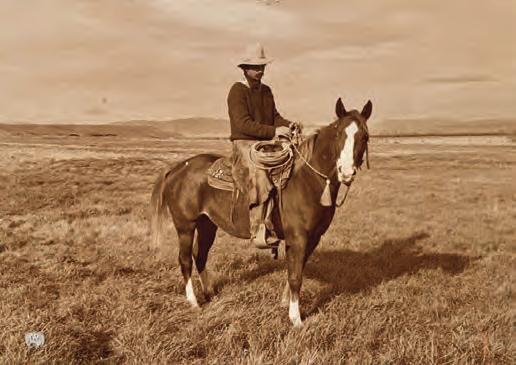
“After my father’s death, I sought out father figures, but not consciously,” he says. “Ian Tyson was one, Jack Elliott is one, and Bill Dorrance was definitely one.”
Between the hardscrabble summers as a buckaroo in Nevada (“I earned $10 a day”), Beck lived at Dorrance’s ranch between Carmel Valley and Salinas, doing chores and learning to train horses. Beck found Dorrance to be a priest of equestrian Zen. “I was in a hurry all the time. He turned that around in me. He taught me to see what happens before what happens happens. ‘This is just life, Mike,’ he’d say. ‘Horses are just life.’”
Dorrance was kindness personified. “He spoke softly, was real steady. He didn’t say bad things about people. He didn’t raise his voice. I had the luxury of not being his son. We had a wonderful relationship.”
Nudging aside his plate, Beck adds, “But from both my parents, I learned manners. And from my dad, an appreciation of work. I feel honored to have been raised by two people who came through the Depression and World War II. I don’t think we’ll see the likes of them again.”
A Mike Beck show can take several forms. It might be acoustic, with Beck performing alone on a Martin D-18, or it might be electric, with him playing a custom Fender and accompanied by his band, The Bohemian Saints. That group includes a drummer, a bassist and guitarist, occasionally a pedal steel player, and Beck on his B-Bender Telecaster, signed by everyone from Rodney Crowell to Marty Stewart. The
Parsons/White String-Bender is a device that raises the B string of an electric guitar one step, producing a twang or crying sound reminiscent of that made by a pedal steel. It was developed in 1968 by the Byrds’ Gene Parsons and Clarence White and played by White on several of the Byrds’ albums. “Clarence’s bluegrass picking was what I first aspired to,” Beck says, “but his electric style is what led me to the B-Bender.” In 1977 Gene Parsons fitted Beck’s Telecaster with a B-Bender, and Beck’s mastery of that instrument has contributed to his reputation as a virtuoso guitarist.
Ramblin’ Jack has said of Beck, “His strings do things that mine never could. They obey the slightest finger-touch commands, like a fine reining horse.” Western songwriter Tom Russell has said that Beck’s songs “are filled with braided rawhide and mission bells.” And, “He’s a better guitarist than I am.” Tyson, before his death, said of Beck’s cowboy oeuvre, “Mike’s plowing new ground. He’s not re-recording the old Hollywood matinee music from the ’30s and ’40s [Gene Autry’s, Tex Ritter’s, or The Sons of the Pioneers], and he’s better than all those newer Western guys.”
Beck laughs at these encomiums. “Ian told me, ‘You’re too good a guitar player for cowboy music.’ I didn’t listen.”
A Bohemian Saints set might include numbers Beck wrote with Tyson, a song like “In Old California” or “Juan Guadalupe,” a Beck composition upon which Tyson sang. Or a California love song like “Amanda Come Home,” which Beck wrote for an army language specialist in the Defense Language Institute at Monterey, who would ship out during the Iraq war and has remained Beck’s friend. Its lyrics have been played on NPR’s “Weekend Edition,” and the song was featured on Neil Young’s website:
Rolling down some desert highway/ On the other side of the world/ All dressed up in camo/ She’s her mama’s little girl … / Yesterday she was a little girl/ Bringing home a bird with a broken wing/ Amanda come home … / On the outskirts of Baqubah/ The IEDs are going down/ The ringing of a cell phone/ Could be the last sound/ So keep your eyes wide open/ And cover up your heart/ Amanda come
127
Beck sits in the saddle in Montana in 1979. Photo courtesy of Mike Beck
home … / Last night I had a dream/ You couldn’t remember your name/ You couldn’t wash that smell off your skin/ You couldn’t stop hearing all the cries of pain/ But when you get home/ We’ll mend the bird with the broken wing/ Amanda come home.
Several artists have recorded the song, but as Beck says, “I always hoped Natalie Maines of The Chicks would do it. She could sing the hell out of it.”
Storytelling is so important. It’s something I learned cowboying, and it’s part of the folk tradition. A story should take you someplace. And lead you in. That’s my job, as a performer. Leading you in.”
–MikeBeck
“Juan Guadalupe,” which drew Tyson to Beck (“He called me …”) led to a collaboration that continued until that storied performer’s death. They sang together and as mentioned, cowrote “In Old California,” which celebrates the vaquero tradition of that state. “We performed at the Emerson in Bozeman and talked about horses often,” Beck says. “When I wrote ‘Patrick’ and ‘Don’t Hurt My Heart,’ he said, ‘You can’t write a song from a horse’s point of view!’ Then he wrote ‘La Primera,’ about the first Spanish horse to come to the Americas.”
Much of Beck’s work gentling horses (for 20 years he traveled to Scandinavia, offering horsemanship clinics) has reflected not just what he learned from Bill Dorrance, but how he’d preferred to have been schooled in Monterey classrooms, “where I learned nothing,” and what he was exposed to at home by his father. This history is recalled in several of his songs, “Don’t Hurt My Heart” being the most poignant. It’s a horse’s first-person plea: I met some men with kind hands/ Others were hard as steel/ Worked me hard and then they gave me the whip/ Never thinking about how I feel/ So don’t sore my back/ Don’t you jerk my mouth/ Don’t hurt my heart/ And I’ll run to you.
Another mentor, whom Beck met with Ramblin’ Jack, was Merle Haggard, “The Shakespeare of country music,” Beck calls him, as well as Buck Owens, a progenitor of the Bakersfield, California sound. That movement, less slick than Nashville’s, predated the country rock of the 1970s and, with its twangy guitar riffs and heavy backbeats, excited Beck. The metropolis of greater Bakersfield with its honkytonks, the Blackboard and the Highlife, are the subject of his song, “Oildale,” about Haggard’s neighboring hometown: At the edge of the California cotton fields/ At the bottom of the
Grapevine Hill/ There’s a town where country music was made/ There’s a few who remember still/ Where the California Oakie/ Landed in his Dust Bowl flight/ Where he labored in the fields by day/ And he honkytonked at night,” but “They tore down the Blackboard/ And there ain’t much left to see/ There ain’t no yuppies in Oildale/ It’s damn near yuppie free.
The troubadour life is one epitomized by Beck’s mentor, the 92-year-old Ramblin’ Jack Elliott, a physician’s son from Brooklyn who left home in the 1940s to rodeo, sing cowboy songs, and travel with his mentor, Woody Guthrie. “I’ve opened for Jack in many concerts,” Beck says, “have accompanied him in others, such as the John Prine tribute last year at the Country Music Hall of Fame in Nashville, and have more or less cared for him on the road.” Elliott’s rambling inspired Beck’s storytelling and he’s written a ditty about Jack, titled “I Got a Friend”: Well, I got a friend / Named Ramblin’ Jack / Got a lot of stories to tell / Sat on his couch / Drinking his wine / I lost all track of time …”
“Storytelling is so important,” Beck says. “It’s something I learned cowboying, and it’s part of the folk tradition. A story should take you someplace. And lead you in. That’s my job, as a performer. Leading you in.”
The Dorrance philosophy of horsemanship has aided Beck in accepting the roller coaster ride of the art life, where doors to superstardom have nearly opened, but then not, and expectations from Nashville agents and Hollywood stars have vanished. One was from a Garth Brooks representative, who dubbed Beck “a cowboy Bob Dylan,” then suggested he co-write songs with Nashville songwriters. “I didn’t want to do that,” Beck says. “No way.” Another opportunity was to have his tribute to the small-town West, “Don’t Tell Me,” covered by Linda Ronstadt and included on the soundtrack of Robert Redford’s 1998 film, The Horse Whisperer. “I thought that was my ticket out of the ghetto,” Beck says, chuckling. “But it didn’t happen.” More recently, Beck’s friend and Tom Petty associate, Herb Pedersen, played Beck’s song, “Itty Bitty Girl,” for Tom, who loved it, and there was talk of Petty’s group, Mudcrutch, recording either it or “Oildale.” But that dream was scrubbed with Petty’s 2017 death.
“In the music world, there are a ton of things that never happen,” Beck says. I’ve learned to go inside and be Zen about it. That’s a hard, hard lesson. What I do, like the show at Live from the Divide, has to fulfill me. You do your thing and let people come to you. I’m pretty much at peace.”
The Dorrance theory, that a horse is most interested in selfpreservation, meshes well with Beck’s. Tom Dorrance, in his 1987 book, True Unity: Willing Communication between Horse and Human, wrote that “the rider needs to recognize the horse’s need for self-preservation in Mind, Body, and the third factor, Spirit … He needs to … assure the horse that he can have his self-preservation and still respond to what the person is asking him to do. That is going to be a useful thing to both the person and the horse.”
Or as Tom’s brother, Bill, characterized horsemanship, “It’s just life.”
128
A week later, Beck is gentling his 10-year-old mare, Juanita, in a corral near Milligan Canyon in southwest Montana, at a friend’s ranch where he boards her. He’s handcombed her forelock and stroked her neck. Most days he will spend time schooling her, but he’s moved to an adjacent corral, where two colts—one 9 months old, the other 6—rest together in the dirt. They rise at Beck’s approach, trembling slightly and gauging his demeanor, which is non-threatening yet precise.
The day is chilly, dusk is approaching, and Beck adjusts his buckaroo scarf high on his neck. Earlier, he’s posed for photographs at his Manhattan, Montana apartment, a studio above a garage sheltering his landlord’s vintage Mercury convertible and Beck’s Royal Enfield motorcycle. He owns two bikes, the second a Triumph Bonneville, about which he’s written the song, “650”: It’s got the guts, man it’s got the style/ And if you can turn a wrench, you’ll get many a mile/ It’s born in the Midlands and assembled with pride/ Those Brits made a mighty fine ride. He keeps it in Monterey for trips along the Pacific Coast, where before Christmas he will play several shows. He’ll then screen a documentary film, Closer to the Light, about his life and art, that in late January will premiere at Elko’s National Cowboy Poetry and Songwriting Gathering, where for 15 years he’s performed. Earlier in January, he’ll participate in a tribute concert to Ramblin’ Jack, in a San Francisco extravaganza featuring Joan Baez, Rickie Lee Jones, Rodney Crowell, the Grateful Dead’s Bob Weir, Maria Muldaur, Jackson Browne, Steve Earle, Corb Lund, and others. Beck is honored to have been included. But for the moment he’s concentrating on horsemanship.
The little colt was orphaned at three weeks, her mother killed by lightning or some unknown force, and Beck is taken with her. “She’s a blank slate,” he says, “so far as training goes.” He strokes her neck, then moves away and taps a coiled lariat against his thigh. She reacts to the sound and walks cautiously toward him.
“That’s right,” he says, moving behind her. “I’m letting her get the feel of me, and letting her idea become my idea,” he explains. “I’ll shake my coils. I’ll go rub on her.” His voice softens. “She’s shaping her body to the left. Now she needs to rearrange her hindquarters and feet. She wants confidence in me, in herself, and in her surroundings. ‘I kind of like being with you,’ she’s telling me. ‘I’m with Mike, and the last time he didn’t let me down.’” He looks aside. “She has to get into the frame of mind where she’s a partner. You can’t make a horse, or anybody be your friend. You have to earn it.”
He shakes the lariat and the colt moves forward. “That’s right,” he whispers, “you never had a momma, did you? And you want a momma, don’t you?”
The colt drops her nose against Beck’s hand. If she could sing, her choice would be “Don’t Hurt My Heart.” Before a darkening sky, Beck and the colt stand together.
Toby Thompson is the author of six books of nonfiction, including Positively Main Street, his biography of Bob Dylan, and Riding the Rough String: Reflections on the American West. He has written for publications as varied as Esquire, Vanity Fair, T he New York Times, Outside, and Men’s Journal. He is a part-time resident of Livingston, Montana, and teaches nonfiction writing at Penn State.
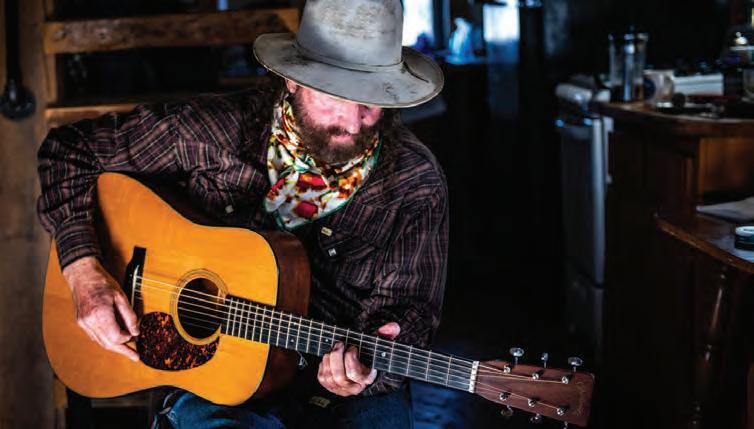
129
Mike Beck jamming in his kitchen. His apartment is cozy and decorated with art he's collected throughout his life.

130 Thinking about living in Big Sky, Montana? Perhaps now’s the time. The Big Sky Real Estate Company is the Exclusive Development Brokerage for Moonlight Basin and Spanish Peaks Mountain Club. BIG SKY IS CALLING. YOU MIGHT WANT TO ANSWER THAT. BIGSKYREALESTATE.COM MOONLIGHTBASIN.COM SPANISHPEAKS.COM MONTAGERESIDENCESBIGSKY.COM 406.995.6333

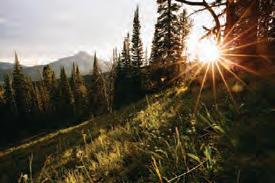

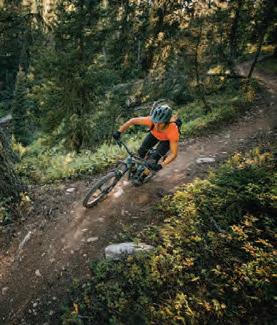

Funk’s Workshop
Welding modern-day blacksmiths and the ‘cultural imperative’ to preserve hands-on craft
By Emily Senkosky
In northern Montana’s lake country just a few minutes’ drive from downtown Big Fork, a room nearly the size of a football field is adorned with countless metal creations scattered as far as the eye can see. But in this space, a blacksmith’s workshop, these various one-of-a-kind creations belong, like an island of misfit toys framed within a vast, mechanized landscape.
Lining the walls are 10 forges. In between these faces of fire is a middle row of worktables, guillotines and large silos of tools—each containing hundreds of wrenches, anvils and clamps pieced in. Hammer hitting anvil creates a rhythm like a ticking clock in a place that
otherwise seems outside of time’s grasp.
Amongst this organized chaos is Jeffrey Funk, 68, moving expertly between the firing forge and the guillotine to poke a hole in what looks like an axe.
“It’s axe day,” his wife, Betsy, 64, tells me as we enter the workshop— confirming my untrained assumption. “He is taking a break from his bigger projects.”
As a Montana blacksmith and proprietor of the only blacksmithing school in the West, Funk is preserving a cultural and iconic craft swing by labored swing. In 2019, Funk founded the New Agrarian school out of his
workshop to help see metal work into the future. Now in its sixth year, Funk’s unique approach to passing on the trade includes a philosophy to help it become what he calls a “regenerative” practice. The cultural imperative of preserving blacksmithing underscores Funk’s life work, but the satisfaction of creating something by hand is the real thing he hopes to pass onto his students.
Forging Funk
Funk has come a long way from smalltown Delaware where he grew up, but some of that history has remained with him. Funk’s father was an architect, and with an ability to fix anything and bring
132
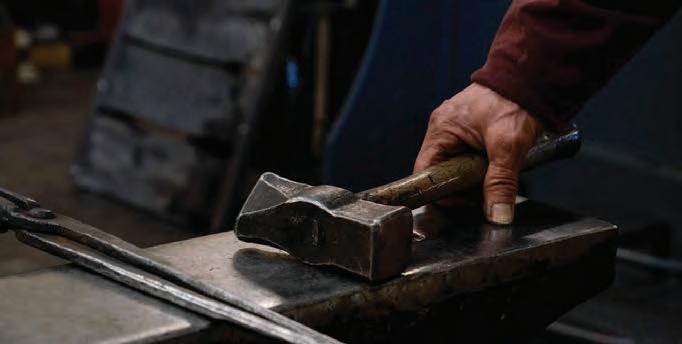
structures into existence, he was a jack of all trades. This capacity to visualize and materialize rubbed off on his son Jeffrey. Funk’s first job at age 14 was working at a natural history exhibition that made prototype inventions and architecture models; he says he felt like “a kid in a candy store.” With a belief that no idea was too big to bring to life paired with his love of making things with his hands, his fate may have been sealed. In 1973, Funk went to Ohio for trade school to officially become a blacksmith, learning how to forge and use an anvil.
In 1976, Funk moved to Big Fork, a town adjacent to Flathead Lake in northwestern Montana, where he began establishing himself as a metal-working professional. He started his career in a rustic teepee. No running water, no electricity—just a man and a fire. From these humble beginnings, Funk built his legacy out of a single forge, first crafting all his own tools, then, forging his iron empire over the course of 40 years.
Funk’s wife, Betsy, embodies a spark that puts his forges to shame. A passionate teacher who has fought a
broken education system her whole life, Betsy has molded just about as many lives as her husband has molded creations. She describes her and Funk’s relationship as a sort of “Yin and Yang symbiosis.” This is illustrated quite visually as Betsy, a florist, has a garden full of flowers of every color, shape, and size, poetically juxtaposed beside Funk’s workshop of metal masterpieces.
When Betsy goes to work in the garden, she carries a leather toolbelt just like her husband, but with pruning shears and trowels poking out the pockets rather than tongs and chisels.
Although the materials they work with couldn’t be further from one another, the Funks are both drawn to mediums that bring ideas into reality—preserving the dissipating practices of hands-on work through the physical artifacts they manifest.
Betsy describes her husband as a savant, pointing to the pages and pages of mathematical equations, sketches and full-scale drawings that litter his so-called desk as evidence.
“I don’t understand how he comes
up with the things he does,” she says. “What’s more impressive is that he can make these things he comes up with out of thin air. It's like he is some kind of wizard.”
Chiseling out a 21st Century blacksmith
Just as the wizard himself was getting started in the trade, the Golden Age of Capitalism had struck blacksmithing into what Funk describes as a “catatonic state.” Credit lines emerged and America bought up items gluttonously from doorto-door salesmen, TV ads and glossy magazine pictures. Rather than letting circumstance take the wind out of his sails, Funk did everything within his power to specialize in skills that couldn’t be mimicked by machine.
“I have a bit of a love/hate relationship with machines,” Funk says. “As somebody in the industry, I strongly believe that blacksmithing died as a craft thanks to manufacturing. But, you know, they’re part of the necessity of modern life, and so I learned to work with them.”
In the ’70s Funk joined ABANA,
133
Left: Blacksmith Jeffrey Funk pulls a blade he is working on out of the fire in his Big Fork, Montana workshop. It takes several heats to draw out the blade. He will gently draw out his pieces and then use a power hammer that is set at a short stroke and very fast to mold his creations, since the metal cools so quickly. Photo by Cassidy Motahari Above: Funk grips on of his many anvils and hammers.
Photo by Cassidy Motahari
the Artist-Blacksmith Association of North America and started getting involved with the national blacksmithing community by regularly going to conferences. Come the ’80s, Funk says that all blacksmithing was done using coal. This made him increasingly aware of the craft’s ecological impact and he started to visit coal mines, mostly in Canada, where he could learn more about the fuel he was using.
“Iron is right on the cusp between the devil and enlightenment, in a way,” Funk says. “It's such an incredible creative material, but we don’t get it without mining.”
According to Funk, for most of the history of metalwork, charcoal was the primary fuel. It was both the traditional fuel for blacksmithing and industrial manufacturing until around the 1800s in the U.S. Although charcoal isn’t wholly sustainable, small-scale charcoal can be, he says. This forged Funk’s pathos for finding ways to leave blacksmithing more environmentally conscious than he found it. In his workshop, this has manifested in the form of seven forges that run on charcoal and propane rather than coal; threshers, presses and guillotines powered by bicycles; air pressure powered hammers; and dry compost toilets to boot. All creations that—you guessed it—Funk made by hand.
While the way Funk practices blacksmithing today is novel, his profession as a blacksmith itself is also unique. Though blacksmithing did undergo somewhat of a revival in the ’70s, leaning into the artisanal approach, some estimations report that of around 10,000 blacksmiths in the U.S. today, only 10 percent are working professionally.
“It’s a very tricky place to be a craftsman in America today. It used to be that every town had a blacksmith because they needed it. It had practical value,” Funk says. “But in the wake of the industrial revolution, the trade needed to adapt.”
For those interested in getting into the trade, Funk says that a professional selfemployed blacksmith can make a salary of anywhere between $75k to $150k. A hired helper, on the other hand, would be looking at something between $20-35 per hour.
Funk recommends that those in blacksmithing keep to forging work and maintain a low cost of living. Most importantly, he says, is to understand the value of making a name for yourself through dedication — with time comes experience, and with experience comes the ability to further self-sustain.
“Human nature, feelings, and desires are not changing at the rate at which technology is integrating itself,” Funk
said. “I think that to feel full as human beings, we need to be more tuned into the relationship between our body and our work. And, well, blacksmithing is a very physical craft.”
A legacy of preservation
Anna Koplik, 30, is one of the many young blacksmiths in the trade that Funk’s unique stamp has left a lasting impression on. While at a conference two years ago, Koplik attended a presentation by Funk and ended up in his demo as the striker, or the person who swings the hammer. An enthralled Koplik stayed by his side for the remainder of the weekend.
“I think that he’s going to be a very important part in keeping blacksmithing alive, both in the trade and art form,” Koplik says. “The way he’s modernized blacksmithing in his own way is really cool to see.”
Koplik visited Funk in Montana shortly after meeting him, taking the chance to learn from a pillar in the community and utilize a well-equipped workshop. This past winter, she came back to do an official six-week apprenticeship in the hopes of growing in her propriety in the re-emerging trade.
According to Funk, commitment to the craft and self-reliance are foundational principles in “smithing”


134
Left: Blacksmithing is a very iterative process that takes skill and technique that is sculpted over time with practice. Right: Betsy Funk, Jeffrey’s wife, arranges flowers in her kitchen in Big Fork, Montana. Photo by Emily Senkosky
and are the core principles of The New Agrarian School. Funk says he started the school because he believes that preserving traditional crafts is a cultural imperative—especially in the face of today’s screen-focused world. In fact, Funk asserts “blacksmithing is the antithesis of screens.”
“One day I realized, I think my time would be better spent sharing,” Funk says. “Economically, that might not have been the best decision. But spiritually, it was.”
Coming into its sixth year, the school hosts an average of 40-50 students every summer, with each session typically offering seven classes. Funk’s instruction prioritizes functionality, with classes teaching the craft of blacksmithing tools, smelting iron from ore, American axes, garden and kitchen tools, and chefs’ knives.
The school, like Funk, is devoted to approaching blacksmithing through its foundational elements— community, energy, material, and environment.
The name New Agrarian is a nod to its pursuit toward regenerative utility, an education to help craft the tools needed for individuals to grow their own food and reconnect with the landscape. According to Koplik, who went to craft school in New Jersey at a place called Peters Valley, reputational hubs for blacksmithing like Funk’s are extremely important. Today, the trade is based on a lot of word-of-mouth networking and community is essential.
The curriculum for the New Agrarian School is grounded by three guiding rules:
• They don’t make weapons, a philosophy dovetailed with non-violence.
• They commit to living as minimally as possible.
• They appreciate and accept others, promoting inclusiveness and honoring human relationships.
On Funk’s island of creation, where flowers bloom alongside striking anvils and blazing forges, a legacy of preservation is illuminated. Whether it’s a garden tool for his wife, or a space to perpetuate an endangered craft, Funk continues to prove humans’ capacities to create real things from a mind’s eye.
Born in Idaho with a bad case of wanderlust, Emily Senkosky is a writer, photographer and editor who is inspired by new surroundings. After making a life for herself in Medellin, Colombia, she came back to the Western U.S. to refine her writing for environmental topics and now is a graduate student in the University of Montana natural resource journalism program.



to find a
135
Watch Funk at work in this short film
Top: An Aeolian harp, one of Funk’s creations from roughly 40 years ago, stands on functional display. The aeolian harp plays music as wind moves through its strings. At 20 feet tall, this one is made from steel and stainless steel. Photo by Jeffrey Funk Above: A bikepowered string winder waits to be pedaled in Funk’s home. Funk made this by hand out of a couple of exercise bikes and miscellaneous junk parts. A creation born of necessity, Funk had to make his own machine to wind the strings he needs for Aeolian Harps because he was unable
musical string manufacturer that could make the long lengths needed. Photo by Jeffrey Funk

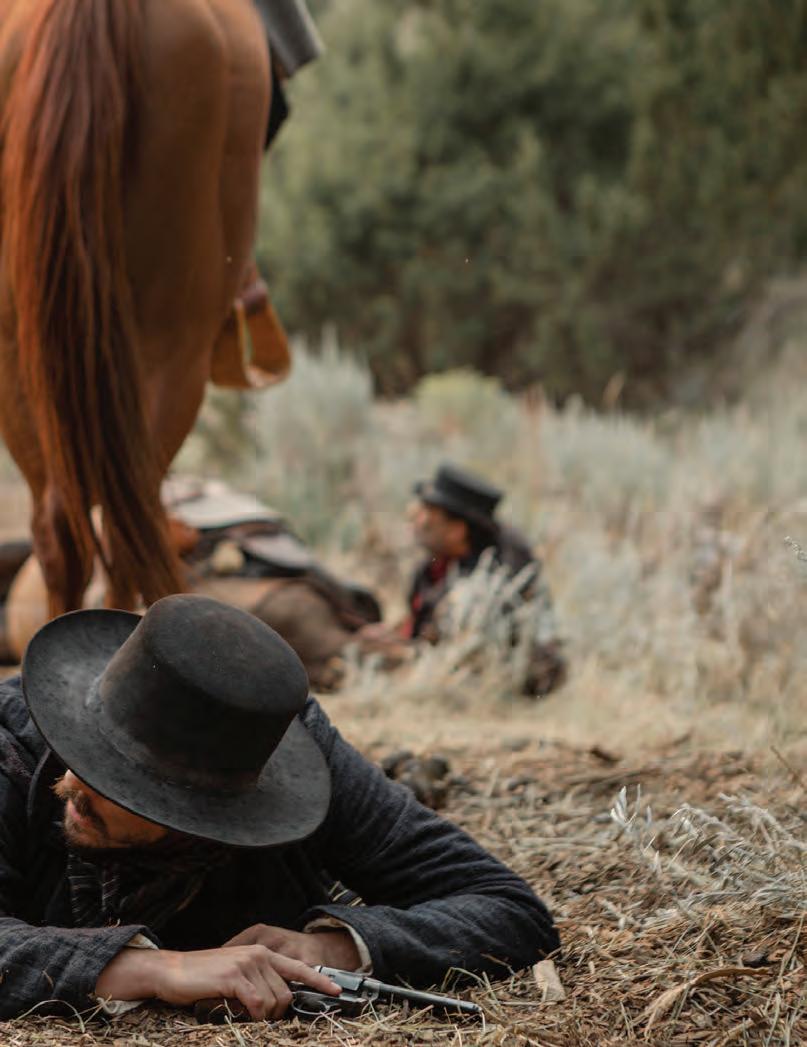
CREATIVE POETRY: MANIFEST DENSITY // 138 ART: OUT WEST // 142 REVIEW: THE PROFANE REVERENCE OF CHRIS LA TRAY // 146 FICTION: BLAZING HEARTS ON RAMPAGE MOUNTAIN // 150
Montana actor Beau Linnell catches his breath after performing his first stunt during the filming of The Old Way, a 2023 film starring Nicolas Cage that was shot at the Yellowstone Film Ranch in Paradise Valley. “I bruised a rib or two, so that explains the facial expression,” Linnell said. Photo by Kehana Rose
What will we do when the West is just another direction, instead of that vast unruly landscape of myth and lore so easily evoked in our collective unconscious?
When the spirit of the West leaves one fall and doesn’t come back; retreating to the inaccessible, leaving behind a sanitized version of over-populated and over-priced everything, instead of a decent place to die.


When all that has made the West the West is either fenced in, forced out, run off, gut shot, or spooked to the flattened hills.
When there are no more grizzly bears or ranchers to hate them because they have both gone the way of the Dodo.
When the remaining few keystone species have been expatriated to the most rugged and remote terrain –then myopically gunned down in the final defeat of wildness.
When you can see more bears and wolves in captivity than run free in the American West.
When mammoth tusks, Clovis points, all of the lessons have been paved over, buffalo jumps bulldozed, Indigenous burial sites and petroglyphs desecrated; all in the name of manifest density, and progress.
Vulture capitalists seemingly overnight transform quiet mountain towns from communities to commodities, rotting the social fabric while writhing cutthroat trout back-eddy belly up; their final vision through fungus covered eyes, a smallmouth bass spawning in blue ribbon trout waters.
Poem by Brad Orsted | Illustration by Madeline Thunder
Watch the poet perform Manifest Density
When the lodgepole pine forests of the Greater Yellowstone Ecosystem give way to cactus scrub and mating sub-tropical birds, after the blackened burn of the next overdue massive wildfire.
When ranching families lose their way of life, sardonically, not unlike the murdered Indigenous caretakers the land was stolen from, and the bison they worshipped that once roamed the West in arguably the largest wildlife migration in global history.
The networks that romanticize our West rarely show a self-unemployed drunk cowboy who was recently dumped by his girlfriend make a last bad decision all over his rented trailer. It’s not very cinematic.
When we elect corrupt officials who cheat our children to line their own pockets while sanctioning death warrants for mothers and their cubs who are being shot to death with high powered rifles from helicopters at den sites just for being born.
The West is changing while we hold our breath, stand by awkwardly, shuffling not sure what to do with our arms, waiting to see what’s left after the dust settles on a narrowing horizon where only the mountains are recognizable, for now.
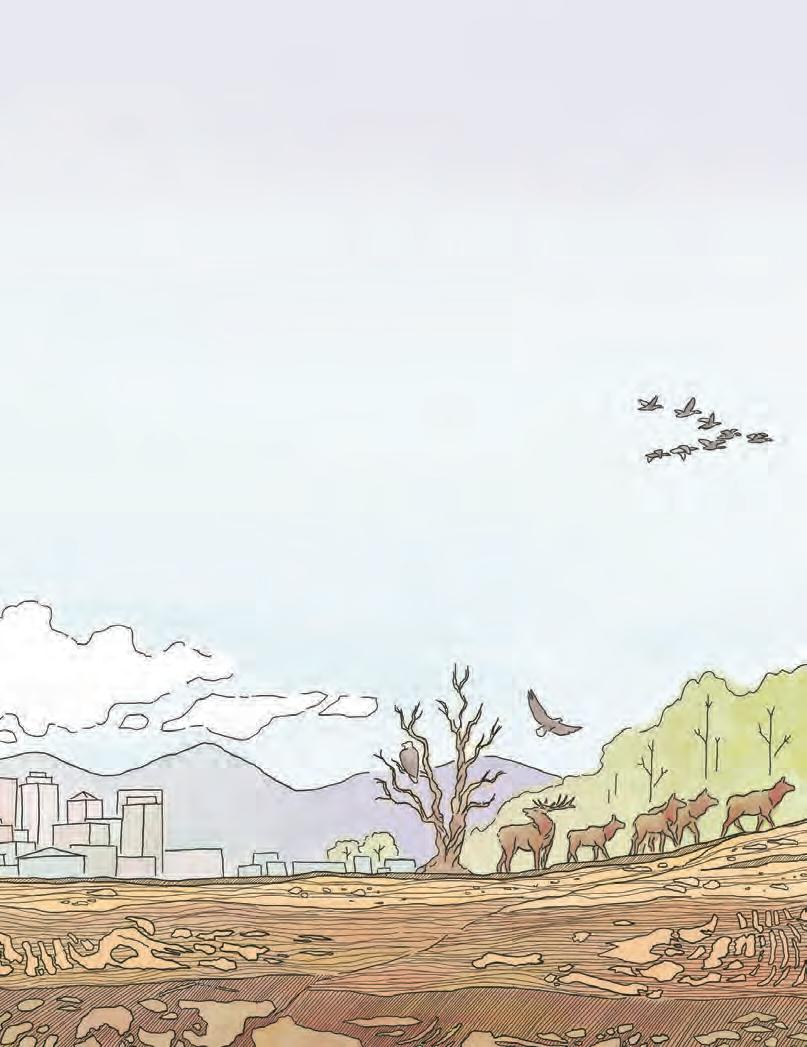
Brad Orsted is a Montana-based author, poet, wildlife photographer, conservation filmmaker and wilderness therapy advocate. His memoir, Through the Wilderness: My Journey of Redemption and Healing in the American Wild, is out with St. Martin’s Press and available wherever you buy books.
Madeline Thunder is a freelance artist based in Bozeman, Montana. When she is not creating, she can usually be found playing outside.
■ Poetry
PROTECT THE GALLATIN RIVER FOR FUTURE GENERATIONS
SUPPORT VITAL PROGRAMS:
River restoration projects
Watershed science
Water conservation efforts
Educational events

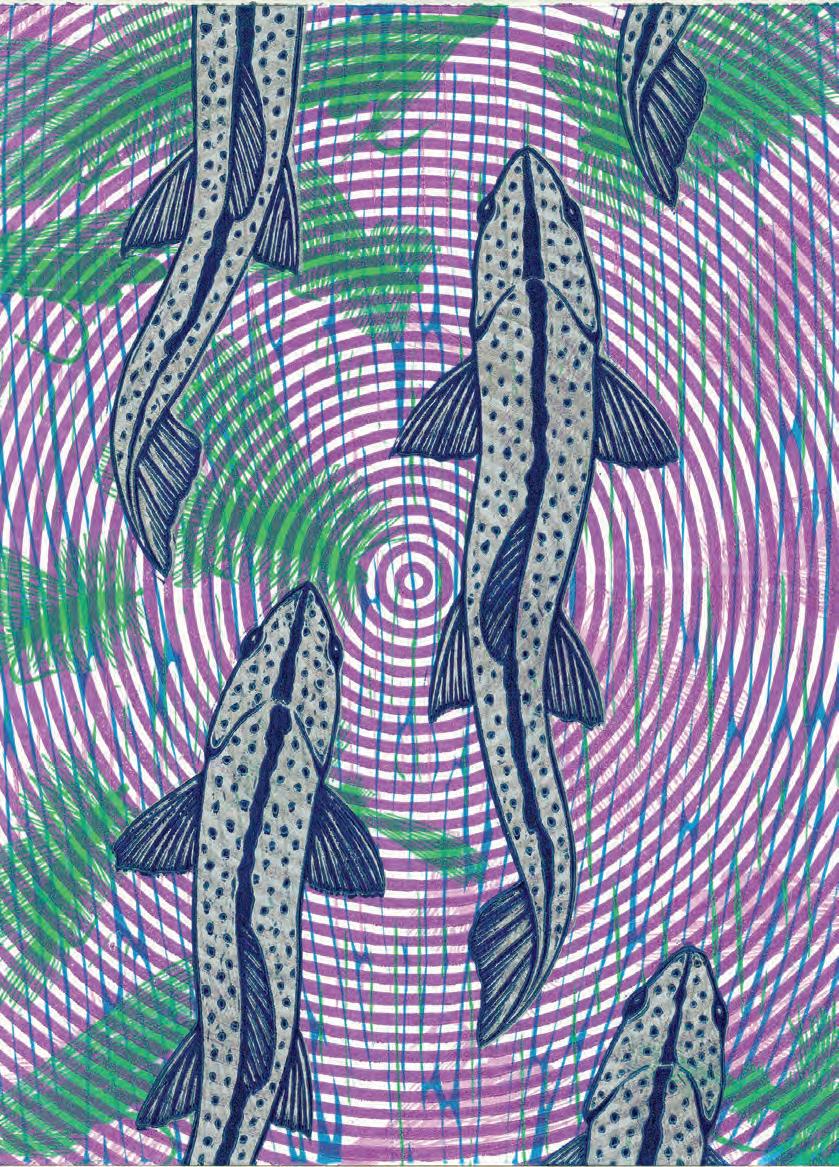
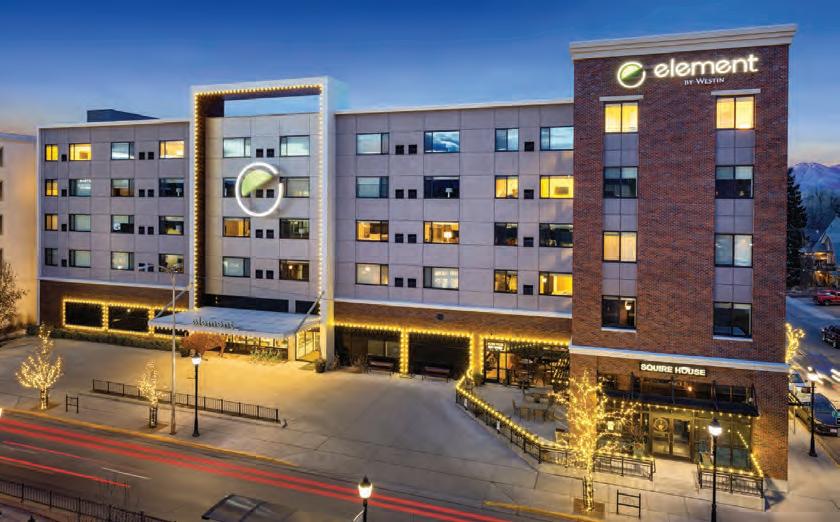

141
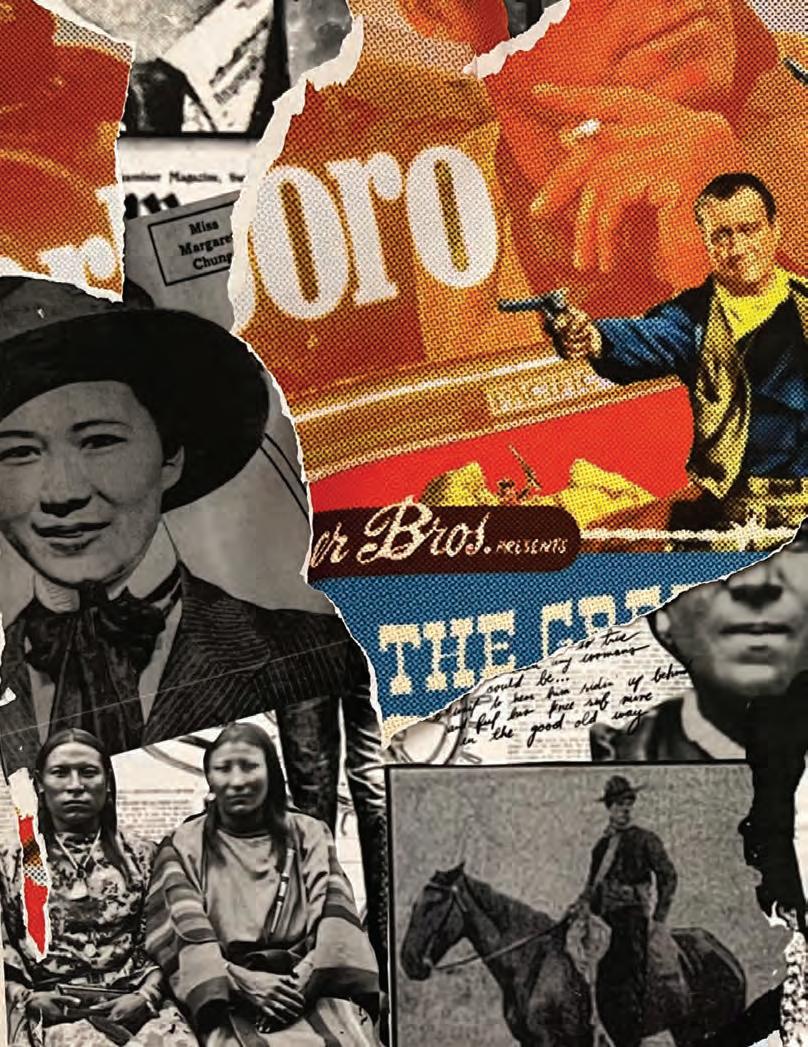
Out West Out West
Integrating Queer Perspective into the Mythic West
Words and Art by Liv Hart

what
■ Art
The Great Takedown (pictured) is former Montana-based artist Liv Hart’s final MFA exhibition at the Pratt Institute in Brooklyn, New York. Inviting participants to be included in
she considers a “subtractive collage,” Hart worked to integrate queer voices of the frontier with the familiar iconography of Hollywood Western posters.
MMy name is Liv Hart, and while I may not be your typical cowgirl, I’ve got a knack for shooting straight, spitting truths, and I’m hellbent on illuminating stories of the West overshadowed by half-truths. As an artist committed to challenging historical omissions and elevating voices pushed to the sidelines, I’ve made it my mission to unravel the myths and stereotypes that have long clouded our understanding of this iconic region.
I moved to Bozeman after graduating college in the East. It was my first time living a life for myself, by myself. I was struggling to make sense of my place and direction in the world, as I was also confronting and coming to terms with my queer identity—something I had been shameful about for a time. But through creative projects and making, I was able to better understand myself and my voice as a person coming into a community of acceptance. I found my niche in design, and I knew I wanted to use this medium to tell stories, and to stand up for people like me—the kids who grew up with little to no mention of queer folks in the history books.
I left Montana’s sprawling mountains for the city skyline of Brooklyn to get a master’s degree in design two years ago, but I couldn’t shake the passion I had for the place I’d left behind. So, I’ve dedicated the majority of my time in this program to unearthing the hidden truths and secret lives of the West, the types where history books will say they were just friends, if you know what I mean.
The Wild West as we’ve come to know it, often glorified through Hollywood’s lens, has painted a narrow and exclusionary picture. From the rugged cowboy to the stoic pioneer, Hollywood archetypes have dominated our screens, leaving little room for the diverse experiences of those who existed beyond the confines of heteronormativity. That’s where my journey began.
My research dives deep into the rich stories of queer individuals who thrived in frontier spaces, beloved by their peers, and who contributed greatly to their communities—even if just on the basis of living authentically. Take Mother George of Idaho, for example. She was a crossdressing Black woman who served as a midwife
This sequence of four images shows the phases of the exhibition over time as participants interacted by tearing back the Hollywood layer, revealing queer characters from this region’s history. These changes made for a dynamic piece that took a life of its own, morphing into an integrated picture of the people of the American West.
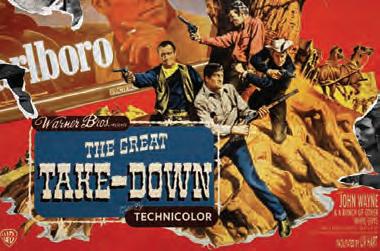



144
in her small town of Gray’s Lake, delivering hundreds of babies in her lifetime, or Evelyn Cameron, a fierce frontierswoman and documentarian of life in Terry, Montana, through a camera lens. Famous cowgirl Calamity Jane of the Black Hills often wore men’s clothing; Harry Allen of Seattle was a cross-dressing outlaw; and Charles Emerson was a queer businessman who found mining success in Colorado. The list goes on and includes colorful stories of lives that most people never hear about. In a time before the spectrum of queerness found its voice (I use the language of cross-dressing and queer to encapsulate their experience), their love stories and presentation unfolded silently, defying the confines of convention. Their identities, nameless yet resilient, remind us of a history untold, where authenticity transcended the boundaries of an era.
I found these life stories through sifting dusty archives of journal entries, recovering forgotten photographs and reading 19th-century scrawled love letters. I learned about current climates of queerness over conversations in coffeeshops with historians and locals who pointed me further in directions of intrigue, and I buried myself in literary gems that unpack myriad angles of the Western myth—providing a well-rounded picture beyond my own topic of interest. I uncovered tales of resilience, community and rebellion that deeply challenge the mainstream narrative of the West. Addressing erasure by illuminating the voices of queer individuals, I’ve found that all this searching serves as a catalyst for exploring broader themes such as masculinity, capitalism, politics, perception and intersectionality within the American story. By breaking down what we know and implementing new perspectives, we can all become better educated on the diverse truths of our country.
At the heart of my thesis exhibition last fall was a massive piece (pictured): a billboard-sized poster masquerading as a vintage Western film ad. Carefully examining the brightcolored formula and design of a midcentury movie through a collage process, I dove head-first into the very DNA of Western cinema—dissecting the tired tropes and overworked cowboy clichés that have
Hart’s final work is displayed for exhibition before the public was invited to tear it up. On the table, Hart placed designed album covers that provided information about the sitters of the peeled-back poster, as well as printed postcards for visitors to take home. In addition to the poster, Hart wrote and performed a song about her research, which could also be found in the album cover. Listen to "Oh, Anderson," a song paring to Liv Hart's work here:

dominated our screens by remaking them, but with a twist. Knowing that typical cinematic portrayals of Westerns often reduce queer individuals to mere caricatures or erase them altogether, perpetuating harmful stereotypes, I wanted to make them the star of the show.
My poster depicts iconic figures including John Wayne and Dean Martin from the 1965 film The Sons of Katie Elder, evoking a familiar imagery of the genre. I chose this piece to incorporate into my collaged film poster because the two cowboys, along with two others, are backing up into each other with guns raised and pointed into the abyss—they are metaphorically protecting their precious archetype that’s been studio designed. But, upon closer inspection, viewers of the exhibition were invited to peel back sections of the poster layer, revealing the faces of queer people who walked these lands long before us. Suspended on a wall 3 feet from the ground, visitors ripped and pulled and tore back the film poster, titled The Great Take Down, uncovering an eye, or a mouth, or even a framed face of a queer Westerner. It was a journey of discovery, where each torn piece added depth and richness to the story. By juxtaposing Hollywood’s glossy visuals with the forgotten histories of queer trailblazers, my work challenged viewers to confront the erasure of these voices and rethink their understanding of frontier life.
My goal is simple: to spark conversations, broaden perspectives and champion the importance of queer representation in shaping our collective history. In an age where censorship looms large through political means, shedding light on this overlooked aspect of our regional history is not just a passion—it’s a necessity. Here’s to breaking barriers, one billboard-sized exhibition at a time.
Liv Hart is a Brooklyn-based designer and multimedia artist. She focuses her practice on activism and queer identity, folding her own life experience into her works. She also loves to sing, play guitar and ski.
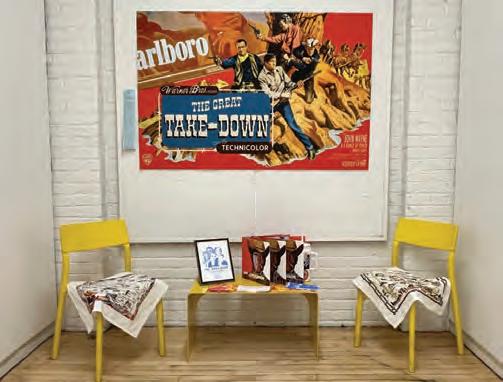
The Profane Reverence of Chris La Tray
Métis storyteller and Montana Poet Laureate explores identity in debut memoir
By Maggie Neal Doherty
Breaching capacity of the Whitefish Community Library’s small classroom, around 45 people cram into an unruly scattering of chairs to listen to Montana’s Poet Laureate Chris La Tray. He bellows, “Boozhoo, indinawemaaganidog! Aaniin!” the traditional Anishinaabe greeting that means “Hello, all my relatives!” La Tray, a Métis storyteller and enrolled member of the Little Shell Chippewa Tribe of Montana, smiled in return when several in the audience responded, “Boozhoo.”
Barrel-chested and bearded with his long hair combed into a ponytail that strikes midback, La Tray commands the room even though minutes before the presentation he sat quietly in one of the chairs with the crowd. Now upright, he jokes that he’ll “bloviate” for the next few hours about poetry, stories about his tribe, and how we are truly all connected. He freely admits that he doesn’t always know what he’s going to talk about beforehand but La Tray, a consummate and enchanting storyteller, needs no script.
The mantle of poet laureate fits La Tray well, although he laments as of late, he’s become “the poet laureate of emails.” He’s on the road a lot traveling to communities and schools across large swaths of the state. He also has another responsibility claiming his writing time: promoting his upcoming debut memoir, Becoming Little Shell: A Landless Indian’s Journey Home. Becoming Little Shell is the story of his lifelong quest to discover his Indigenous identity and the vivid history of the Little Shell, the most recent tribe to be granted long-overdue federal recognition in 2019. The Little Shell are the 574th federally recognized tribe in the United States and La Tray has the number tattooed on the knuckles of his left hand.
La Tray asks the audience if they’ve heard of the Métis. Most in the room raise their hands, which surprises La Tray, who’s used to speaking to crowds who are unfamiliar with his ancestors, a mixed-race culture and ethnicity of people resulting largely from intermarriages from French fur trappers and explorers with Chippewas, who lived west of the Great Lakes and into Canada and Montana. He laughs, “And this is
why we’re in a library.”
Perhaps those who elected to spend their Friday night, one saturated with sunshine and warm temps inciting spring fever, are familiar with the Métis people because of La Tray, one of the state’s most lauded writers.
He’s the author of two books of poetry and a popular weekly newsletter, “An Irritable Métis.” In 2018, La Tray’s first book One-Sentence Journal: Short Poems and Essays from the World at Large launched the freelance writer and part-time bookseller into critical acclaim. The collection is accessible and immersive, infused with a Jim Harrison-esque style for marrying the profane to the sacred. It’s as much worrying about scraping enough cash to refill the propane tank during the winter as it is observations of his non-human relatives during his jaunts at Council Groves State Park, his hallowed ground located near his home in Frenchtown. One-Sentence Journal garnered the Montana Book Award and High Plains Book Award.
The book’s success became a turning point in La Tray’s life and allowed him to concentrate fully on writing and what he calls the “writing adjacent life:” teaching writing workshops, bringing poetry to 4th graders on the Flathead Indian Reservation, and attending speaking engagements throughout the West.
Fueling his burgeoning writing life was the lifelong quest to uncover his Indigenous heritage and his insatiable curiosity about the history of the Métis, as well as joining the Little Shell’s struggle for federal recognition.
Born in 1967 in western Montana, La Tray grew up believing he was Chippewa because his grandmother Ruby told him so and he wanted to be. His dad repeatedly denied the connection but while attending his grandfather’s funeral in 1996 in Plains, La Tray marveled at the number of Indians in the nave of the tiny St. James Catholic Church. He left the service with even more questions about his identity. In 2013, he began an earnest search to understand his heritage and unravel his family’s history.
Becoming Little Shell is part personal history, part tribal
146
history, and encompasses his decade-plus investigation into his identity, a confrontation with his father’s complicated relationship with his own Indigenous heritage alongside discovering the rich history of the Métis and the landless Indians belonging to the Little Shell tribe. The memoir solidifies La Tray as a storyteller—it is written as if he were speaking, infused with his brash humor when he curses the roaming wildlife crossing the highway at twilight. He highlights the connections between Métis and European culture, and how they influenced each other in terms of dress and travel, revealing that all of us, despite race and other binary categorizations, are connected. It’s a living history that La Tray wisely illuminates as he travels the state, finding solace in the landscapes that his ancestors traveled to hunt bison.
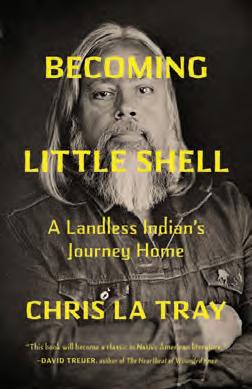
The book opens with La Tray’s reflections as a kid growing up in western Montana. He loved rock music and writing. “I always wanted to be a rock star and write books on the side,” he said while sprawled out on the quiet bank of the Stillwater River in Kalispell. He and I are meeting alongside the braided section of the river a few hours before he’s due in Whitefish.
Landless
Likely not many can say they are living out their childhood dreams, but La Tray is—although writing books is no longer a side gig. He plays in the hard rock band American Falcon and has played in a band since 1983. La Tray is not formally educated as a musician or a writer. He has a high school diploma from Frenchtown High School and believes his writing is well received because he captures the lives—the anguish and the joy—of everyday people.
“It’s just normal life,” he explained. “People like to see their own lives reflected in the things they read. How many of us love to do what we’re doing right now, sitting on a riverbank watching for the eagles, watching f*****g geese, and big ol’ cottonwoods. We are all capable of these kinds of observations.”
La Tray frequently punctuates his speech with profanity, either to add reverent emphasis or to hammer across a point, usually to confront injustice. He seeks joy and celebration, particularly in the natural world. But when it comes to discussing federal Indian policy, he minces very few words. “I exist in the world with a big middle finger to anybody telling me what to do,” he said.
He also exists in a world that repeatedly tries to deny, erase and marginalize his Indigenous heritage. In researching and writing Becoming Little Shell, La Tray still feels the trauma of America’s bloody dealings with his ancestors. “You can’t immerse yourself in federal Indian policy for a decade and come out the other side not feeling at war with the world.”
While writing Becoming Little Shell after the death of his father in 2014, he became more aware of generational trauma, like the kind his dad experienced, resulting in the blatant refusal of being an Indian. Centuries of assimilation tactics and widespread effects of settler colonialism was a deliberate effort, La Tray explained, “to make generations of Indian people hate themselves and their history.”
personal
Despite the ongoing anti-Indian racism, La Tray is determined to not let this heartbreaking history break him. “I try and live my life happily despite that,” he said. Becoming Little Shell embodies that, a story brimming with pride and a staunch refusal of erasure against a vital part of the story that shapes all of America.
Part of that happiness includes celebrating being Poet Laureate and having the platform across the state to talk about the Little Shell. It’s a celebration leavened by responsibility, too. “It’s not so much about me, it’s about me being a representative of a people who have been erased,” he said.
No matter the number of awards or honorifics he’s received, La Tray is impervious to pretension. Irritable, certainly, but he’s also open to expressing the breadth of humanity—and feeling it. I’m strapped to remember one of Chris’s speaking occasions where he was not brought to tears.
As he told me on the riverbank before we spotted a bald eagle arcing across the tops of the cottonwoods, he sees himself joining a thriving community of writers and storytellers who’ve shared their Indigenous heritage. “There are many who have done so much of the heavy lifting to raise Indigenous awareness and make Indigenous people proud to be Indigenous people. I want to be part of that. I want to be part of making people feel good about themselves.”
Maggie Neal Doherty is a freelance journalist, opinion columnist, and book critic and lives with her family in Kalispell, Montana. Her work has appeared in The Guardian, Washington Post, LA Times, SKI, and more. maggienealdoherty.com
147
■ Review
Author and Montana Poet Laureate Chris La Tray’s portrait is displayed on the cover of his upcoming debut memoir, Becoming Little Shell: A
Indian’s Journey Home. Part
history and part tribal history, Becoming Little Shell will be released in August 2024. Cover art courtesy of Chris La Tray


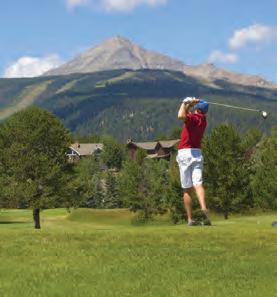
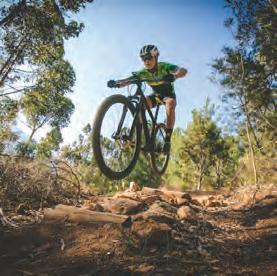
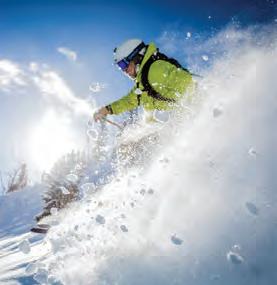
148 27 COWBOY HEAVEN SPUR RD MOONLIGHT BASIN, BIG SKY MT 4 BED | 5 BATH | 4,940 SQFT Inquire about pricing YOUR YEAR-ROUND PLAYGROUND Scan the QR code to visit the website and learn more! LISTED WITH MICHAEL PITCAIRN | WWW.OUTLAW.REALTY | 406.995.2404
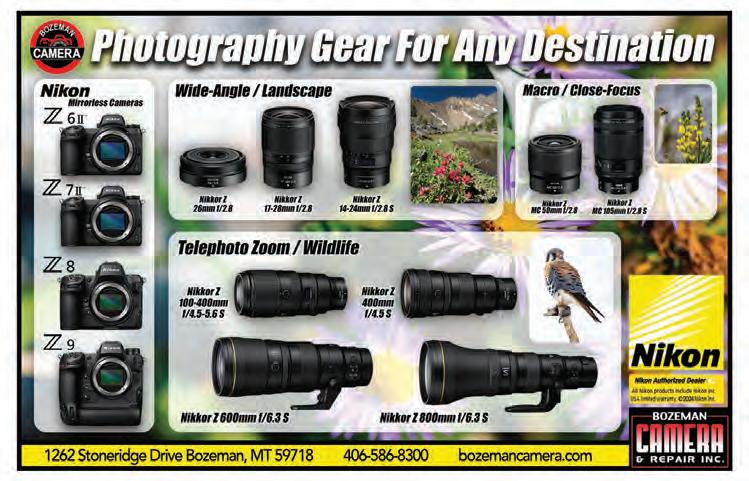
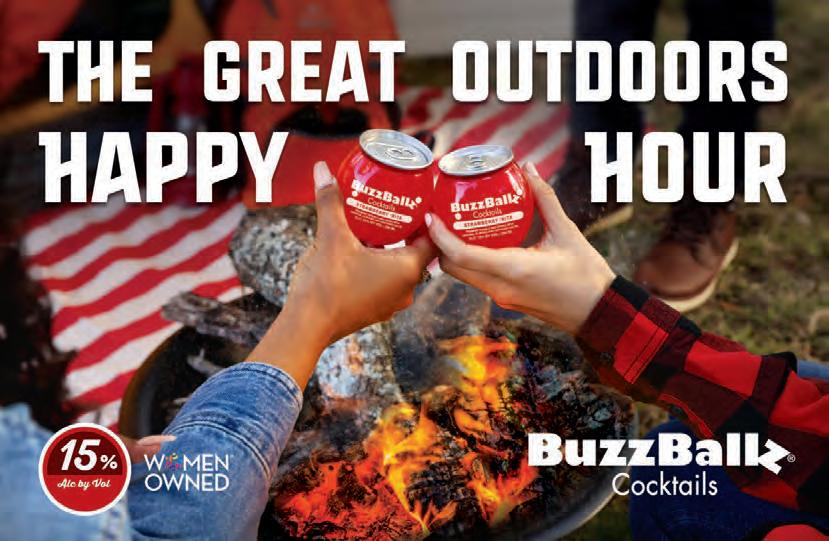

150
Words by Michael Ober
Illustrations by Halle Hauer
fter the truck ground to a stop and she turned off the engine, a deep quiet settled over the mountain top. Suddenly, he wished she wasn’t there. She appeared to be arranging something inside the truck. He waited and looked down from the catwalk of his fire lookout. Then she unfolded herself from the cab. Long legs, he thought. Very long legs. She emerged holding a wicker basket and turned to grab a canvas rucksack from the bed of the truck.
“Need a hand?” he called down.
“Nope. Think I got it,” she replied.
Okay, he said to himself. An independent woman, bent to her own ways—self-minded. This could be interesting.
She ascended the single stairway, her long legs gobbling up steps two at a time.
“Hi,” he said, putting on his best smile and hoping for an easy opening.
“Hi yourself,” she spat back, extending her hand. No denying it, she was a handsome woman—not what he had expected of a seasonal Forest Service dispatcher. When she sat down, she took off her straw sun bonnet and shook out long strands of stunning red hair, the kind that can look—depending on the light—the color of copper, red, amber or any shade in between.
“That it?” she said as she nodded toward the Osborne Fire
Finder perched on its pedestal at the center of the room. It was clear she knew what it was, and he took her question as a mild challenge, maybe just hoping he would rise to it. He didn’t.
What followed was a clumsy exchange that reminded him why she was here: to discuss a fire he had been working up on the other side of Benton Ridge and the “legals” he had assigned to it, meaning latitude and longitude, township and range and finally, the azimuth from the lookout to the fire, in this case 11.5 miles.
It wasn’t the biggest blaze he’d seen since taking post at the Rampage Mountain fire lookout, but it was big enough to be a reminder that even for all its wetness, northwestern Montana was not immune to significant burning. He’d been distracted earlier while recording the legals. News had come through the No. 9 phone line that the Allies had launched an invasion on the beaches of Normandy—and he’d stumbled through his notations as he pondered what this meant for the war.
She had been on shift that day down at the district office dispatch center and took his report.
“They were wrong, you know,” she said, referring to the coordinates. “And I got some heat for turning them into the fire officer without verifying your legals. It was your mistake and caused some bad feelings between me and my supervisor.”
151
■ Fiction
It was true that the coordinates that he called in were flawed, caused largely by the fact that he could not actually see the base of the fire because it was on the other side of the ridge, could not even determine fuel type. Over the two days he tracked the intermittent smoke that puffed up now and then. He debated whether or not to call it in because he kept getting conflicting degree reads from his Osborne. After all, there had been no recent lightning strikes and no other obvious source of ignition—Benton Ridge being buried deep into the far forest. Plus, he was new to his job and eager to cement some credibility with the fire officer. Making it worse, the small crew of smokechasers was unable to locate the fire after two days of stumbling around the woods. But he had called it in anyway.
“Is that why you drove all the way up here? To dress me down over the Benton Fire?” he asked, matching her heat.
“Nope, just wanted to see who you were. You know, go to the source. Get the facts.”
Then, she added: “I knew you wore glasses. Thought there might have been some vision issues.”
“How did you know I wore glasses?”
“I saw your photograph paper-clipped to your personnel file.”
“What? You were looking in my personnel file?” he thundered.
“I have a girlfriend in the district office. Works in personnel. She has some horses and we go for long rides outside of her folks’ place down the valley. We talk a lot. I told her about the incident with Benton Ridge.” Then she paused. “I keep things to myself.”
“Look. If you have a beef with my job performance—or my vision—take it up with my supervisor. He had no problems with my sighting. Even praised me for spotting that fire when others hadn’t. Otherwise, let us just have it out right here.” He folded his arms across his chest.
She slid across the cramped lookout cab, all 225 square feet of it, found one of the two wooden chairs to settle into, crossed her legs and fixed a long look at him, saying nothing. Each of them held to a stare. Before today, she had been a faceless voice on the end of a No. 9 phone line. Now she was anchored in his lookout with a mission. Or perhaps not. He sensed it was more than just Benton Ridge. To shift the narrative, he said, “I still have some hot coffee. Want some?”
“Sure. Thanks.”
He explained his botched legals and she defended her haughtiness in light of a strained relationship with her
supervisor that kept her on the edge of knowing if she had a job or not. They were two strangers on the mountaintop struggling to find their footing with their respective lives and responsibilities.
“Got a boyfriend?” he asked out of the blue, seeing no ring on her finger. In ordinary times it would have been a bold question, overly penetrating. Amid the uncertainties of wartime, though, it was a common question murmured among young couples looking at the short end of their 20s, feeling the dread of war.
“Had one. Killed at Anzio,” she said. “Had another one, too. Childhood chum. We exchanged letters after he decided to go off and win the war. Lost track of him after the letters stopped coming. He was with the 163 third Montana National Guard, 3rd battalion, in New Guinea. I even posted them air mail in hopes that they would make their way to him out there in that big ocean, but…
“You?”
He did not know how to answer this—what was she getting at? There had been high school sweethearts and all, mostly brother-sister friendships, an extension of grammar school playground kiss-and-tell stuff.
“We all have some stories. Don’t we?” he said.
After a while she left, her Ford pickup bump, bumping down the road until the thick stand of Douglas Fir gobbled it up.
Six days later, the phone line jingled two long rings and one short ring. He slipped the earpiece off its hook and pressed it to his ear. It was her. The lookout’s communication was a holdover from the ’20s, de rigueur in its day but out of place with the newer telephone systems. The trouble was, parts for the newer switchboard-based phones had been commandeered by the War Department leaving several of the district’s fire lookouts to rely on the clumsy crank phones. Two long cranks and one short was the code—or number—for Rampage Mountain Lookout. The district dispatcher: one short, one long and one short, as posted on the faded cardboard call card next to his speaker mouthpiece.
“Need some fresh milk up there?” said the voice at the other end.
Up there meant, for her part, the bone-rattling ride up the two-track road that wound around Rampage Mountain until it crested the final ridge to the lookout, elevation: 5,669 feet. Thirteen miles. No matter the weather, it was always a challenging journey. She sounded game for it.
From time to time, as the summer lingered on, she would
152
visit the lookout. There, on the catwalk, they would lean back in the two wooden chairs against the low walls of the window frame and tell stories. And laugh. They both looked back on the Benton Ridge incident, teasing each other. Her visits were more frequent now, punctuated with deep stories of their previous lives. Childhood adventures. Their families. Even some tears. Sometimes she would bring dinner. Other times he would cook fire lookout meals, usually canned vegetables and venison steaks. Everyone knew that lookouts would harvest a wily whitetail out of season to supplement their dreary diet. Nobody seemed to care. She came and went like that, bringing picnic baskets to dine on and his mail from the district office, then at the end of the day, point her truck down the rugged road for home.
He told her how he tried to join the Army but was rejected because of a fused spine from an early childhood surgery, so very long ago that he only had memories of the ghastly smell of ether. The Marines and the Navy had said no as well. It turned out that the Great Northern was hiring conductors on their Empire Builder line between Havre and Spokane. There was an acute manpower shortage during the war and he could work as much as he wanted and took on hours and shifts that would enable him to take leave in the summer and work for the Forest Service. His first seasonal job was working on a trail crew on the Kootenai National Forest. His back nagged him all summer. The next year, 1943, he took a position as a fire lookout at Mount Baldy, outside of Eureka. This season, he found himself on Rampage Mountain Lookout, overlooking Hungry Horse Reservoir. He liked the work and the lookout because you could drive to it rather than make a long and tedious hike to it like at Baldy. Sure, there was some labor involved, not unlike trail maintenance: hiking up and down the phone line corridor, climbing trees, replacing insulators, splicing broken lines, cutting trees off the No. 9 wire—stuff his back could handle.
As for her, she had landed in Hungry Horse after a stint as a waitress at the beanery in the Milwaukee Depot in Missoula. That was after her parents had both died suddenly in ’41, prompting her to sell their house, buy a used 1939 Ford truck split window model, and seek a career. Not content with serving rude railroad workers, she used whatever family connections she had to secure a seasonal job as dispatcher with the Forest Service on the Flathead National Forest. It was a job that came available when most of the men on the district enlisted after Pearl. Knowing that she had to prove herself capable, and hoping for a permanent position with the district, she overthought and overachieved, causing the early tension with her supervisor who thought little of women dispatchers. Most young men her age in the district office, and just about everywhere else it seemed, had left for the service. The home front, for her, meant dingy saloons in Martin City, Coram and Hungry Horse filled with equally dingy men. There were infrequent trips to Kalispell for movie matinees with a few girlfriends. There were letters from her only sister back in Duluth where she worked in a ball bearing factory. They brimmed with bountiful descriptions of the Victory Garden she and her husband tended. There were the quintessential
questions about how life was way out there in Montana since she had moved after their parents died. Have you made lots of new friends? Have you met any lumberjacks or ranchers? She tried not to think about how unfulfilling it all was.
The lookout became their rendezvous place for the remainder of the season. It was a place of solace for two young folks buffeted with headlines of the war. It was a time when it seemed even the earth beneath them was shifting in alarming ways. She would come and go like that, bringing newspapers and food. Then, at the end of the day she rumbled down the road, bound for home. As the summer weeks drew on, she often returned to the lookout on her days off. They eased into a comfortable amalgam. He pointed out all the key landmarks in view of his lookout and all the native wildflowers in great profusion everywhere; she filled him in on current happenings down the valley: war bond drives, casualty lists in local newspapers, progress in Normandy by Allied forces. But more and more, they just talked about themselves.
As the season wound down, the wildflowers dried up and the air adopted a nip. After gaining force in July, the Benton Fire had fizzled, now just a scar on the land. Her visits had become more frequent. There had been minimal lightning activity that season but he was able to proudly call in one “smoke” on Gabby Mountain, which had turned out to be a singular burning snag so high near the tree line that it threatened nothing more than rocks in an avalanche chute. The district didn’t even dispatch a hand crew, but still he felt he had erased any memories of his Benton Ridge mishap, now many weeks in the past.
Then it was time to close up. The larch trees were slipping into their annual golden cloak and dressed the slopes of the forest with welcome color change. Bull elk began their rut and whistled lustily, their bugles echoing across the valleys. As he prepared the shutters for the coming winter, the phone rang. Would he like some last company? She could bring some homebaked lasagna if that suited him.
This time she stayed the night.
Next morning, she helped him load some of his personal gear into her truck to take back to the district office for him in preparation for his check-out. Many weeks earlier he had signed a contract with the Great Northern to return to his route on the Empire Builder. As her truck rattled down the road one last time, he felt a stone-cold chill ripple across his back. He pulled the collar of his mackinaw up around his neck and wrapped his arms around himself as if to hold something in. Fall was coming.
Four generations deep in Montana’s history and culture, Michael Ober is a recently retired professor emeritus from Flathead Valley Community College in Kalispell, Montana. During his 40-year career as Director of Library Services, he also taught English and Montana history. He also worked for 44 years as a seasonal ranger and wildland firefighter in Glacier National Park, and his freelance and professional writing has appeared in numerous regional and national publications.
Halle Hauer is a Bozeman-based graphic designer and illustrator, drawing inspiration from the stunning scenery and diverse activities abundant in Montana.
153



154 406.993.6949 | bigskynaturalhealthmt.com | 87 Lone Peak Dr, Big Sky, MT Owned and operated by Dr. Kaley Burns, ND, Big Sky’s Only Naturopathic Doctor PRIORITIZE YOUR HEALTH WITH OUR HOLISTIC TEAM NOTHING IS MORE IMPORTANT THAN YOUR HEALTH PRIMARY CARE NUTRIENT & REGENERATIVE IV THERAPY WELLNESS & NUTRITION REGENERATIVE INJECTIONS CUPPING THERAPY & ACUPUNCTURE HOUSE CALLS Schedule Your Appointment Now!
Personalized mortgage options to fit your financial strategy

At U.S. Bank Private Wealth Management, we tailor the home financing experience to fit your needs.
Customized mortgage options include:
•Residential one to four units, fixed, adjustable or interest only mortgage options
•Mortgage priority process, products and scheduling to meet your loan closing date
•Primary, second home, condominium, co-op and investment one to four unit properties
•Residential single close construction, lot loan, renovation & expansion options
•Conforming, jumbo and super jumbo loan size availability
•Lending in all states (some loan types are limited to specific states)
Get started today. Contact Lori or Gina to find out more about residential mortgage options.
Lori K. Pilon, CFP® Private Wealth Advisor
406-624-4477
lori.pilon@usbank.com
NMLS# 1380886
Gina Marshall Private Wealth Mortgage Banker
406-600-8699
gina.marshall@usbank.com
NMLS # 489006
104 E. Main Street Bozeman, MT 59715
To learn more, visit usbank.com/privatewealth

Loan approval is subject to credit approval and program guidelines. Not all loan programs are available in all states for all loan amounts. Interest rates and program terms are subject to change without notice. Visit usbank.com to learn more about U.S. Bank products and services. Mortgage and Home Equity Products are offered through U.S. Bank National Association. Deposit Products are offered through U.S. Bank National Association. Member FDIC.
©2024 U.S. Bank 1159804 (3/24)
155
Q&A with Betsy Gaines Quammen
By Bella Butler
Just south of Bozeman’s Main Street in a cottage-style house that feels like it could be made from gingerbread, Betsy Gaines Quammen sits in a red leather chair with her feet dangling a few inches above the wood floor. Books fill every space on the wall and most of the coffee table, a seemingly scripted detail in this home she shares with her husband, writer David Quammen. The Quammens’ 2-year-old Borzoi, Brad, throws his lanky front legs in Betsy’s lap and licks her face. She laughs, her pink lipstick and gold-rimmed glasses highlighting a jovial smile and bright eyes.
This gentle moment feels more like it should belong in a children’s fable than in an interview about Gaines Quammen’s newest book, True West: Myth and Mending on the Far Side of America, which explores the West’s most polarizing topics, from anti-government extremism to public land management. But it also embodies the complexity Gaines Quammen captures in True West, that this storied American region can be both a beloved home—where we live with our families and dogs and communities—and a battleground of ideas— where armed militias, endangered wildlife, ardent environmentalists and multi-million-dollar ski houses intermingle on stolen Native land. As the late writer Ellen Meloy wrote, the West teaches us “to grasp the paradox of love and complication.”
Published in October 2023, True West is what Gaines Quammen describes as a “museum of myths” in which she explores the stories and beliefs that inform the way citizens of the West understand and interact with it.
“There is the perception of profuse liberty, copious machismo, untrammeled wilderness, rugged individualism, discovered and ‘free’ lands, cowboy heroics, blank slates, conquered spaces, reliable rain that ‘follows’ tilling into arid lands,

and enduring frontier,” Gaines Quammen writes in True West’s first pages. “These myths continue to wind through ways of seeing this place and its peoples, creating hurdles in caring for the environment and communities … Right now, there is too much being asked of the West. It sits between history and expectation—a place saddled with hopes that it can’t fulfill.”
Supported through robust research and further enlightened by Gaines Quammen’s academic lens from studying religion, history and the philosophy of science while earning her PhD at Montana State University, True West follows Gaines Quammen’s journey across the spectrum of thought in the West. While traveling the region in her Subaru Outback, Gaines Quammen interviewed and explored communities of multigeneration ranchers, Indigenous people, resistance movement leaders, Creationist museum directors, and resort town book club members, among a cast of other Western figures. True West explores the historical context of the West, and it also offers an intimate introduction to these people who are shaping it today. Gaines Quammen is a selfproclaimed myth buster, and a fervent defender of what she sees as the abused concept of “truth,” but more than anything she says the intention of True West is understanding, and to catalyze the dialogue she believes we desperately need to move from the West’s fractured present into a more unified future.
Mountain Outlaw sat down with Gaines Quammen to discuss True West, how exploring the constellation of truths in the West can lead to understanding, and why the Bozeman-based writer and historian is hopeful about the future. The following interview has been edited for clarity and brevity.
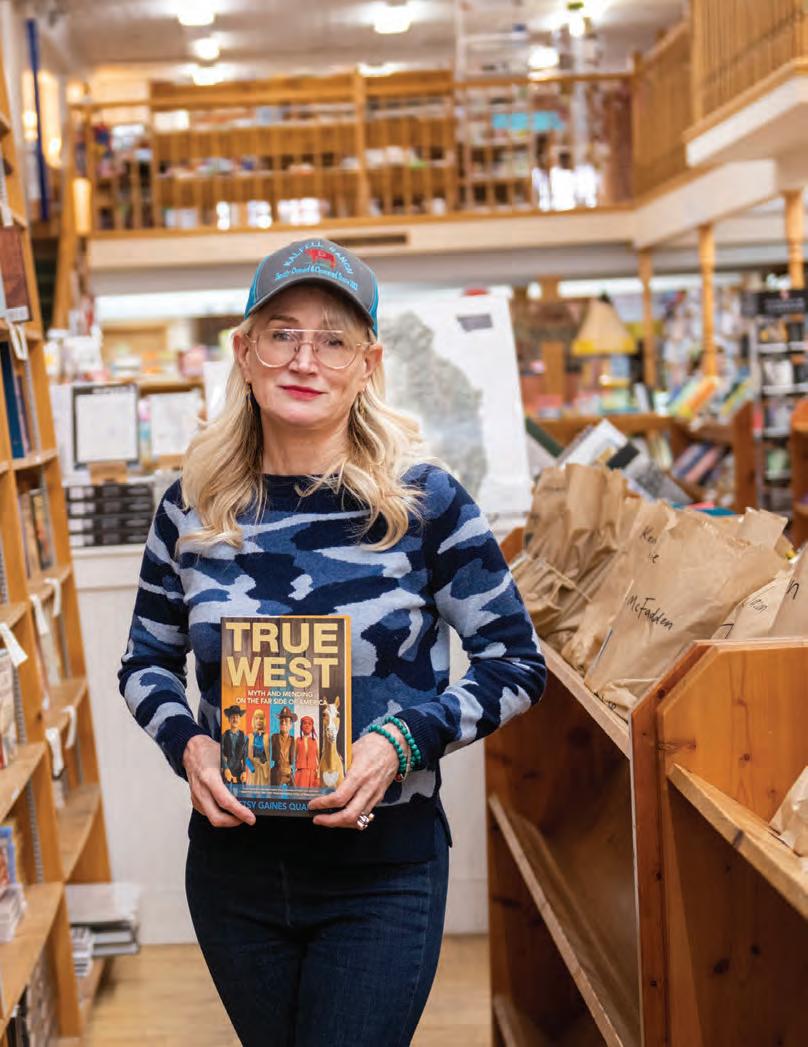
FEATURED OUTLAW
Betsy Gaines Quammen poses in Bozeman, Montana's Country Bookshelf with her new book, True West: Myth and Mending on the Far Side of America. Photo by Lynn Donaldson
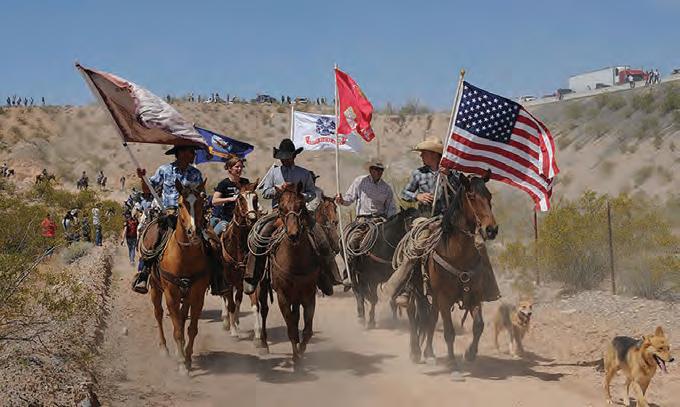
Mountain Outlaw: Thank you for having us for this conversation here in your home in Bozeman. I thought we could start by orienting ourselves on some common ground, and maybe you could explain what this concept of True West is.
Betsy Gaines Quammen: The book title was borrowed from the Sam Shepard play, and so it is something that people have used before. It also was a popular magazine. But my point was that it’s really ironic. There isn’t a True West—or there are many True Wests. I guess I would say there’s not one true West. And so I went about trying to understand what the West meant to various people who came from various backgrounds, who are here for various reasons, and really took the opportunity to understand how they saw the West. And so I feel like after talking to as many people as I have—and I say this in the book—that True West is a constellation and in order to understand what it means you have to understand how it’s seen by a variety of different people.
M.O.: That’s so well said. Tell
me a little bit about your story, particularly that which culminates in this book and this piece of work, and what your relationship is to the West.
B.G.Q: I moved [to Colorado] when I was 18 and really came because of a myth of wilderness. So my lures here were the mountains and rivers and wildlife. That was something that I held in great regard and absolutely loved. And because I am very interested in myth busting, it was important to me to come to terms with the fact that the idea of wilderness is something that was constructed in the sense that there were people who looked at areas in the West as untrammeled or unpeopled and it really isn’t the case. I mean, it’s a place that has been lived in, inhabited since time immemorial by a variety of different cultures. So my idea of the West as a pristine wilderness was a toxic myth itself. And not to say that there aren’t beautiful mountains and rivers and wildlife. This is all something that’s very real and that we love. But I think it was important for me to understand, that in looking at these areas, one of the other layers that’s so important to
understand is that it’s also a land that has been inhabited for generations and generations and generations and generations. And that was a myth that I needed to understand and unpack.
M.O.: What was the main catalyst for this book and this exploration?
B.G.Q: So this was a companion piece to American Zion, which is my first book, and I wrote about the Bundy family, who are a Mormon family in southern Nevada who have really embraced the cowboy myth in order to justify their land use war. And for those that aren’t familiar with the Bundy family: In 2014 they engaged in an armed standoff in Nevada over trespassing cattle. They hadn’t paid grazing fees on public land allotments for decades. And so the government finally was going to confiscate their cattle and [the Bundys] called on the militia through social media. And it was a really galvanizing event for the militia movement in the United States, after the events at Waco and Ruby Ridge in Idaho. So this was a very important moment and really
158

influences where we are right now as a country in terms of anti-government fomenting. The other event that they were involved in was in 2016, where they took over a wildlife refuge in Oregon for several weeks. And so I looked at what motivated the Bundy family, cowboy mythology and a lot of their religious ideology … What are the things that are motivating people in the West to do what they’re engaged in doing? …
So this book, True West, really does try to look at ideologies that both motivated the Bundys, but then also, what myths are people grabbing on to and sort of exploiting for other ways that they want to use the West, or have the West configure in their imagination. So there are people who see the West as wilderness, as I explained earlier. There are people who see the West as homeland. There are people who watch the show Yellowstone and see the West as this cowboy paradise, this place of rugged individualism but also [of] hyper freedom. And that I think played into people who were coming out here during COVID because they wanted
Far left: Militiamen and other supporters of Cliven Bundy head for the corral where government agents were holding the Nevadan’s cattle in April 2014. Minutes later, the animals were freed. Photo Courtesy of Southern Poverty Law Center Left: Protestors oppose a mask mandate in July of 2020 at a Gallatin City-County Health Board meeting where a vote on the mandate was being considered. Photo by Bella Butler
a place where they didn’t feel like they had to be sheltering in place, even though it’s not like we didn’t have COVID here, we did, but somehow the West was a hale and hearty salubrious place. Again, this mythology that’s really motivating people. And what we have is a lot of people with misunderstandings who come to communities unwilling to understand nuance because they’re so enveloped in their own versions of the West.
M.O.: With the West being so tied to all of these myths, and being a concept as much as it is a real place, how did you choose what went into this book?
B.G.Q: I guess I just looked at the most important things communities were facing. I was looking at the militias. I was looking at the influx of extremism. I was looking at the influx of COVID refugees, and the people who could remotely work. I was looking at how real estate was being impacted. How people who lived in these communities were having to make tough choices and maybe leave. How clinics and small communities were being overrun with
COVID patients and how they weren’t even able to take care of folks that had other medical issues and conditions because of people coming and bringing COVID into communities that they thought somehow were safer. I write about how people moving here and wanting second homes are not only impacting the culture of the communities, they’re impacting wildlife habitat. And so I felt like it was important to talk about all these issues together, because these are the things that our communities are facing. In New Mexico, I talk about how Black Lives Matter manifested with the conquistador statue. I couldn’t talk about one thing without talking about all the things.
M.O.: A lot of what you do in True West is you illuminate these myths through stories of them playing out in communities and in different parts of the region, and then you hold those up against a more objective truth and use facts and history and context to frame some of these myths. What is it about you and your character, or you as a
159
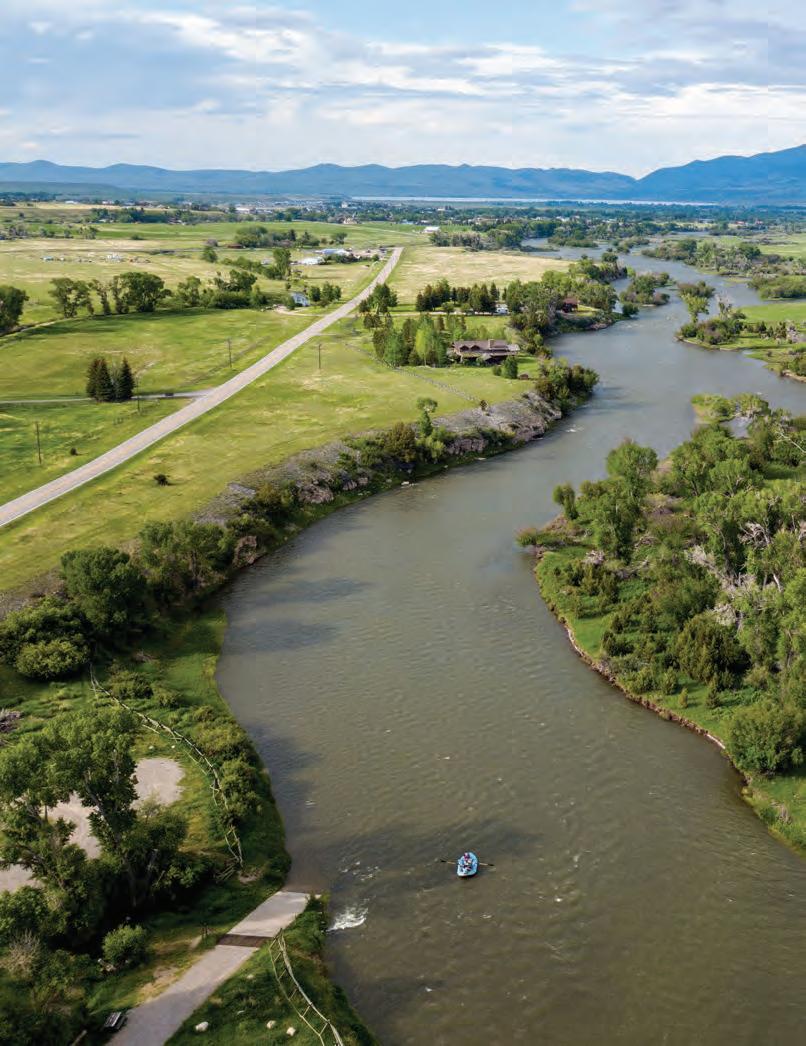
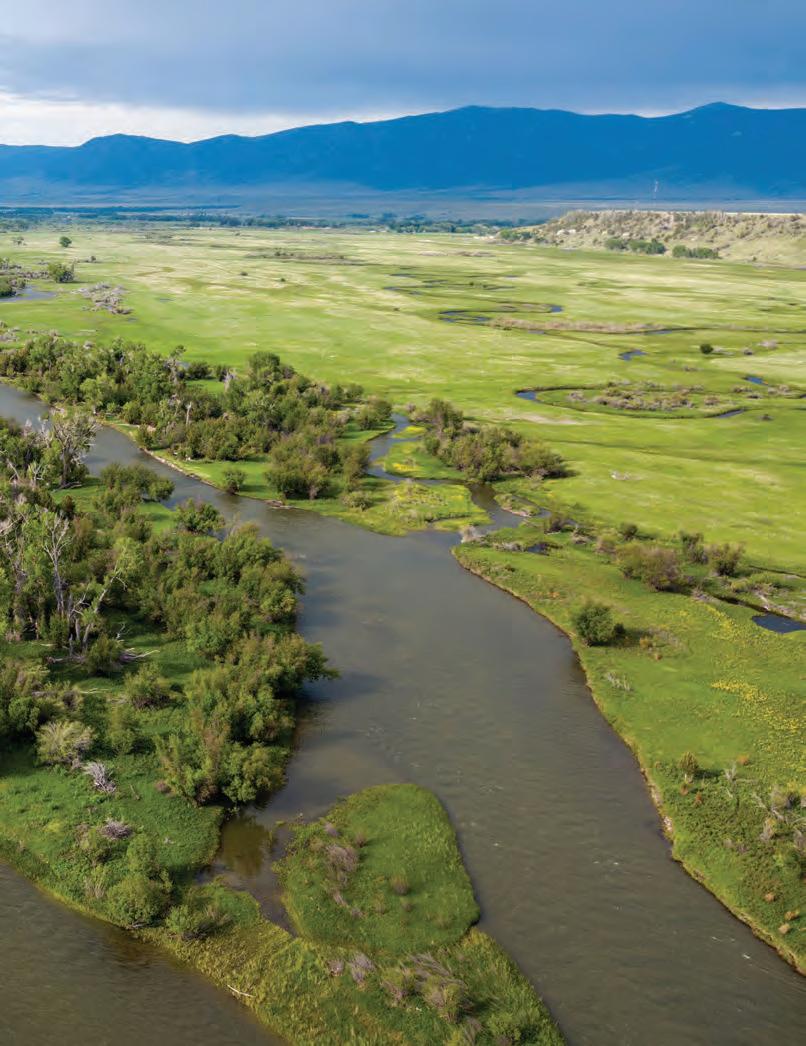
"We are really at a threshold in terms of climate, in terms of potentially slipping into an authoritarian government, in terms of losing resources that we can never get back that are vital for life on this planet. We’re at a place where people are moving here, and we need to be able to be in conversation with others about resilient communities. We have to be doing this now."
– Betsy Gaines Quammen
An overhead view shows the Madison River running through the Madison Valley. In a section of True West, Gaines Quammen writes about her friend's experience integrating wolf-friendly ranching practices on his land in Madison Valley. Photo by Micah Robin
Right: Spring Street looking west from McDonald Avenue in downtown Terry, Montana. Gaines Quammen writes about a relationship she built with a rancher in Terry who told her he had been radicalized. Photo by David Schott Far right: Lisa and Lance Kalfell (left) sit with Gaines Quammen and her dad (right) at the Roy Rogers Grill Bar & Casino in Terry, Montana. Gaines Quammen writes about Lance and his ranch in True West, and how their mutual curiosity of each other led to an unlikely friendship despite differing perspectives. Photo courtesy of Betsy Gaines Quammen
historian or writer, that is drawn to examining myths, or in some cases, busting myths?
B.G.Q: So this is an interesting question because I don’t quite know exactly how I can explain it, but I have this unbelievable sort of motivation when I see people misusing truth—to call them out. I get mad when I see people completely contorting reality … I get really mad when I see people not fully understanding history and truth. I should say that when I do start out feeling angry, and start to understand where they are coming from, I do think it eases some of the anger because I have an understanding about how they see the West … So what starts as indignation, I do feel like allows me to at least understand how other people view land and view the West.
M.O.: That’s so interesting that you talk about that sort of understanding. You describe True West as a constellation, and perhaps that effort to tell other people’s stories gives an opportunity to not only see our own star in that constellation, but for a second to look at the full constellation.
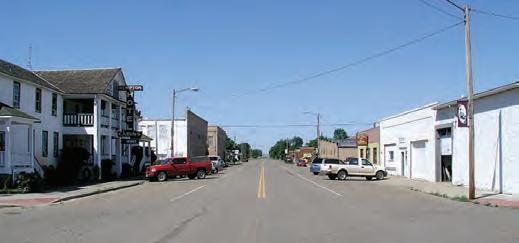
B.G.Q: Absolutely. I learned a lot in this book, as well. I think it was very interesting for me to talk to ranchers in these rural communities, that I was able to understand their frustrations and really sort of see how very difficult it is to make a living as a rancher and so to me, that was an important lesson in terms of empathy and understanding.
M.O.: I found myself really curious about how you approached some of those conversations and some of those interviews. You write as a historian, but there’s also these tendrils of empathy in the way that you analyze and understand the conversations that you’re having. So how did you approach conversations with people on this broad spectrum of Western perspective?
B.G.Q: I am somebody who—my husband jokes about it. He says, “Betsy, you love everybody, unless you don’t.” And so that’s kind of my thing, like I genuinely love people. But then I have a line and there are bad guys. I mean, there are extremists that I write about that are truly trying to exploit communities, to take them over on every level. And it’s dangerous and
awful. But what I realized also is that the communities that they’re targeting have experienced real economic decline and pressures, because they have been involved in extractive industries. And as we know, boom and bust is when it’s booming, people have jobs and there’s food on the table. And when there’s bust, there’s real heartache and hardship. Communities that experienced this are vulnerable to extremism. There’s a lot of anger, and so I feel like if we’re going to protect communities from extremists, there needs to be a real effort in relationship building, and in conversation and in finding common ground. I talked to, in one case, a guy who told me, you know, ‘I’ve been radicalized, I’ve joined the NRA, I’m buying guns.’ And over the course of many conversations with him, it became abundantly clear that he had no interest in becoming an extremist. He just didn’t feel listened to.
I think COVID really put pressure on communities because we weren’t going to soccer games together. We weren’t going to civic events. We weren’t involved in PTA. We weren’t going to book clubs. We weren’t doing things together with people with different political ideologies, and we became
162

evermore factional. And the decline of community newspapers. We used to really invest in community news instead of looking always at national news, and that evaporated, and so we became just as polarized as things were nationally, and that is new. It’s been happening for the last decades, but it became really, really entrenched during pandemic.
I found that in talking to folks, we still have the opportunity to be engaged in conversation, to be relationship building, in spite of what we’re being told. There are people benefiting from factional sort of situations. There are politicians benefiting. There are media outlets benefiting. People are getting clickbait based on polarizing headlines. And so I really felt so much more hopeful after writing this book. And that’s hard to say, because every day it seems like there’s more and more and more dreadful news … But I do think that there are opportunities for us to be engaged in conversation that would help immensely, especially in protecting communities.
M.O.: You wrote a section toward the end of the book that I wanted to read that I think relates a lot to what you’re
"We saw things differently. But we were able to have this really great conversation that turned into a friendship … And it started out with me being curious. And I think that goes a long way. How do we remain curious at a time when we are so angry?"
– Betsy Gaines Quammen
saying. “The myth is a canonized story. But we each have our own stories. The key is to respect the variousness and individual value of these. There are fragments of truth in many stories, and the more we listen to one another and hear these truths, the more we will understand one another and the world in a way that gets beyond this blur.” What does that look like? And how do we end up there?
B.G.Q: I know that this is gonna sound Pollyanna-ish, but I truly believe that it’s dialogue. And I really think it’s a matter of being engaged with each other, finding what we like in each other. And again, as I said earlier, there are bad guys, but we’re fighting the bad guys. We’re fighting them from being in dialogue.
M.O.: You give a lot of examples of having those interactions and experiences yourself while researching this book. I’m thinking especially of Lance, the rancher in Terry. Can you talk about that relationship and that dialogue as an example of breaking down these barriers of disparateness.
B.G.Q: When I first met Lance, we were having coffee at a really noisy coffee shop. And he was so mad. And he’s got a really gravelly voice and he talks really fast and he said ‘I hate Democrats.’ And the word hate is hard for me to hear. And when he said, ‘I’ve been radicalized,’ … I was reticent. I wasn’t really sure I wanted to continue conversation with him. But then I thought, you know, I’m doing this book, this is my job. And he invited me to his ranch. I had given him a copy of American Zion, the book about the Bundy family, and it wasn’t particularly flattering of ranching on public lands, and he has a public land allotment … And he read it and he wrote me an email, and it was so funny and it was so human. … It just actually brings tears to my eyes because people want to be in relationship with each other. People love to be funny and to hear funny things, and it’s such a good avenue into conversation … And then I went to his ranch, and we hit it off. You know, climate change we didn’t agree on; we didn’t really agree on public land ranching. But we agreed on Evelyn Cameron, [who is a] wonderful photographer [from] the turn of the century who did so many
163
gorgeous photographs, and was so revolutionary as a woman photographer … We really bonded over our love of the West, our love of the land. We saw things differently. But we were able to have this really great conversation that turned into a friendship … And it started out with me being curious. And I think that goes a long way. How do we remain curious at a time when we are so angry?
M.O.: It’s interesting to see you so viscerally passionate about truth and these shared beliefs versus the things that are on such opposite ends of these different perspectives. And that’s something you mentioned in the book as well: that you were surprised and took special
note of how many people you encountered that had that same drive to share truth.
B.G.Q: Yeah, and it was almost an urgency. There were people who really, truly wanted to engage. And I think part of it was we were all cooped up for so long that it was just so nice to be talking again. And that was really great. But people are really passionate. I talked to one guy in particular, Jay Pounder, who had left this hard right arch conservative extremist movement, and felt really, really drawn to telling the truth and to talking about some of the dangers … This isn’t just a matter of going in and wanting to turn a community that had been purple or even blue to red, but talking about more murdering people who don’t
"Right now, there is too much being asked of the West. It sits between history and expectation—a place saddled with hopes that it can’t fulfill."
– Betsy Gaines Quammen True West: Myth and Mending on the Far Side of American
have their same ideology. And Jay had been involved with this group and he’s in Spokane, Washington. And he’d gone to the FBI, he had faced death threats. His family went through the wringer after he did this, but he felt so compelled to say ‘this is not right.’ And he’s a very devout Christian, and a very, very conservative person, but he just could not abide by this really dangerous layer that I’m afraid to say has become ever more bold, and been emboldened in part by Trumpism. And he talked about the fact that when he went to a victory party in 2016 for Trump, that it went from being joyful to being unbelievably seething and angry and people chanting something like ‘this is our time, this is our time,’ and how chilling that was and how he felt like he really needed to bring this to the

164
Gaines Quammen poses in her Bozeman home. Photo by Lynn Donaldson
attention of his community. So again, it takes various pockets in our community to keep our communities healthy. Because there are these pressures. And I think people used to think, ‘oh, this doesn’t happen in my community.’ But it's creeping into communities.
M.O.: You talked about the myth of wilderness, and there’s maybe a lot of myths embedded in that. But I think that’s such a clear illustration of the intersection of myth and true impact. When we see a flood of visitors during an experience like the pandemic, spurred by this concept of a blank slate or infinite paradise for me to enjoy, and how that actually looks on the landscape when there’s litter and tracks everywhere and not a lot of care for that landscape out of this myth that this place is here for me to take and me to enjoy with no limit.
B.G.Q: It’s endless extraction. Whether it’s timber, whether it’s mining, or whether it’s recreation, there is this, ‘it’s there for the taking’ mentality. And I think we really have to look at our own impacts. One of the things that I talked about as well is I spent a lot of time on the road driving to places. And we have people just driving out doing their van life experience, and these carbon footprints are real, and we all have to look at it. I mean, even if we feel like we’re not impacting the environment in the same way that an open pit mine is, that there is pressure being put on recreational areas. Why do we feel like we’re entitled to our own recreational experience?
M.O.: What do you think your intended impact with True West was?
B.G.Q: I hope that it’s a conversation starter. I really wanted it to be hopeful. I wanted it to be something that people felt like was motivating for them to engage with others. I do think that it’s fun to think about the book as helping people be a little less angry. I know that anger was a layer to some of my own motivation, but it really led to a
better understanding and curiosity … And so I hope that this book helps people realize that engaging and understanding truth is what we should be moving towards, rather than getting on our stupid social media and just getting angry.
M.O.: And why now?
B.G.Q: Because there’s no time to lose. We are really, really at a threshold in terms of climate, in terms of potentially slipping into an authoritarian government, in terms of losing resources that we can never get back that are vital for life on this planet. We’re at a place where people are moving here, and we need to be able to be in conversation with others about resilient communities. I mean, we just we have to be doing this now.
M.O.: You opened with talking about your own myths that drew you to this place and so this feels like a proper bookend: What myths of the West do you feel like you exist in?
B.G.Q: I hope that I’m busting myths, I’m hoping that I’m getting better at being aware of myths. And this isn’t a myth, this is actually a reality, but one of the advantages of being a white woman is I was able to go in various spaces through the West and have conversations with people that others might not have been able to do so. So I think it’s important in terms of looking at myths to also look at privilege. And I know that that was something that I enjoyed in being able to do the research that I did. I also was able to talk to people who were in [or were] peripherally involved in extremist communities, … and I didn’t feel threatened. But I do think that there’s a certain privilege that you have as a white woman to be able to navigate some of those things. And so I was able to hear stories that I think were important to share, because of who I am.
Bella
Butler is the Managing Editor of Mountain Outlaw.
"True West is a constellation and in order to understand what it means you have to understand how it’s seen by a variety of different people."
– Betsy Gaines Quammen
165


166 BIG SKY’S BEST SUMMER EVENTS OUTLAW.FLICKET.IO

COMMUNITY STREET DANCE WITH
TONY MARQUES BAND
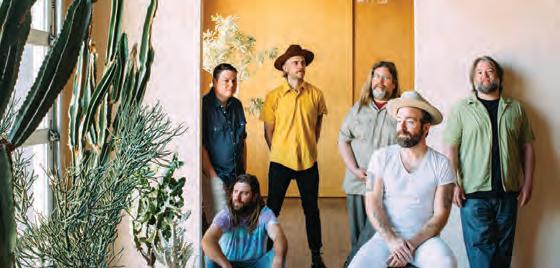



We offer travelers an incomparable guest journey—from seamless browsing and booking to easy check-in and the transcendent experience of a luxury vacation in the mountains. We offer homeowners peace of mind with exemplary home management—whether you’re looking to maximize seasonal revenue or elevate the attention your home receives in our challenging alpine environment. The home you

Share the epic beauty and wonder of mountain life.
Reach out to the Business Development team to learn more about Natural Retreats’ rental management services.
NRBusinessDevelopment@NaturalRetreats.com NaturalRetreats.com/homeowners
PARK CITY, UT | BIG SKY, MT | SUN VALLEY, ID | SUMMIT COUNTY, CO
MAMMOTH LAKES, CA | TAOS, NM | WHITEFISH, MT | LAKE TAHOE, CA
love. The company you trust.
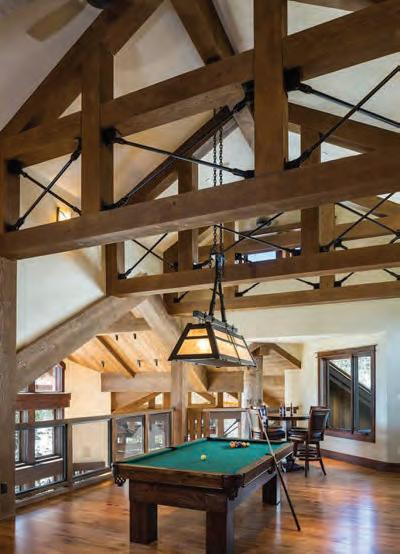











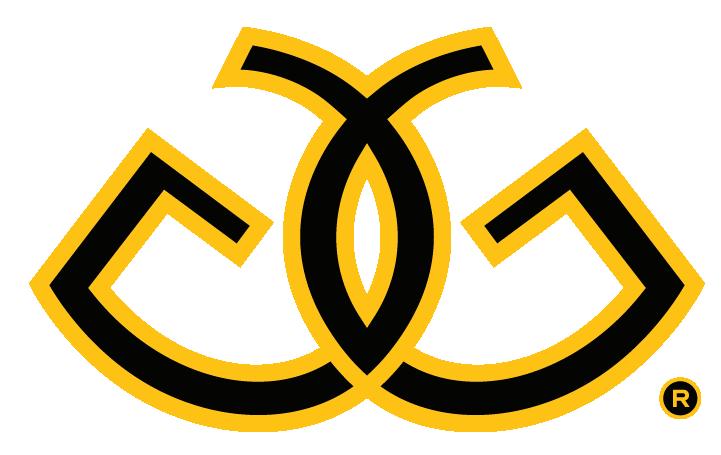












169 ARTISAN STRUCTURAL LOG AND TIMBER FRAMING whEre fĦRm mEEtS fĨnCTIĦn QUALITY MATTERS. GIVE US A CALL TODAY! 406.587.1000 | www.gallatinglassworks.com @gallatinglassworks


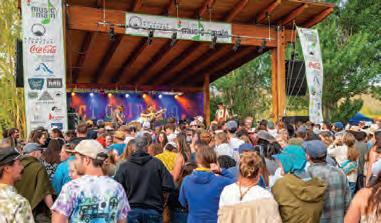


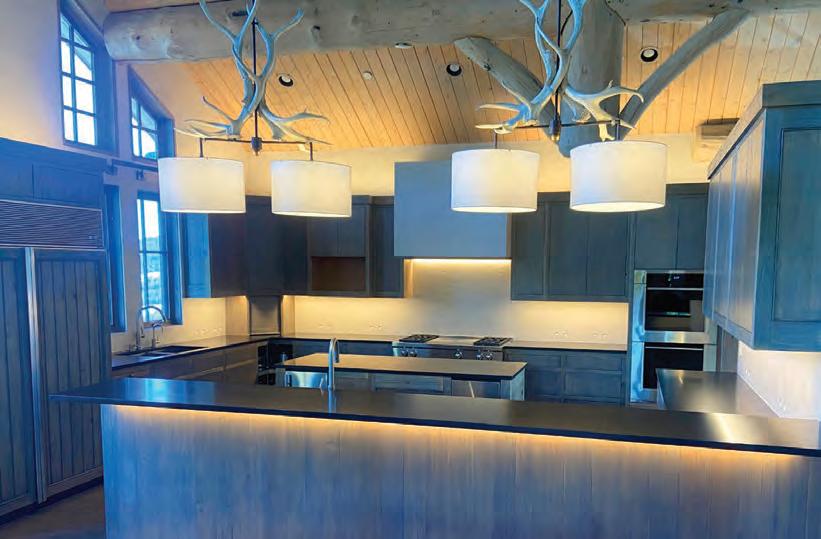
Shefter FoundationFamily GENEROUSLY PRESENT tetonvalleyfoundation.org thursdays Stay & Play in Teton Valley! Enjoy Community Supported Music! June 20 ZIVANAI MASANGO & ZIMBIRA Calle Mambo June 27 AJ LEE & BLUE SUMMIT One Ton Pig July 11 JOE HERTLER & THE RAINBOW SEEKERS Triple Lindy July 18 THE DEADLOCKS WITH SPECIAL GUEST Batdorf & The Brother Wolf July 25 THE RUMBLE FEATURING CHIEF JOSEPH BOUDREAUX JR. Cache Funk Music August 1 NO SUCH ANIMAL Box Elder August 8 MOUNTAIN GRASS UNIT Darrell Scott August 15 MIKE LOVE Chanman Roots Band 2024 LINEUP ©LINDA M SWOPE ©LINDA M SWOPE Specializing in new construction and custom remodels Big Sky, MT | (406) 581-1870 | jarviscustombuilders.com
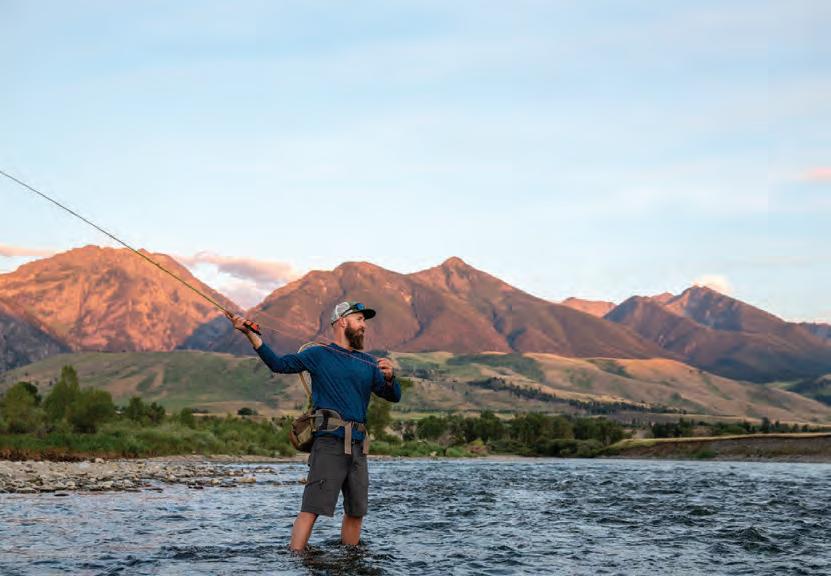
Outlaw Realty is a boutique brokerage with offices in Bozeman and Big Sky. With over 25 years of experience and sales that exceed $2.5 billion, we have proven to be market experts in the SouthwestMontana region.
As you pursue the purchase or sale of a property, you can expect professionalism, dedication, and a trusted partner, offering you the expert representation you need.
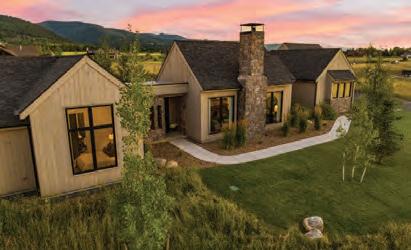


172 WWW.OUTLAW.REALTY | 406.995.2404 Real Estate Redefined RECENTLY SOLD Rainbow Ranch, Big Sky MT 6 Bed | 4 Bath | 3,808 sqft Listed at $3,700,000 RECENTLY SOLD Hyalite Ranch, Bozeman MT 4 Bed | 5 Bath | 4,093 sqft Listed at $2,800,000
YOUR
SOUTHWEST MONTANA REAL ESTATE EXPERTS


$10 is only for online account openings, a free gift will be given for in branch openings. $10 will be deposited into new account within 1-2 business days of completion. Bank rules and regulations apply.


OURBANK.com
LEARN MORE
online in as little as your new account.

THIS ADVERTISING MATERIAL IS BEING USED FOR THE PURPOSE OF SOLICITING THE SALE OF FRACTIONAL OWNERSHIP INTERESTS. This advertisement is neither an offer to sell nor a solicitation to buy fractional ownership interests to residents in any state or jurisdiction in which registration requirements have not been fulfilled. The Inn at Montage Big Sky is currently under development. Images depicted herein are based upon current development plans and are subject to change without notice. Obtain the Property Report required by Federal law and read it before signing anything. No Federal agency has judged the merits or value if any, of this property. This is not an advertisement or solicitation to purchase or sell property in states where prohibited by law. The resort project described herein (the “Resort”) and the residential units located within the Resort (the “Residential Units”) are not owned, developed, or sold by Montage Hotels & Resorts LLC or its affiliates or their respective licensors (collectively, “Montage”) and Montage does not make any representations, warranties or guaranties whatsoever with respect to the Residential Units, the Resort or any part thereof. CH SP Acquisition LLC uses the MONTAGE brand name and certain MONTAGE trademarks (collectively, the “Operator Trademarks”) in connection with the sales and marketing of the Residential Units in the Resort under a limited, non-exclusive, non-transferable and non- sublicensable license from Montage Hotels & Resorts LLC. The foregoing license may be terminated or may expire without renewal, in which case neither the Residential Units nor any part of the Resort will be identified as MONTAGE branded project or have any rights to use the Operator Trademarks. WARNING: THE MONTANA BUREAU OF REAL ESTATE HAS NOT INSPECTED, EXAMINED OR QUALIFIED THIS OFFERING.

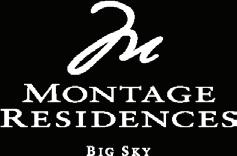
T HE I NN R ESIDENCES
Ownership at The Inn is offered in deeded, one-quarter ownership interests. These 32 fully-furnished three- and four-bedroom Residences provide a unique second home ownership opportunity in a luxury Residence steps from Montage Big Sky. Connected by an underground pathway, owners will enjoy access to the resort's many amenities including five dining establishments, Signature Spa Montage, a bowling alley, golf and sports simulator room, and indoor and outdoor pools, plus ski-in/ski-out access to Big Sky Resort.
Owners will also enjoy the benefits of membership at Spanish Peaks Mountain Club, which includes private concierge services, an 18-hole Tom Weiskopf Championship Golf Course, a new 10-hole Par 3 course, clubhouse, and a year-round calendar of special, member-only events and experiences.

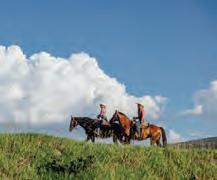


MONTAGERESIDENCESBIGSKY.COM 406.995.6333 INFO@BIGSKY.COM
32 RESIDENCES . 3 AND 4 BEDROOMS DEEDED QUARTER-OWNERSHIP INTERESTS BEGINNING AT $1,500,000



LAST LIGHT
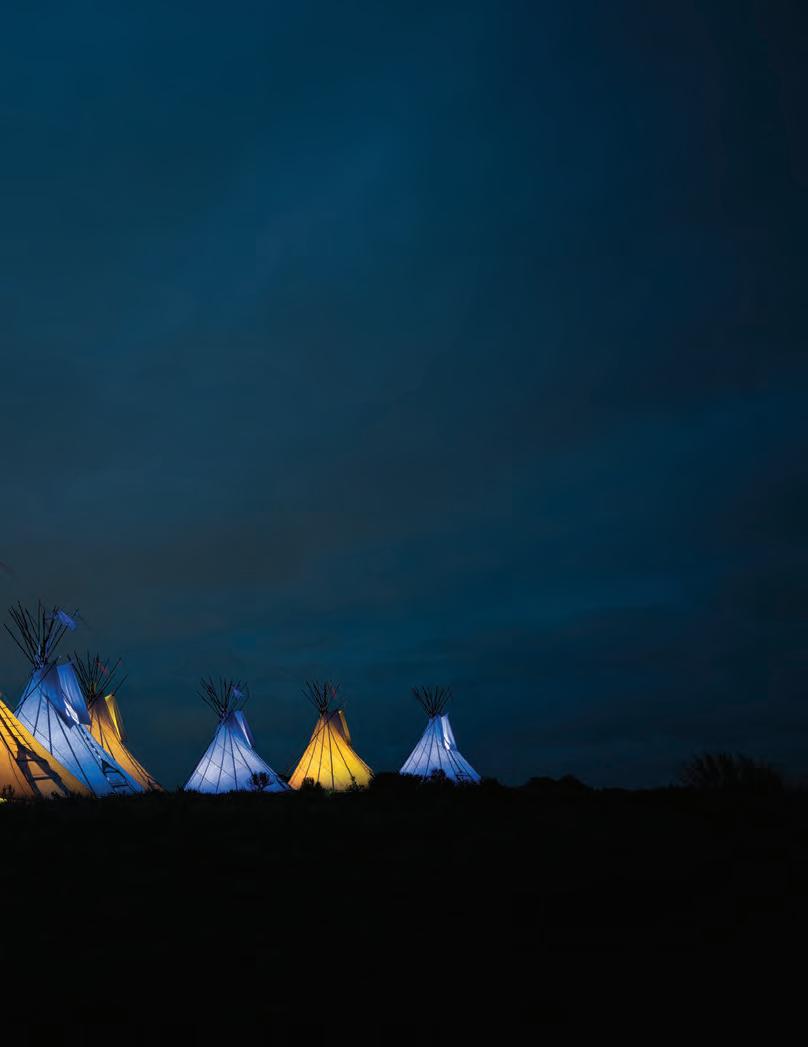
In October 2021, seven illuminated teepees were raised on Peets Hill in Bozeman to shed light on the area’s original residents and prevent further erasure of Indigenous cultures.
Lighting of the Teepees: Illuminating Indigenous Peoples’ Day was a partnership between the Pretty Shield Foundation, Mountain Time Arts, the Rocky Mountain Tribal Leaders Council and the City of Bozeman, and the teepees looked over the city for 10 days surrounding Indigenous Peoples’ Day.
The photographer, Jade Snell, took this image after the sun went down while the moon gave the clouds a mysterious blue light. As he watched, Jade, a direct descendant of Crow tribe members Goes Ahead and Pretty Shield, wondered what his ancestors might have used those glowing teepees for—maybe to celebrate, or for war, or to welcome their tribe members home.
Photo by Jade Snell


EXPERT CANCER AND HEMATOLOGY CARE IN SOUTHWEST MONTANA
BOZEMAN HEALTH CANCER CENTER
During your cancer journey, our team is with you through every peak, valley and plateau. Our dedicated team of experts, cutting-edge technology, and heartfelt approach seamlessly blend state-of-the-art advancements with a personalized touch. We aim to help our patients stay close to home throughout their cancer care so that they can focus on getting well and healing with family, friends, and local resources around them. Learn more at BozemanHealth.org/cancer Sign up for our monthly email newsletter for hiking recommendations, volunteer opportunities, and to learn how you can help us keep Montana wild. We protect what makes Montana special Visit wildmontana.org/signup





179



love being home with Gallatin Valley Furniture 923 N. 7th Ave. Bozeman, MT | 406.587.5423 | GV.Furniture Furniture | Rugs | Art | Accessories | Window Treatments | Lighting | Outdoor E S T . 1 9 4 6



























































































































 Top right: Tilleman and Arena cruise through a rural landscape on their gravel bikes. The miles fly by when you blindly follow AI. Photo by Charlie Stemen Right: Arena and Tilleman are forced to attempt a campfire blueberry cobbler. Meanwhile, Stemen hid a Bluetooth speaker in the woods and later played grizzly bear noises—a prank ChatGPT added to the trip the night before departure. Photo by Charlie Stemen
Top right: Tilleman and Arena cruise through a rural landscape on their gravel bikes. The miles fly by when you blindly follow AI. Photo by Charlie Stemen Right: Arena and Tilleman are forced to attempt a campfire blueberry cobbler. Meanwhile, Stemen hid a Bluetooth speaker in the woods and later played grizzly bear noises—a prank ChatGPT added to the trip the night before departure. Photo by Charlie Stemen




















 Navigating with paper map while co-guiding a packraft trip in the eastern Alaska Range with Andrew Skurka (center), August 2011. Photo courtesy Thomas Turiano
Turiano on the summit of Hoback Peak, Wyoming Range, July 2014. Photo courtesy Thomas Turiano
Navigating with paper map while co-guiding a packraft trip in the eastern Alaska Range with Andrew Skurka (center), August 2011. Photo courtesy Thomas Turiano
Turiano on the summit of Hoback Peak, Wyoming Range, July 2014. Photo courtesy Thomas Turiano









































 The alpha male of the Canyon wolf pack howls in Yellowstone National Park’s Lower Geyser Basin. Photo by Jim Peaco / NPS
The alpha male of the Canyon wolf pack howls in Yellowstone National Park’s Lower Geyser Basin. Photo by Jim Peaco / NPS




 Spectrograms show a visualization of sounds from Yellowstone wolves. The first image (left) shows a full month of vocalizations. The next image (center) acts almost like a dictionary, showing different types of vocalizations. The final image (right) shows four different spectrograms from four different wolf packs. Images Courtesy of Jeff Reed
Top: Dr. Jeff Reed holds the GrizCam, attached to its battery component. Photo by Julia Barton Above: Reed analyzes a spectrogram of a wolf chorus howl recorded in Yellowstone National Park in January, 2024. Photo by Julia Barton
Spectrograms show a visualization of sounds from Yellowstone wolves. The first image (left) shows a full month of vocalizations. The next image (center) acts almost like a dictionary, showing different types of vocalizations. The final image (right) shows four different spectrograms from four different wolf packs. Images Courtesy of Jeff Reed
Top: Dr. Jeff Reed holds the GrizCam, attached to its battery component. Photo by Julia Barton Above: Reed analyzes a spectrogram of a wolf chorus howl recorded in Yellowstone National Park in January, 2024. Photo by Julia Barton

 A wolf portrait taken in Yellowstone National Park. Photo by Jacob W. Frank, NPS
A wolf portrait taken in Yellowstone National Park. Photo by Jacob W. Frank, NPS

 Reed lives and works in Paradise Valley, Montana near the the North Entrance to Yellowstone National Park. Photo by Julia Barton
Reed lives and works in Paradise Valley, Montana near the the North Entrance to Yellowstone National Park. Photo by Julia Barton























 By Taylor Owens
By Taylor Owens



































































 Mike Beck stands outside of his garage. Inside are a multitude of collectables, including his motorcycle.
Mike Beck stands outside of his garage. Inside are a multitude of collectables, including his motorcycle.

 Beck visits with two colts in their corral near Milligan Canyon in southwest Montana.
Beck visits with two colts in their corral near Milligan Canyon in southwest Montana.

















































































































